Explained in Detail: Scottish Tartan Plaids & Classic Tweed Fabrics || 9 Iconic British Brands
This article provides a detailed introduction to traditional British patterns including Scottish Tartan, Prince of Wales Check (also known as Glen Plaid), Fair Isle, Gingham, and Argyle. It also covers common Tweed patterns such as Herringbone and Houndstooth, along with examples of brands that specialize in producing these classic patterns.
Since these patterns are uniquely British classic elements, many brands skilled in designing these patterns originate from Britain. For example, Burberry, Vivienne Westwood, Barbour, Barrie, Johnston of Elgin, Ballantyne, Pringle of Scotland, Jamieson's of Shetland, Harley of Scotland are all renowned for their pattern designs.
As mentioned in 17 Top Luxury Men's Suit Brands for Gentlemen, brands like Huntsman, Anderson & Sheppard, and Kiton also offer excellent patterned suits. Additionally, international luxury brands such as Miu Miu, Dior, Ralph Lauren, and Chanel often incorporate these patterns into their designs.
Patterns were particularly popular in the 20th century, especially during the 1980s and 1990s. In British films set during WWI and WWII, Tartan and Tweed frequently appear. For example, in "Downton Abbey," the costume design and Tweed jackets worn by cast members showcase the charm of these classic elements.
The following still is from "Another Country," a film inspired by Guy Bennett, one of the Cambridge Five during WWII, depicting life at a British boarding school in his youth. The costumes in the film are very representative of the era.
Another WWII-era film, "The English Patient"
Why these two films? Because they both feature Colin Firth! He's incredibly handsome and completely matches my aesthetic preferences. I've only recently discovered this treasure of an actor, which has been such a delightful surprise. The 80s and 90s were his peak in terms of looks, and I've been watching his old films lately.
From the 1980s onwards, minimalism, deconstructivism, and modernism gradually influenced the fashion world. From the 90s to present, these vintage patterns have become less popular, replaced by simple solid colors and the dominance of minimalist and quiet luxury styles. This style transformation is reflected not only in films and television but also in real life, where solid colors have become mainstream.
Even brand logos have been influenced by the digital revolution, trending towards simplified and basic lettermark designs. For instance, the video below was taken during my visit to Beijing Financial Street Mall last month, showing how almost all brand logos outside feature simple letter designs.
Tartan
Tartan is the most diverse and historically rich among all these patterns, with each tartan having its own family history. Tartan originated in the Scottish Highlands and can be traced back to the 16th century. It's not just a fabric but a symbol of identity, used in Scottish clan emblems, military uniforms (such as kilts), and ceremonial occasions. Traditional Tartan was woven with wool, while modern versions incorporate synthetic fibers, silk, and cashmere.
Historical Events Related to Tartan: In 1707, Scotland, after numerous defeats, united with England to form the United Kingdom of Great Britain. However, some Scots continued to fight for independence, forming civilian military forces. These forces would wear tartan as a symbol of patriotism, resistance, and independence. During this time, tartan began to take on military significance as a symbol of distinguishing friend from foe.
In 1746, the United Kingdom passed the Dress Act, which prohibited civilians except the wealthy, nobility, and military from wearing tartan clothing. This separated many people from their right to wear tartan, disconnecting it from common civilians while strengthening its association with nobility and wealth, eventually developing into a symbol of class and fashion. By the 1790s, some nobles had begun designing personal tartan patterns to showcase their uniqueness and status.
Classic Tartans use natural dyes to create dark tones (such as indigo, green, and red), which is why traditional Scottish patterns are predominantly dark-colored, while modern Tartans incorporate brighter colors.
The top left image shows the corresponding locations and tartan styles of various Scottish clans: For example, the Gordon Tartan features predominantly dark green and blue with yellow lines, representing the Gordon clan.
Among Tartan patterns, "Blackberry" and "Pride of Scotland Gold" should be familiar to Chinese people, as these patterns were commonly found on bedsheets in previous years.
Anyone can register a new tartan pattern, but the primary requirement is that it must not duplicate existing registered patterns and should have distinct characteristics. Currently, the Scottish Register of Tartan's database contains over 7,000 Tartans, so your innovative pattern might already exist in this database.
Today, Lochcarron of Scotland, established in 1892, is one of the world's largest Tartan manufacturers, offering over 500 different patterns and specializing in both classic and custom Tartans. Lochcarron produces fabrics, clothing, and home goods, and manufactures many Scottish clans' official Tartans.
Below are some of the most classic Scottish patterns:
Royal Stewart Tartan
Predominantly bright red with yellow lines, this is the official tartan of the British Royal Family. While widely known for its vibrant colors and royal heritage, it has actually been accepted as a "universal tartan" that anyone can wear.
The Stewarts were a prominent royal family in British history, ruling Scotland from 1371 to 1714, and England and Ireland from 1603 to 1714.
The Stewart family originated in Brittany, France, in the 11th century. In the early 12th century, family members moved to Britain, where one was appointed as Royal Steward by the Scottish king. This position became the source of the family name, originally spelled "Stewart," later changed to "Stuart" due to Mary Queen of Scots' French influence.
Scottish Rule: In 1371, Robert II became Scotland's first Stewart king, beginning the family's rule over Scotland. Over the following centuries, Stewart monarchs played crucial roles in Scottish history.
Union of England and Scotland: In 1603, Scottish King James VI inherited the English throne, becoming James I, achieving a personal union between England and Scotland. During this period, the Stewarts became the first royal family to successfully rule the entire British Isles.
Religious and Political Conflicts: During the Stuart dynasty, Britain experienced multiple religious and political conflicts. The family's Catholic background created tensions with the predominantly Protestant English population, leading to several revolutions and the overthrow of two monarchs. These conflicts led to the gradual increase of parliamentary power, making Britain one of the earliest parliamentary nations.
End of the Dynasty: In 1714, Queen Anne died without heirs, ending the Stuart dynasty. The crown passed to her distant relative, George I of the German Hanoverian family, beginning a new dynasty (1714-1901).
House of Windsor: 1917-present: During World War I, to avoid German associations, George V changed the royal surname from Saxe-Coburg and Gotha to Windsor.
Before the Stewarts came the famous House of Tudor (1485-1603), from Henry VII to Elizabeth I, during which England rose to global prominence. Earlier still were the Houses of Lancaster and York, whose rivalry over the throne in the latter half of the 15th century led to the Wars of the Roses, named for their emblems: York's white rose and Lancaster's red rose.
I didn't expect writing about tartan would help me understand the background of British historical dramas!
MacGregor Tartan
Another red-based tartan, but with white lines and fewer divisions than the Royal Stewart, making it a simpler pattern. Red MacGregor Tartan: Predominantly black at intersections Hunting MacGregor Tartan: Green at intersections
MacGregor and Campbell are Scotland's largest, oldest, and most historically influential clans. The MacGregor clan still holds clan gatherings and maintains its own website.
The MacGregor clan traces its origins to the 9th century, claiming descent from King Alpin, considered Scotland's first king. The clan name comes from the Gaelic "Mac Griogair," meaning "Son of Gregor." Legend says Gregor was King Alpin's son.
In the early medieval period, the clan's power grew, but their lands were often challenged and encroached upon by powerful neighbors like the Campbell clan due to their geographic proximity.
In the 14th and 15th centuries, the MacGregor clan's position weakened, especially in land disputes with the Campbells. In 1603, King James VI of Scotland outlawed the MacGregor surname, accusing them of robbery, rebellion, and violent conflicts. Clan members were forced to change their names or use aliases to avoid persecution. Using the MacGregor name became a crime in Scotland, with clan members being hunted, exiled, or even sentenced to death.
The clan's most famous member was Rob Roy MacGregor (1671-1734), a legendary Highland hero known as the "Scottish Robin Hood." Rob Roy became famous for helping the poor, resisting oppression, and his struggles against the British government and Campbell clan. His story was later adapted into literature and film, further enhancing the MacGregor clan's reputation.
In 1774, the ban on the MacGregor surname was officially lifted. The clan gradually restored its prestige and once again became an important representative of Highland Scottish culture.
Campbell Tartan
The Campbell clan is one of Scotland's most powerful and influential families, with a long history closely tied to Scotland's political, military, and social development. The "Black Watch" Tartan was originally a Campbell clan pattern, later adopted by the Scottish military and became the uniform pattern of the famous Black Watch Regiment.
The Campbell clan has multiple Tartan variants for different occasions. Campbell tartan is the most commonly encountered tartan pattern, with many derivatives, and is the most widely popular.
In the late medieval period, the Campbell clan rose to prominence through strategic marriages with other clans, loyalty to the Scottish crown, and territorial expansion.
In the 14th century, clan leader Colin Campbell was granted the lands of Argyll and became the Earl of Argyll. By the 16th and 17th centuries, the Campbell clan had become one of Scotland's most powerful families.
The modern Campbell clan remains an important part of Scottish nobility, with the Duke of Argyll as the clan chief. Clan members are now spread globally, with many modern Scottish communities still using Campbell Tartan as a cultural symbol. Each year, the Campbell clan holds gatherings at Inveraray Castle in Argyllshire to commemorate their history and culture.
Burberry
Burberry's invented Nova Check tartan has become the brand's signature element. Burberry built a luxury brand on tartan and trench coats, exemplifying a brand with core signature products. Even after 100 years, consumers still buy Burberry trench coats, instantly recognizing the Nova Check pattern.
When a brand excels in one category of outerwear like coats, suits, or jackets, it establishes strong brand power. Burberry is one example, as are MaxMara and the recently popular Barbour. In contrast, smaller items like shirts, t-shirts, and sweaters rarely achieve the same market impact as outerwear.
Burberry's logo has also trended toward simplification
Vivienne Westwood
When discussing tartan, Vivienne Westwood must be mentioned for transforming tartan into punk fashion. Scottish tartan, along with bondage, safety pins, chains, and corsets, became Vivienne Westwood's punk signature elements. The combination of rebellious punk culture with traditional Scottish Tartan reflects Vivienne Westwood's logo meaning: the fusion of tradition and future.
Vivienne Westwood's logo has changed little, maintaining its Saturn ring and Gothic lettering
Barbour
I'll write more about Barbour as it's less well-known in China compared to Burberry and Vivienne Westwood, though it has gained popularity in the last 2-3 years. Known for waterproof, durable hunting oil wax jackets, each hunting jacket, like Burberry, features their own designed tartan lining.
Barbour's tartans feature countryside-style colors, predominantly brown and green.
Barbour was founded by John Barbour in 1894 in South Shields, Northeast England, initially providing waterproof clothing for North Sea fishermen, dock workers, and sailors. They started by manufacturing waterproof oilcloth clothing designed for harsh marine conditions.
In the early 20th century, Barbour expanded from industrial use to countryside activities like hunting and horse riding. In the 1930s, they launched their first motorcycle clothing line, becoming a representative brand in British motorcycling. During WWII, Barbour designed and manufactured durable military jackets for British forces. Barbour has received multiple Royal Warrants, including from Queen Elizabeth II, the Duke of Edinburgh, and Prince Charles, further establishing its premium brand status.
Barbour's interesting slogan is "the best British clothing for the worst British weather," showing how clothing should be adapted to local climate, just like the previous article about Italian versus English suits, one being lightweight and the other heavyweight.
Barbour's past logos included three royal warrant symbols, but now features only the Barbour lettering. Barbour's three royal warrant badges from left to right represent: Queen Elizabeth II - Left emblem: represents the royal warrant from Queen Elizabeth II. Duke of Edinburgh - Middle emblem: represents the late Prince Philip, Queen Elizabeth II's husband. Prince of Wales - Right emblem: represents Prince Charles (now King Charles III, then Prince of Wales).
Now Barbour has simplified to just lettering on the right
Anderson & Sheppard
Anderson & Sheppard also holds a royal warrant from the Prince of Wales
Savile Row's Anderson & Sheppard and Huntsman particularly favor tartan patterned suit styles.
Huntsman
Huntsman suits are known for their form-fitting X-shaped cut ("Nipped Waist"), with structured shoulders and a tapered waist, displaying perfect proportions. Compared to Tom Ford's black and grey tones, they use various plaids and, influenced by hunting attire, feature more vintage styles and tartan elements.
Gieves & Hawkes
This Savile Row bespoke tailoring brand was missed in the previous article, so here's an addition.
Gieves & Hawkes traces its history to 1771, when Thomas Hawkes founded it in London, starting with military officer uniforms. In 1912, Hawkes, focusing on military uniforms, merged with Gieves, which specialized in naval uniforms, officially forming Gieves & Hawkes. The brand received multiple royal warrants in the late 19th and early 20th centuries, becoming the royal family's official tailor, creating bespoke clothing for many royal family members and international celebrities, including King Charles III, Prince William, Sean Connery and Daniel Craig's James Bond, and Colin Firth for the Oscar ceremony.
They hold warrants from Queen Elizabeth II and the Prince of Wales
Currently, they offer Bespoke Line, Made-to-Measure Line, ready-to-wear, and accessories collections. Gieves & Hawkes suits are predominantly solid colors, with fewer tartan patterns like those shown below, and the craftsmanship of patterned suits is slightly inferior to solid ones. Celebrity bespoke orders mainly focus on solid color series.
Since 2012, Gieves & Hawkes has been owned by Hong Kong's Trinity Group, which is part of Shandong Ruyi Group. Thus, the brand has distribution channels in China, though mostly for ready-to-wear.
Chanel
Since the black and white photo era, many Chanel garments have featured various tartan patterns, paired with Chanel's signature jacket style, and colorful plaids have continued intermittently.
Barrie
As Chanel's Scottish cashmere brand, it follows Chanel's design approach with colorful tartans, including glen plaid, herringbone, houndstooth from the tweed family, as well as gingham checkered and argyle diamond patterns.
Johnston of Elgin
Johnstons of Elgin is a British luxury cashmere brand established in 1797, with 226 years of history. The brand has been supplying cashmere products to the British Royal Family since 1851, spanning over 170 years.
The brand is renowned for producing high-quality cashmere and wool products, covering both woven and knitted items. The company holds three royal warrants for manufacturing estate tweed (estate tartan style coats and jackets), knitwear (including cashmere sweaters, cardigans, hats, gloves), and woven accessories (scarves, shawls, blankets). This categorization is notably professional.
Besides selling under their own brand, Johnstons of Elgin supplies products to luxury fashion houses including Hermès, Chanel, Louis Vuitton, Ralph Lauren, and Burberry.
Production is split between two Scottish factories: a vertically integrated weaving mill in Elgin and a knitwear factory in Hawick. The brand's distinctive feature is its vertically integrated production model, handling everything from raw material selection to spinning and weaving in their Scottish facilities. This model ensures high quality and consistency.
The three symbols in the image represent Johnstons of Elgin's important certifications and honors:
Certified B Corporation
Royal Warrant (By Appointment to HRH The Prince of Wales, Duke of Rothesay)
The King's Awards for Enterprise: International Trade 2024
Johnston of Elgin's best-selling and most representative products are their woven tartan scarves, shawls, and blankets.
Johnston of Elgin's tartan characteristics aren't particularly distinctive. They use Stewart and Gordon tartan styles and have created their own, but overall don't emphasize any particular pattern. However, they value tartan enough to have a dedicated webpage collecting tartan-style scarves.
Their estate tweed series is primarily 100% lambswool, with fewer tartan patterns and more herringbone, glen plaid, houndstooth, and Donegal tweeds, which will be detailed below. The left two pieces are glen plaid (Prince of Wales check), the right is houndstooth:
Herringbone pattern:
Johnston of Elgin's cashmere knitwear series occasionally features Fair Isle patterns:
More often, they produce minimalist knitted cashmere sweaters and trousers like N.Peal
As a cashmere brand, I quite like Johnston of Elgin. Their value for money is similar to N.Peal, though in mainland China, Johnston of Elgin primarily sells scarves.
Argyle
Argyle consists of symmetrically arranged diamonds and diagonal lines, often viewed as an important element of British, academic, and vintage styles. The three pieces below are from Pringle of Scotland's website:
Below is from Ballantyne. Comparing the two, Ballantyne's colors are brighter and fresher, removing the white lines for a cleaner look. Pringle of Scotland's colors are darker and more subdued, more traditionally classic:
Argyle patterns are most famous in Pringle of Scotland and Ballantyne, both Scottish cashmere brands with 200 and 100 years of history respectively. Both brands known for their iconic Argyle diamond patterns are now transforming - Pringle of Scotland has started producing solid-color cashmere sweaters, while Ballantyne has adopted younger colors and expanded into bags, pants, coats, and other categories and materials, becoming more commercialized.
Between the two, I prefer Pringle of Scotland for being more traditional and maintaining their cashmere principles.
Pringle of Scotland
Pringle of Scotland is not only a royal warrant holder with Her Majesty's certification but also a regular presence among celebrities and noble schools. Its pattern originated from the 17th century Scottish Argyll clan tartan and was developed by the century-old British knitwear brand after WWI.
Founded in 1815, Pringle of Scotland is one of the world's oldest existing luxury brands. They pioneered the concept of "Knitwear" by applying knitting to outerwear, changing the landscape of both Scottish and global sweater industries.
Adapting to current trends, Pringle of Scotland has introduced many simple solid-color pieces, all designed as coordinated sets:
Ballantyne
Founded in Scotland in 1921, although also a Scottish cashmere brand, Ballantyne was acquired by an Italian investment company in 2004 and returned to the Italian market with a high-end positioning. Besides maintaining traditional British aesthetic designs like diamond patterns, Ballantyne has recently focused on "smart cashmere" and innovative dyeing and knitting technologies. Additionally, the brand occasionally releases collaborative collections with other designers.
Fair Isle
Fair Isle is the name of a small island in Scotland's Shetland Islands, as well as a traditional knitting technique and pattern style named after it. Fair Isle patterns typically feature geometric designs such as diamonds, stars, and crosses, arranged in stripes. Representative brands include Jamieson’s of Shetland and Harley of Scotland, both focusing on wool products.
N.Peal founder visited Shetland during wartime, later transitioning N.Peal into a cashmere-focused brand.
Occasionally, Pringle of Scotland and Johnstons of Elgin also incorporate Fair Isle patterns in their designs.
In the 1920s, King Edward VIII (later the Duke of Windsor) appeared publicly wearing a Fair Isle sweater, popularizing the style in Britain and beyond. The Glen Plaid pattern, introduced later, also owes its global popularity to him.
Jamieson’s of Shetland
The Jamieson family has been involved in wool production since 1893. The brand has maintained a five-generation family tradition, focusing on creating knitwear using local Shetland wool and offering wool yarns.
As one of the origins of Fair Isle knitting, Jamieson’s preserves the classic pattern designs and employs traditional knitting techniques, showcasing the local Scottish cultural heritage.
Harley of Scotland
Harley of Scotland sweaters are made from ultra-soft, fine wool, with some items crafted from cashmere. They source wool beyond Shetland.
Founded in 1929 by Peter Harley, the brand initially focused on wool and yarn production. Located in Moray in northern Scotland, the family-run brand continues to uphold high standards of quality and craftsmanship. Compared to the traditional Jamieson’s of Shetland, Harley of Scotland has a more international outlook and broader brand recognition.
Harley of Scotland uses seamless knitting technology, reducing seams to enhance comfort and ensuring lightweight knitwear.
In terms of design, their colors are fresher and brighter, appealing to a younger audience.
They also offer minimalist solid-color sweaters.
Tweed
Tweed is usually made from 100% wool, sometimes blended with other fibers. The fabric has a rough surface and a relatively coarse texture, softening over time with wear. Initially, tweed was used by local farmers as workwear to withstand harsh weather. By the 19th century, it gained popularity among the English nobility for activities such as hunting and horseback riding. Notable tweed fabric brands like Harris Tweed began promoting it in the late 19th century, establishing it as a symbol of luxury. Harris Tweed is renowned for its handcrafted production and Protected Geographical Indication (PGI) status.
Tweed often uses natural dyes, resulting in soft colors and various classic patterns, such as herringbone, Glen Plaid (Prince of Wales check), and houndstooth.
Donegal tweed deserves special mention, characterized by multicolored speckles in the fabric. Its textures may include herringbone, tartan, houndstooth, or plain solid colors, with the colorful speckles distributed randomly.
Compared to modern solid-color suits like those by Akris . I prefer tweed patterns for a more casual look. While most are made from 100% wool, some brands also produce cashmere versions. For example, Celine has a classic Prince of Wales check suit made of cashmere.
These patterns are typically used in suits and coats. As mentioned in 17 Top Luxury Men's Suit Brands for Gentlemen, many brands include suits with these patterns. When it comes to tweed, the most iconic name remains Chanel.
Glen Plaid
The name Glen Plaid comes from a valley in the Scottish Highlands called Glenurquhart, where wool was originally used to adorn hunters. Later, it was frequently used by the Prince of Wales (Edward VIII/Duke of Windsor) in suits and coats, gaining popularity and becoming known as the "Prince of Wales Check."
Of all the tweeds, this is my favorite, as it combines the vintage charm of tartan with a simpler, more understated style.
Kiton
Ralph Lauren
Herringbone
Herringbone is a weaving pattern where short stripes are arranged in a crisscross manner to form a V or zigzag shape. Some variations of Herringbone include finer stripes and checkered patterns.
The inspiration for Herringbone comes from Roman brickwork known as Opus Spicatum.
The most classic version of Herringbone is in gray, with variations in thickness. Very fine Herringbone can only be seen up close.
Gieves & Hawkes
Tom Ford
Brunello Cucinelli
Barrie
Barrie, the Scottish cashmere brand under Chanel.
Houndstooth
Houndstooth, also known as dogtooth, is a classic textile pattern, typically in black and white, resembling interlocking dog teeth.
Personally, I'm not a fan of Houndstooth, as it can feel overwhelming and gives me a sense of visual clutter. Compared to Herringbone, it feels a bit too bold.
Harris Tweed has also released various Houndstooth patterns.
Dior
Dior is one of the brands that frequently features Houndstooth patterns, starting from the 1960s, with a focus on classic black and gray.
Chanel
Chanel has featured Houndstooth designs at least since the 1950s, with occasional releases in later years.
Chanel's cashmere brand Barrie has also released Houndstooth designs.
Gingham
Gingham, also known as checkered pattern, is typically woven with two colors (e.g., white and blue or red) to create small or large checks. Its history dates back to the 17th century, originating in Southeast Asia before becoming popular in Europe and the United States. Due to its lightweight, durable, and easy-to-clean properties, Gingham has been widely used in shirts, dresses, tablecloths, curtains, and more.
Among all patterns, I find Gingham the most inexpensive-looking and unattractive. It immediately evokes the image of mid-20th-century American housewives.
Miu Miu and Prada are fans of the Gingham pattern.
A slightly better-looking version is this Gingham from Barrie. The colors are well-chosen, and the larger checks make it a bit more acceptable.
Epilogue
This article provides a detailed summary of common checkered and patterned designs. Personally, I enjoy these patterns for their warmth, relaxed vibe, and soft colors, which lack the cold and distant feel of extreme minimalism. These patterns are perfect for autumn and winter, whether it's tartan scarves, Argyle or Fair Isle cashmere sweaters, or Glen Plaid suits and coats.
After writing this, I plan to pay more attention to suits, coats, and sweaters featuring these patterns during my shopping trips. A wardrobe should not consist only of solid colors—it’s too monotonous. Adding a few vintage, colorful pieces would be great.
I’m considering adding a colorful checkered cashmere sweater from Barrie, a plaid scarf from Johnston of Elgin, an Argyle-patterned cashmere sweater from Pringle of Scotland that can be worn as an outer or inner layer, and perhaps a Fair Isle cashmere piece from whichever brand makes a good one. Among all the patterns introduced in this article, I’ll get one of each except for the overly dense or plain Herringbone, Houndstooth, and Gingham.
A Burberry trench coat and a Barbour waxed hunting jacket are must-haves for the future—they’re just too classic.
Trust in the taste of British aristocrats and Italian old money. These people know what’s best. Unfortunately, the aesthetics and design sense of Chinese people have been stunted since modern history.
WeChat ID : pamperherself





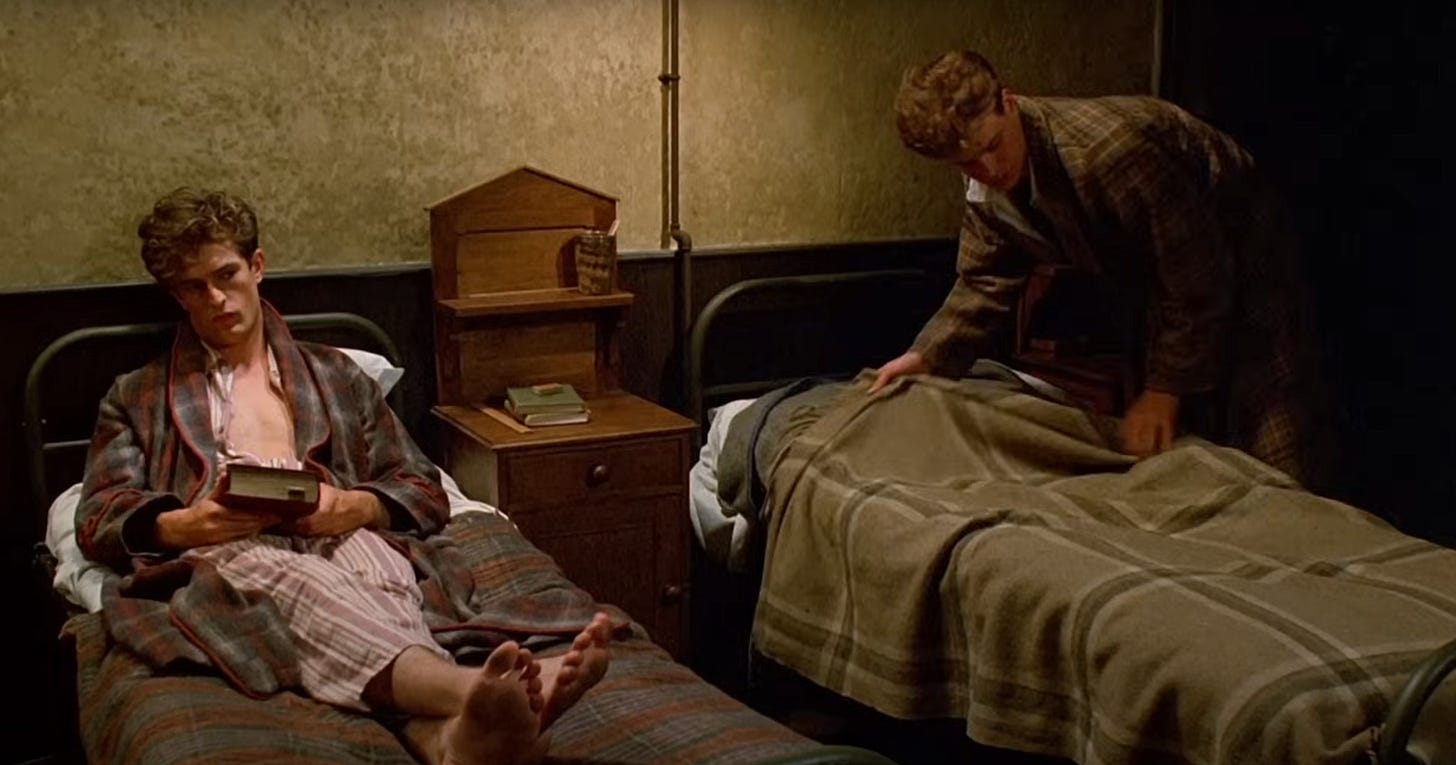
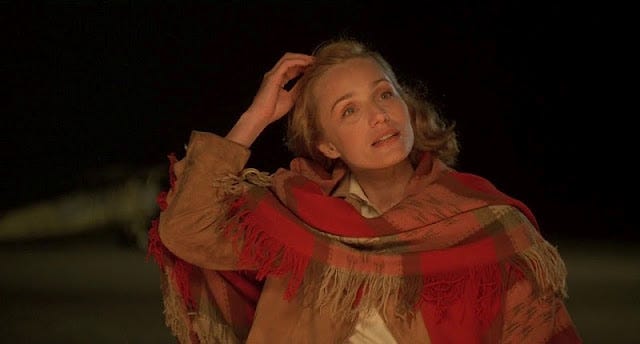
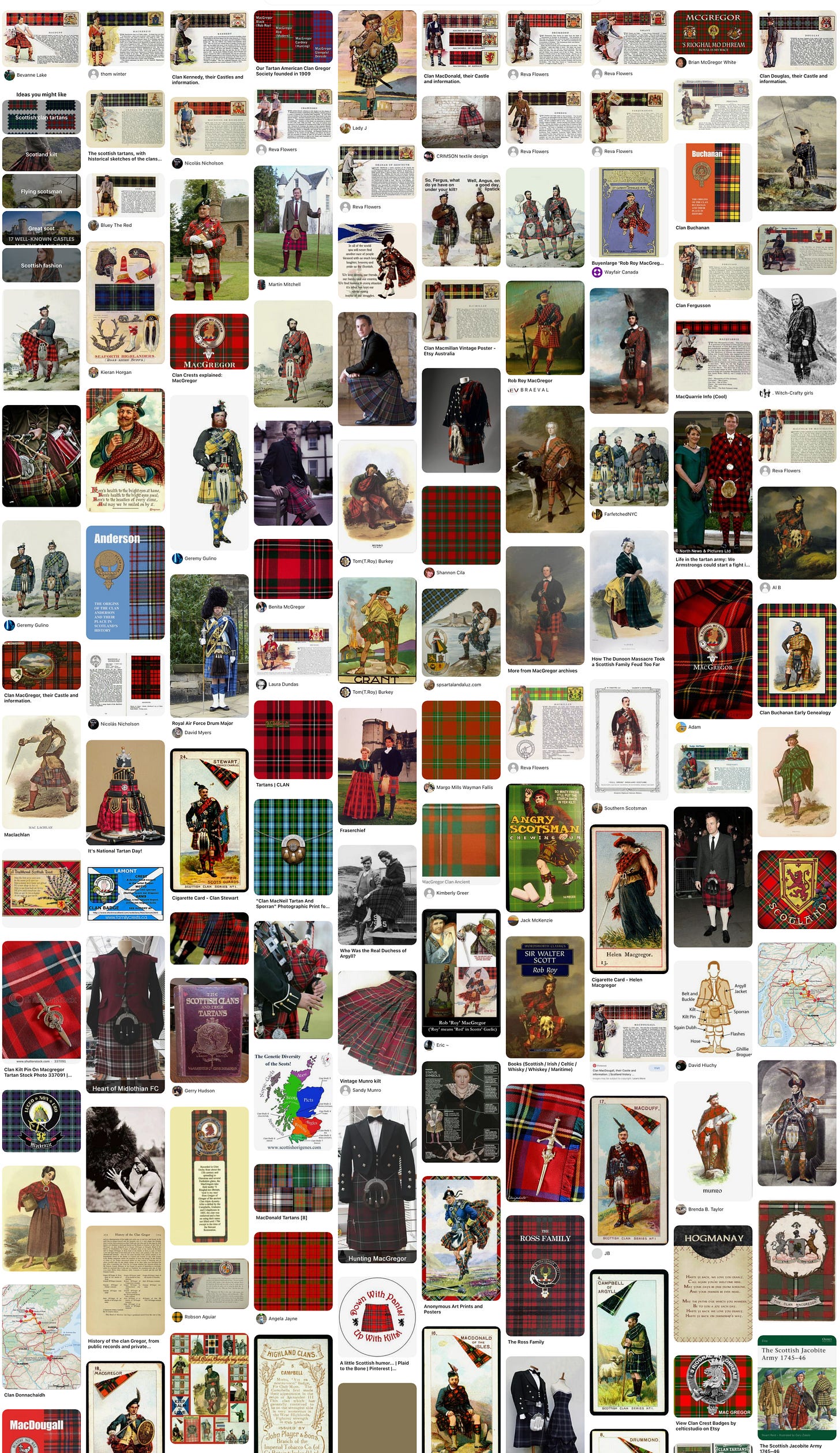
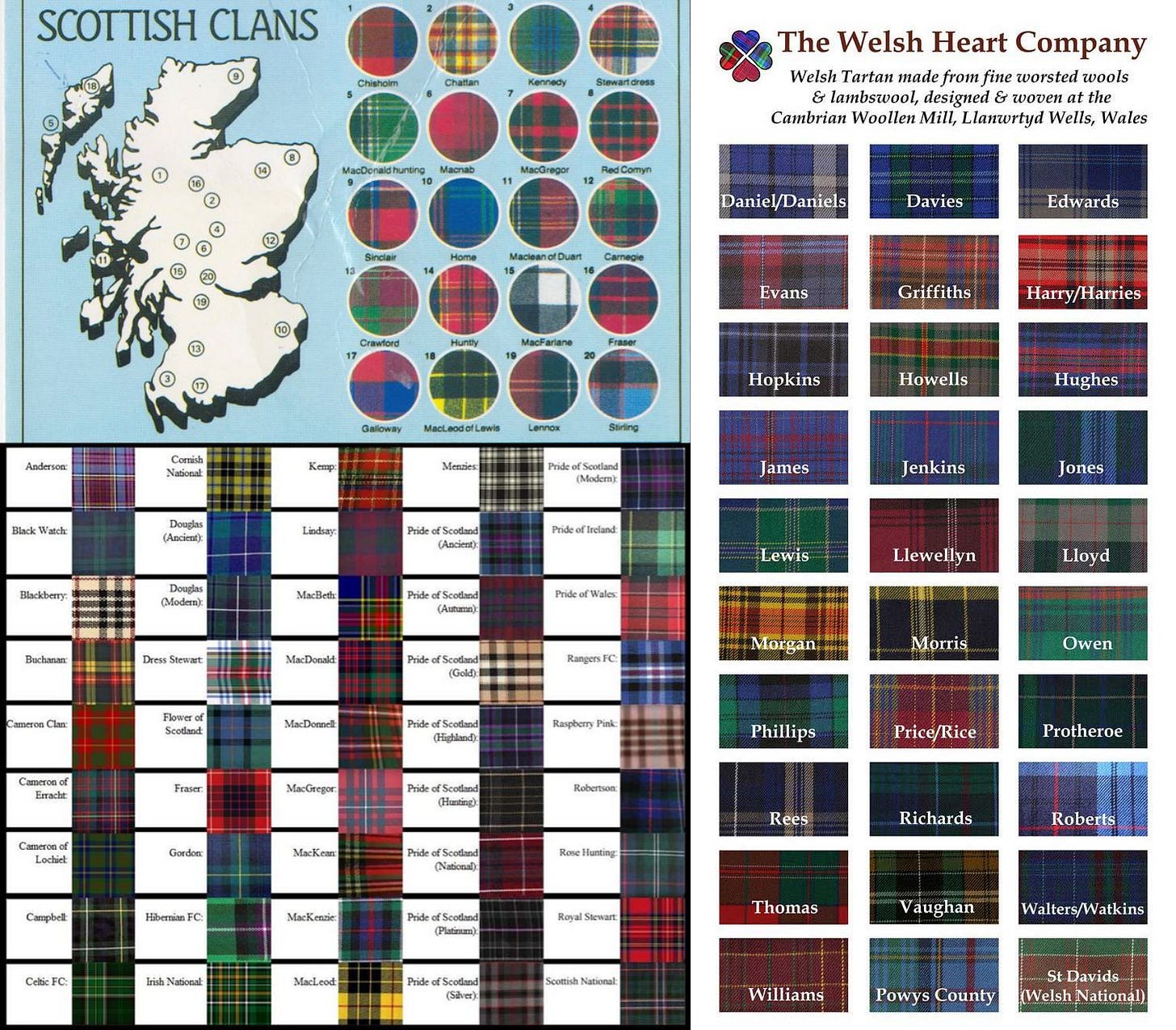
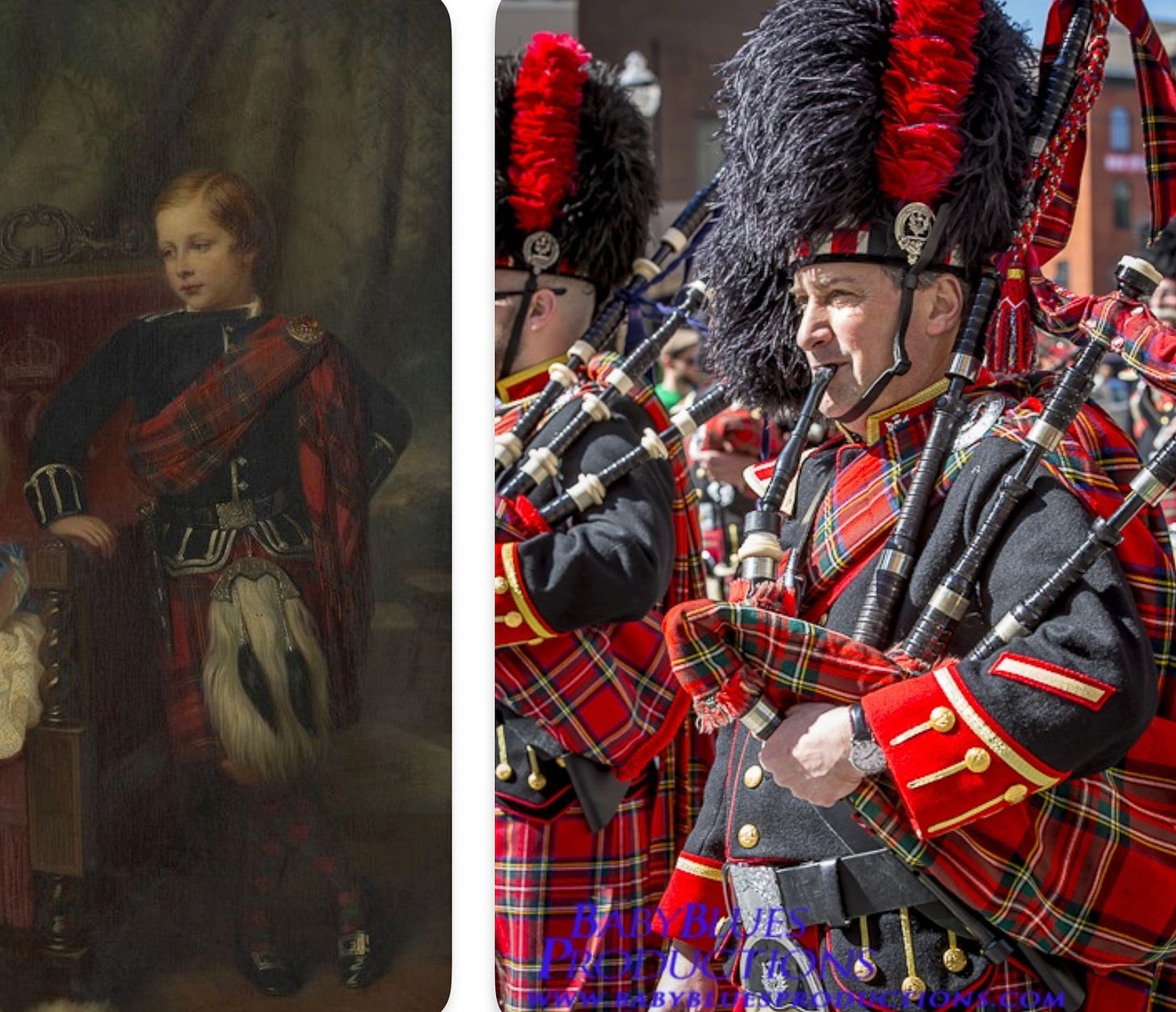
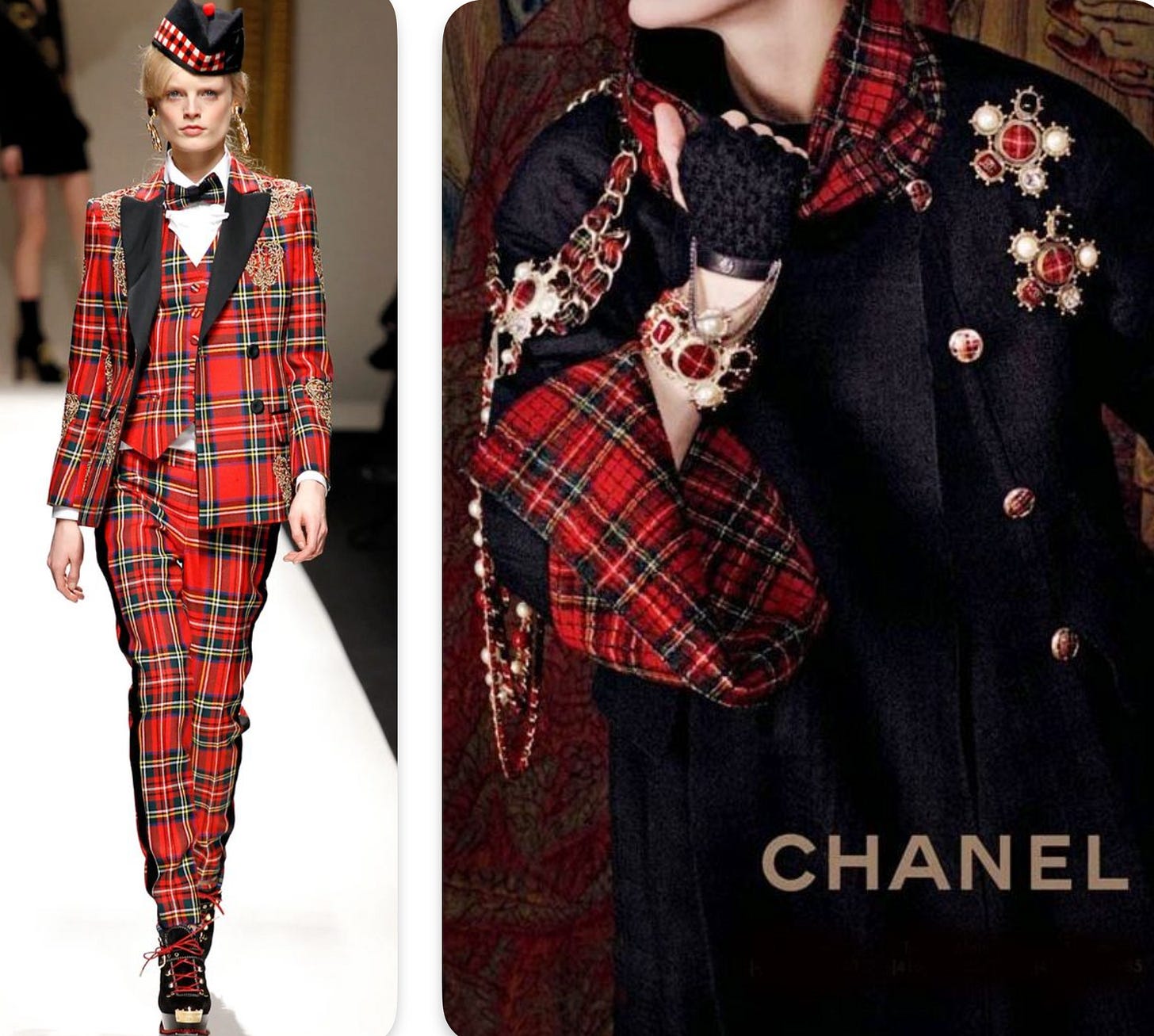
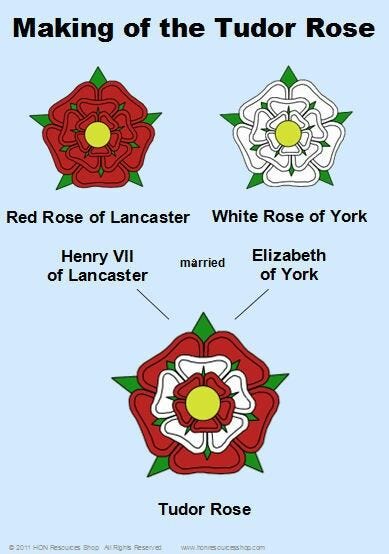
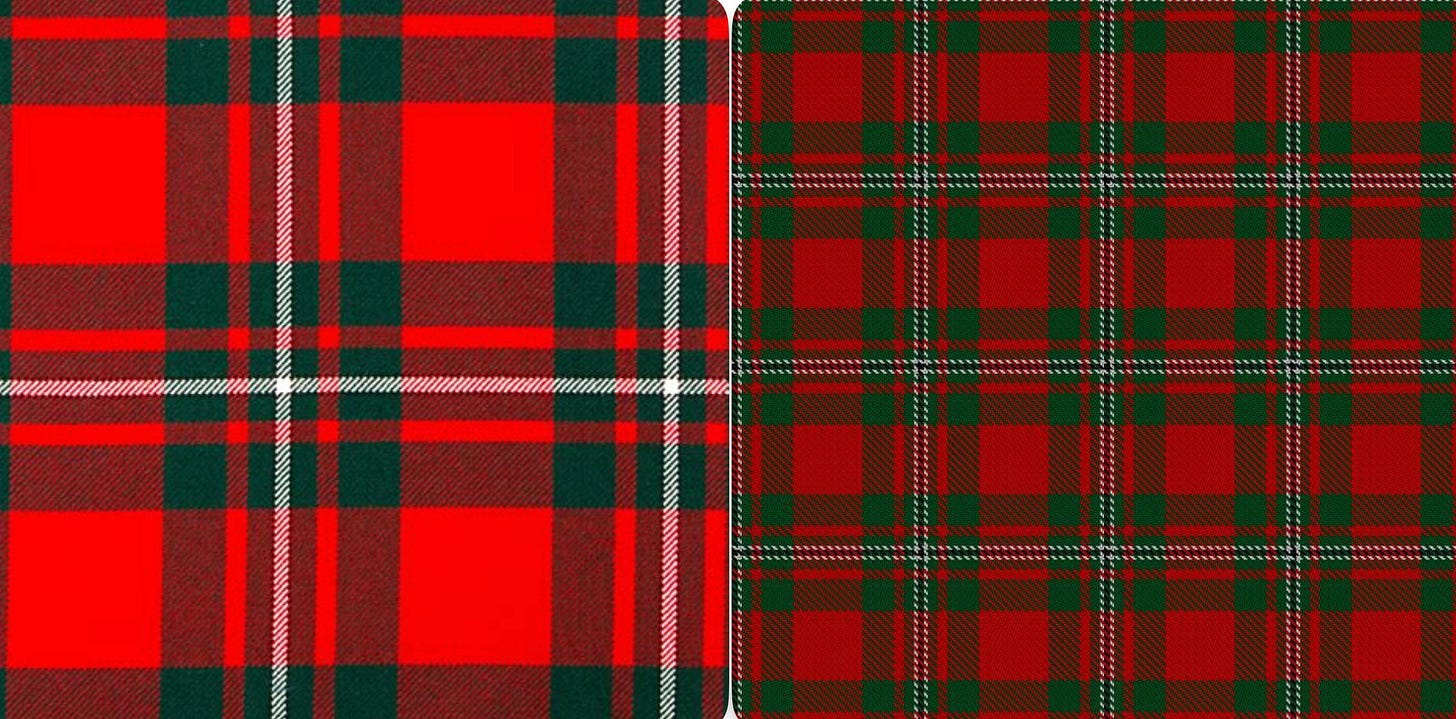
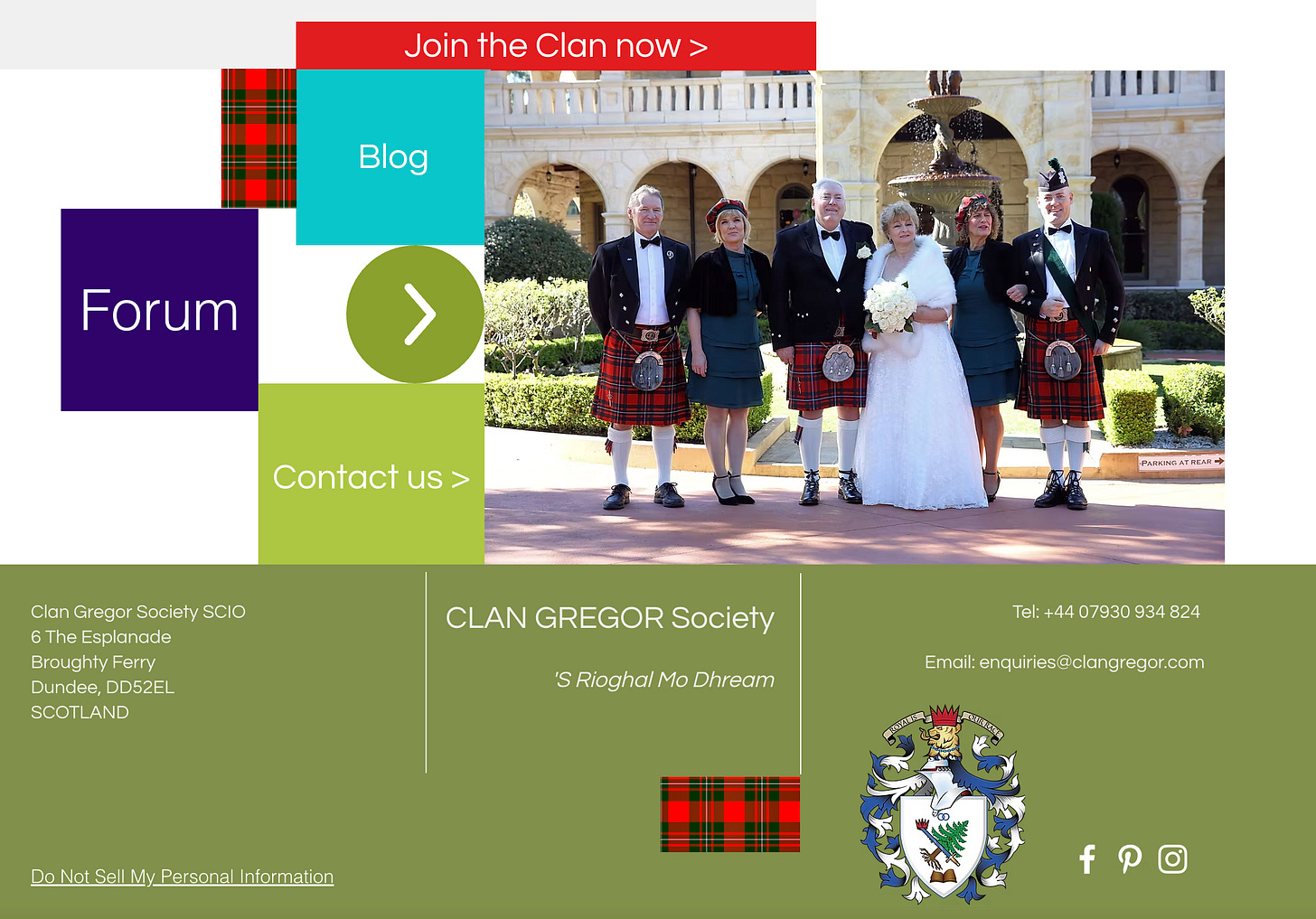
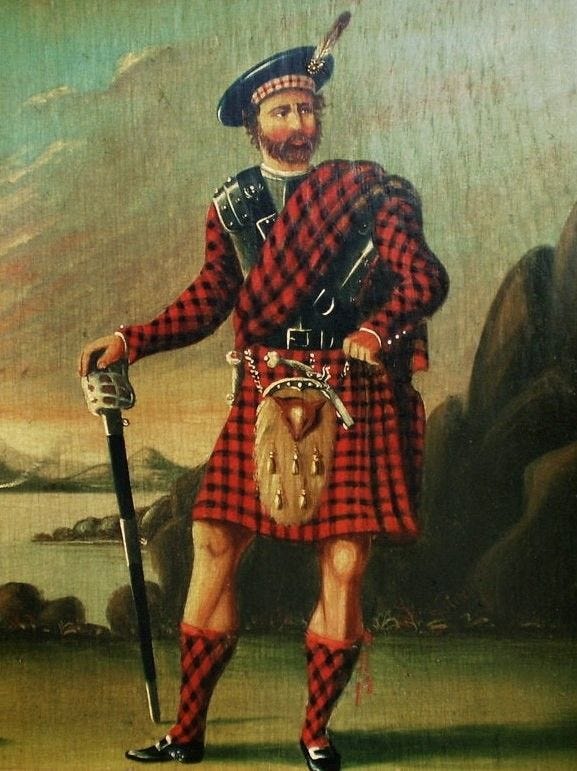
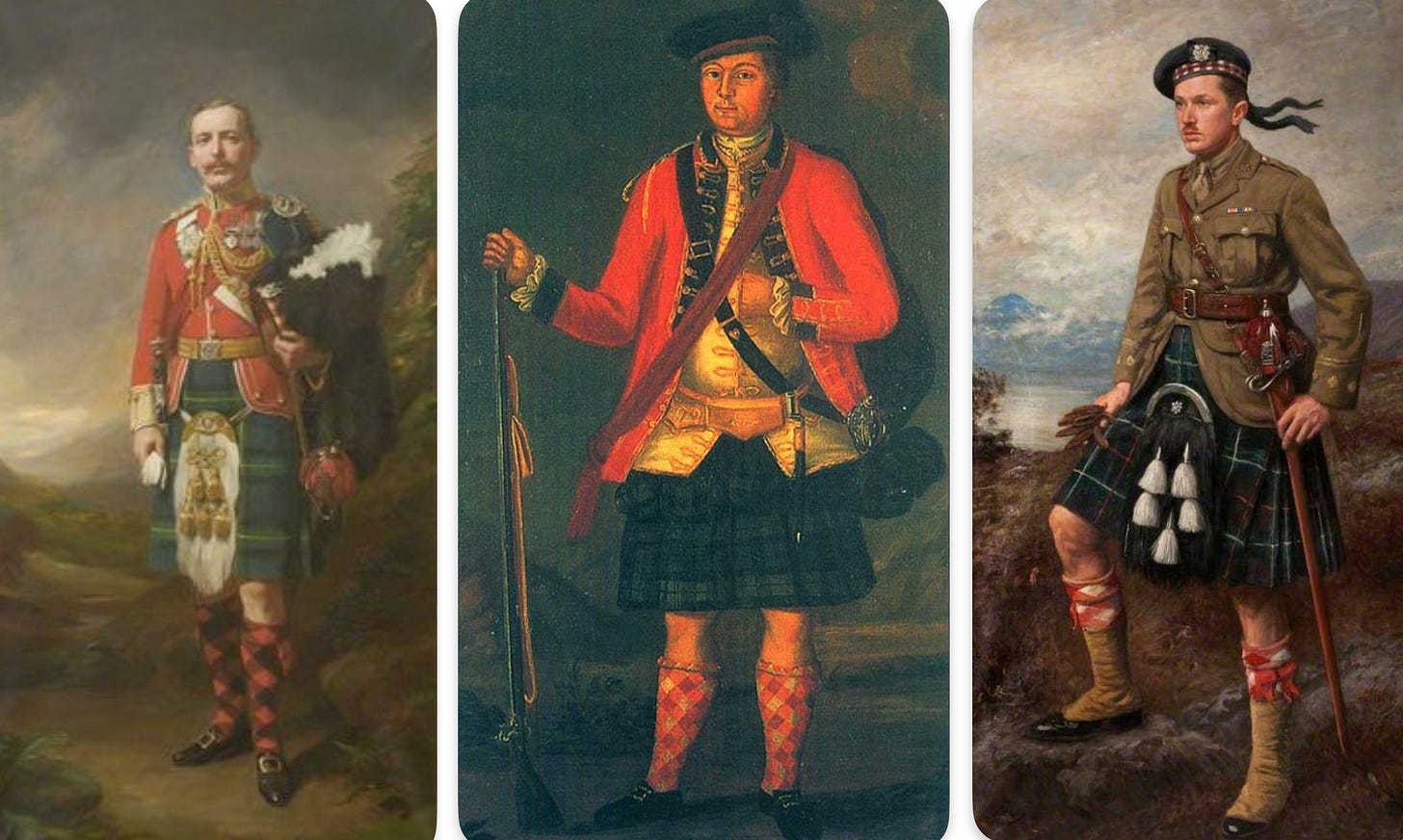
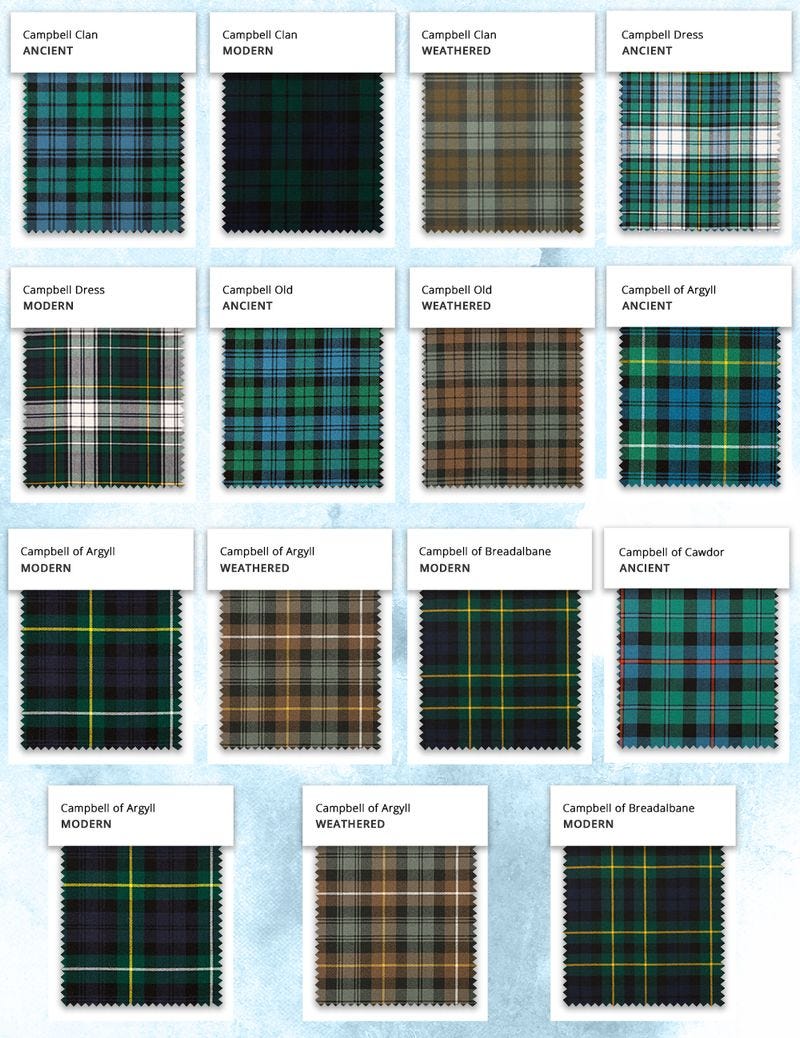
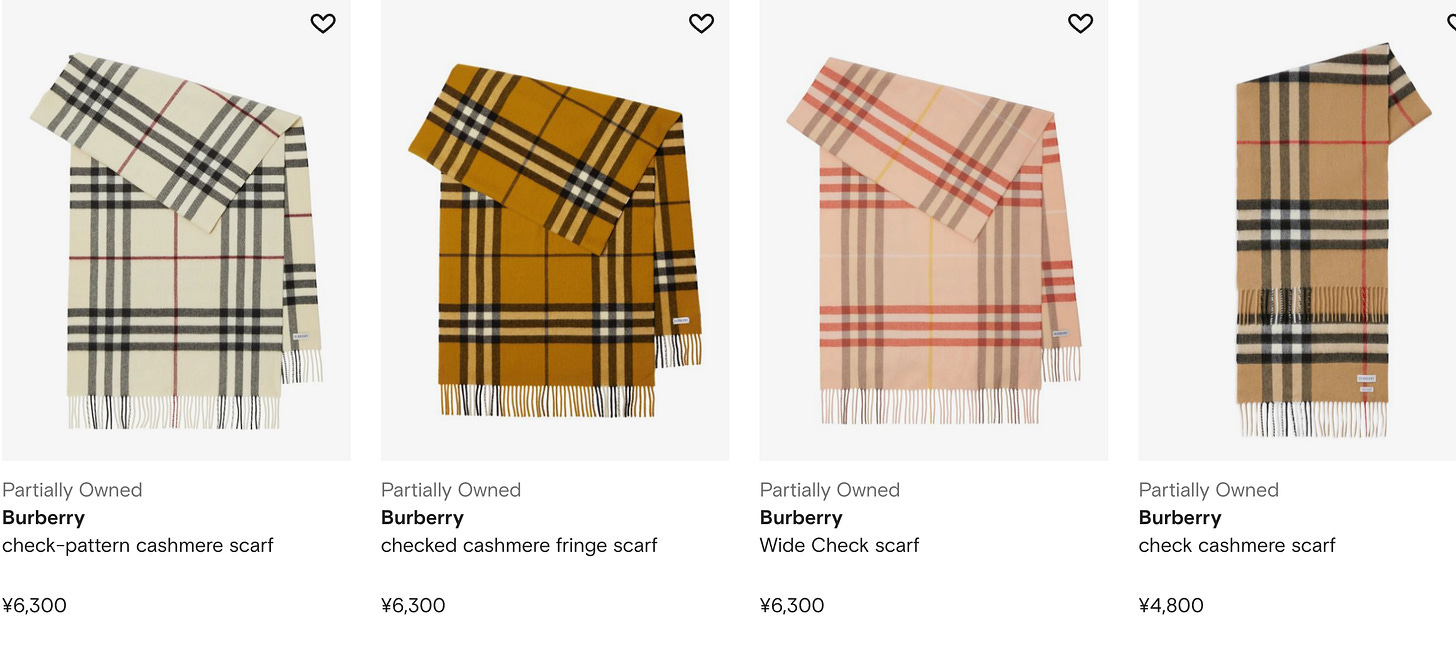

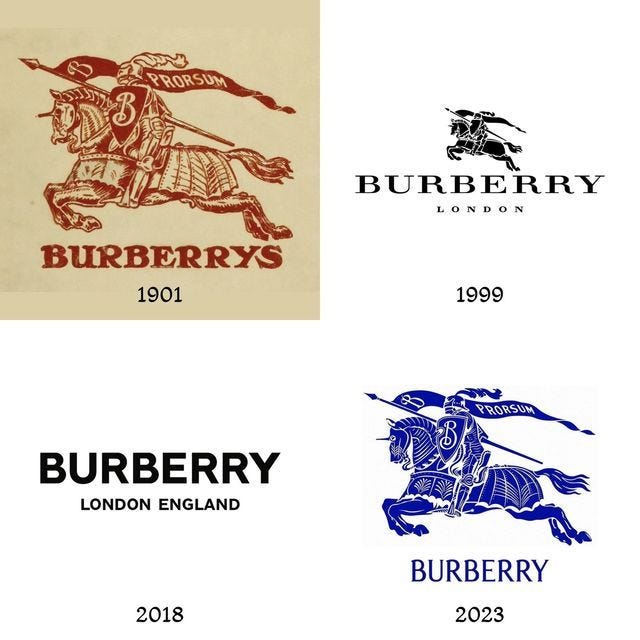
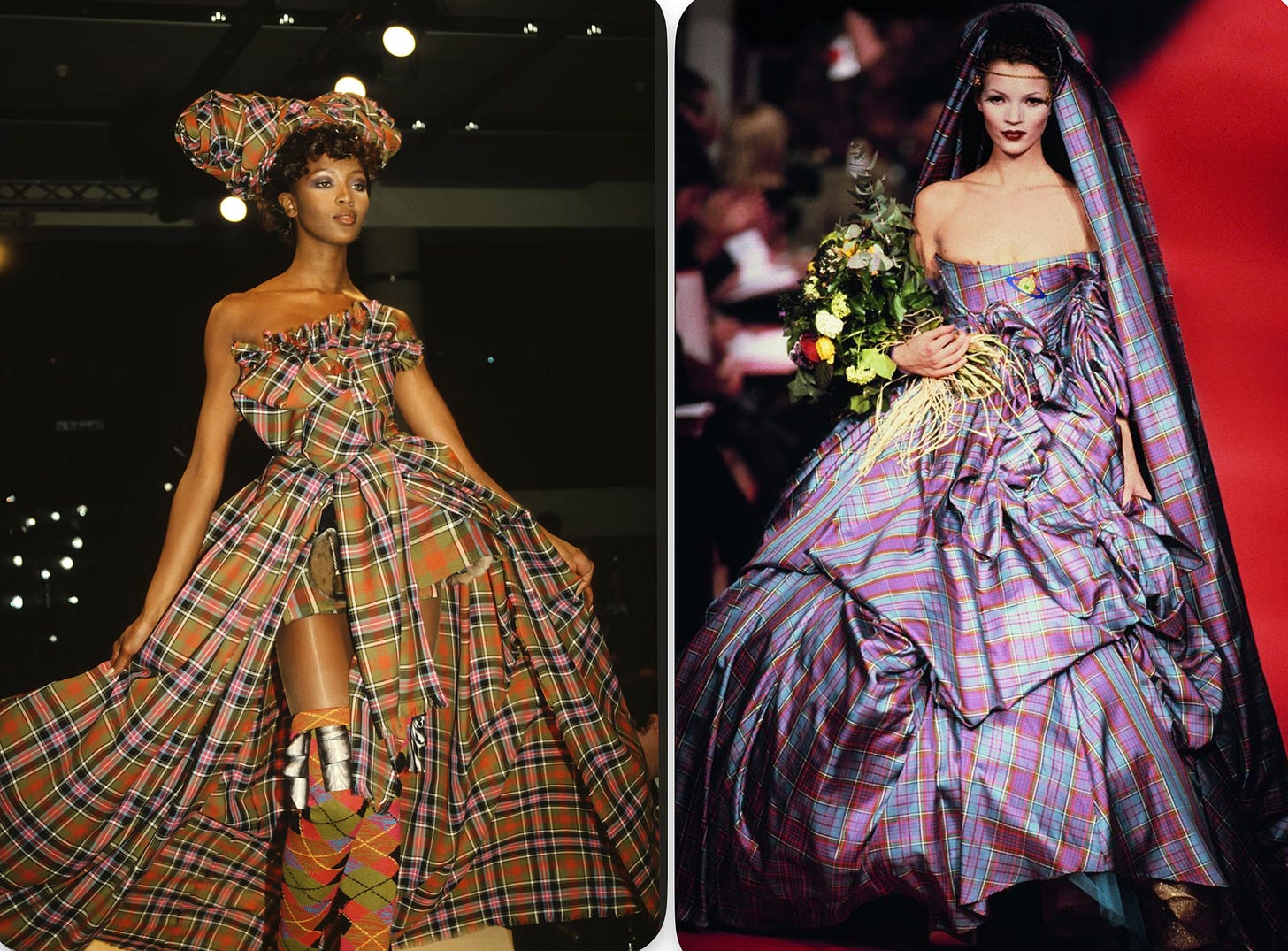
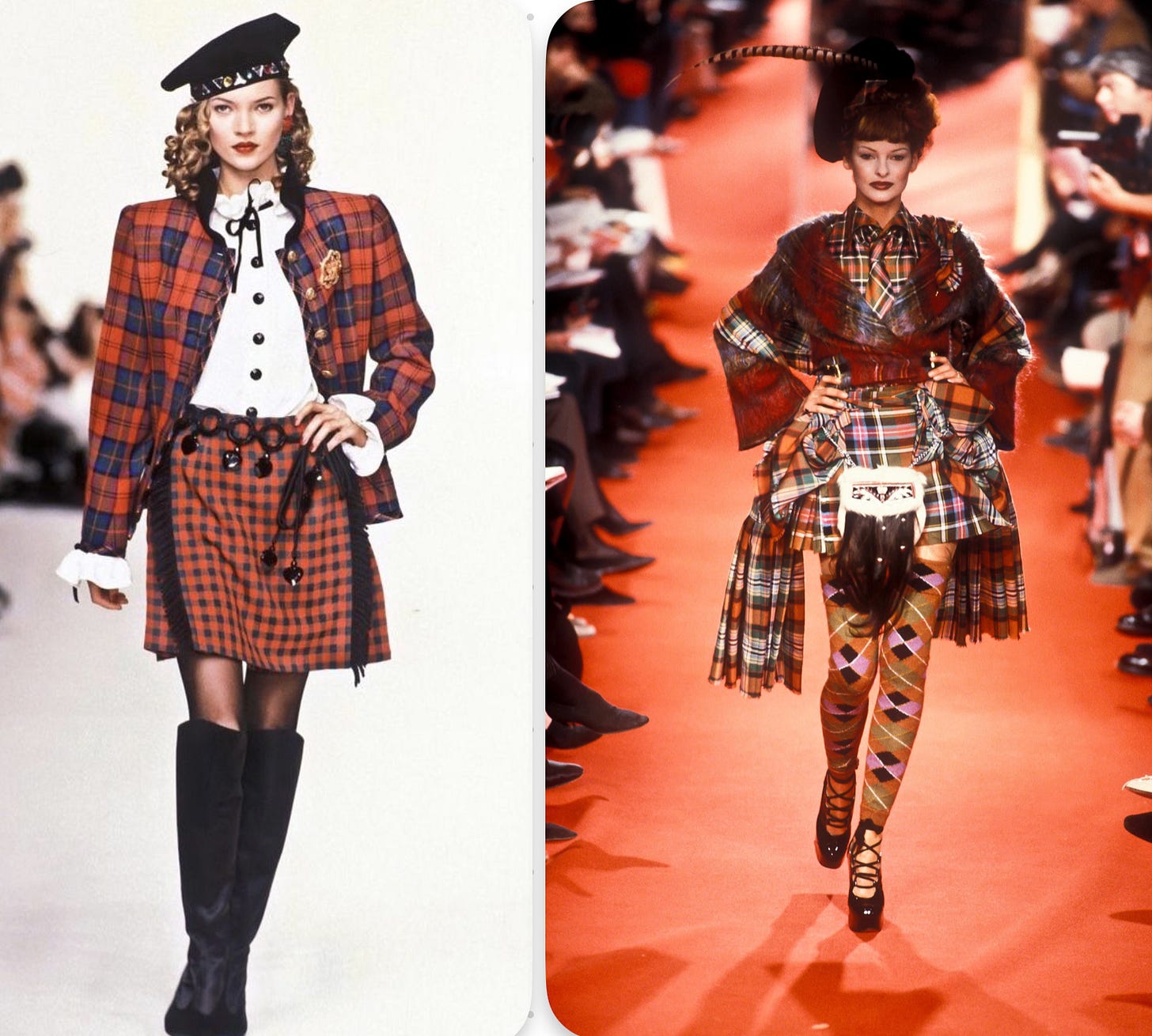
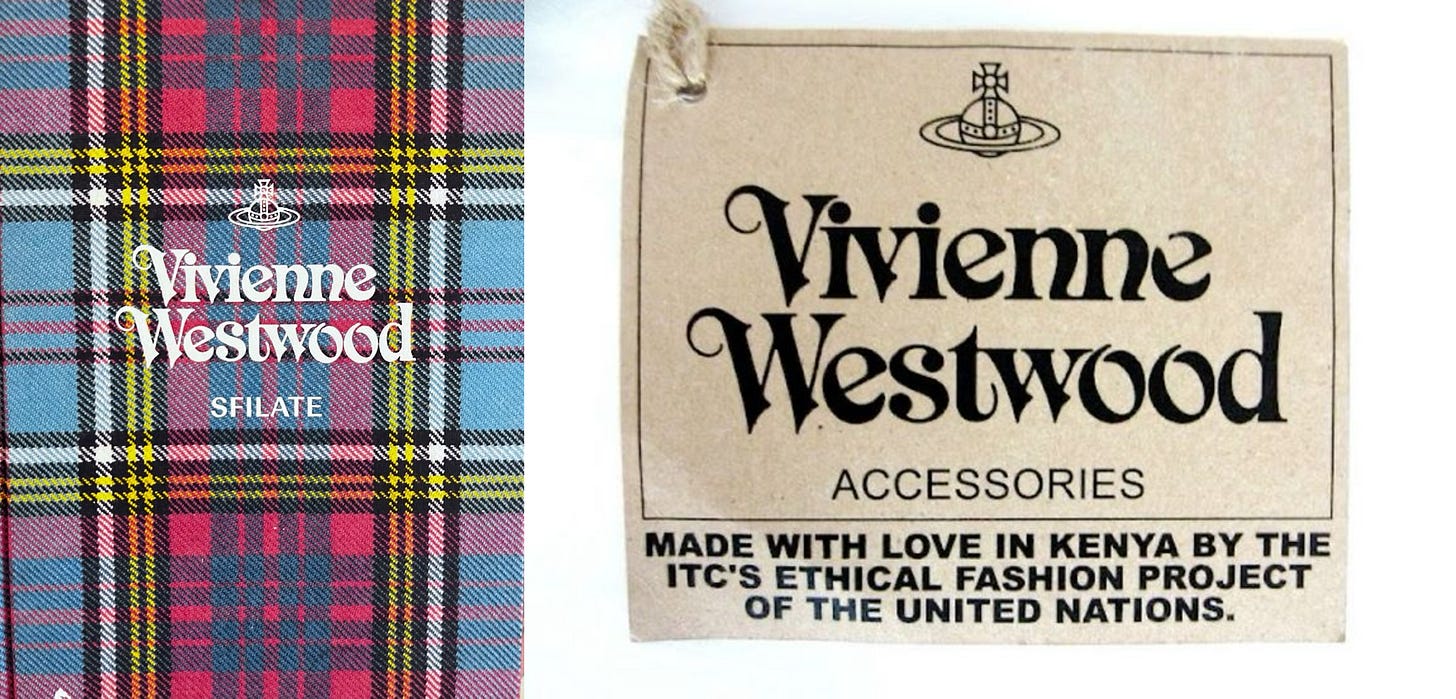
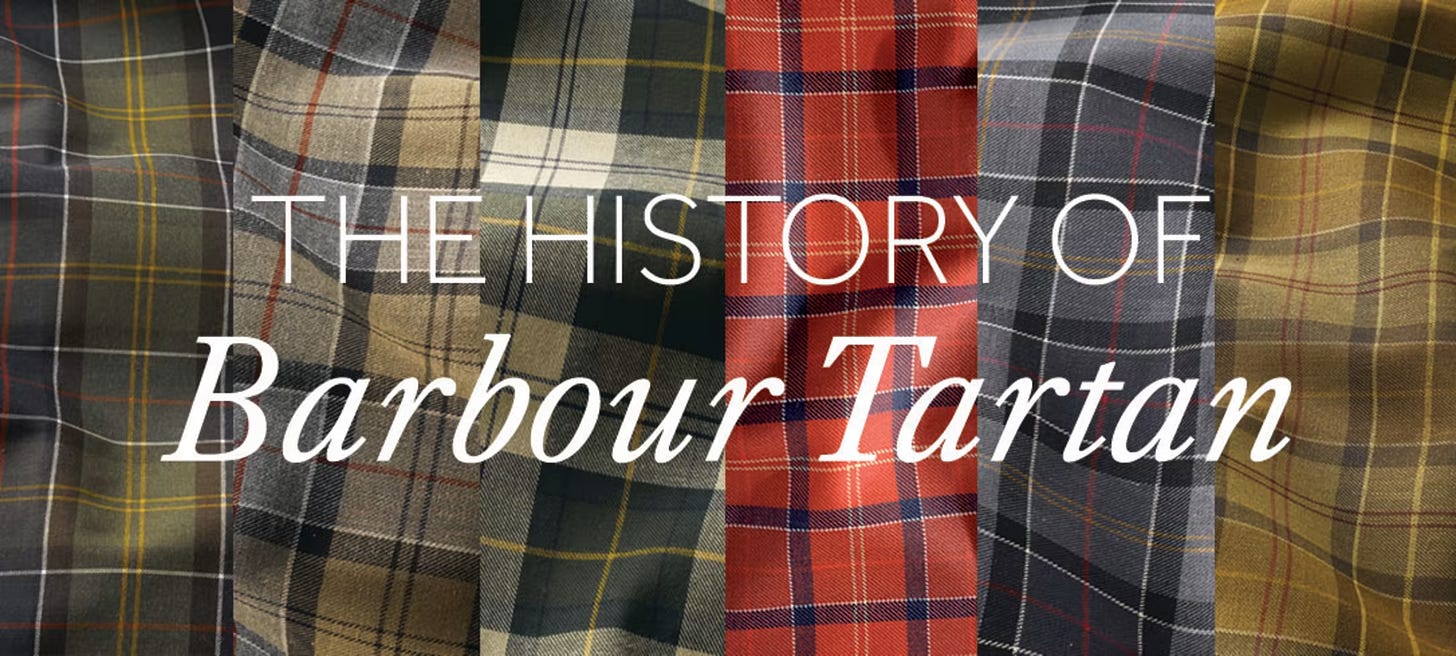
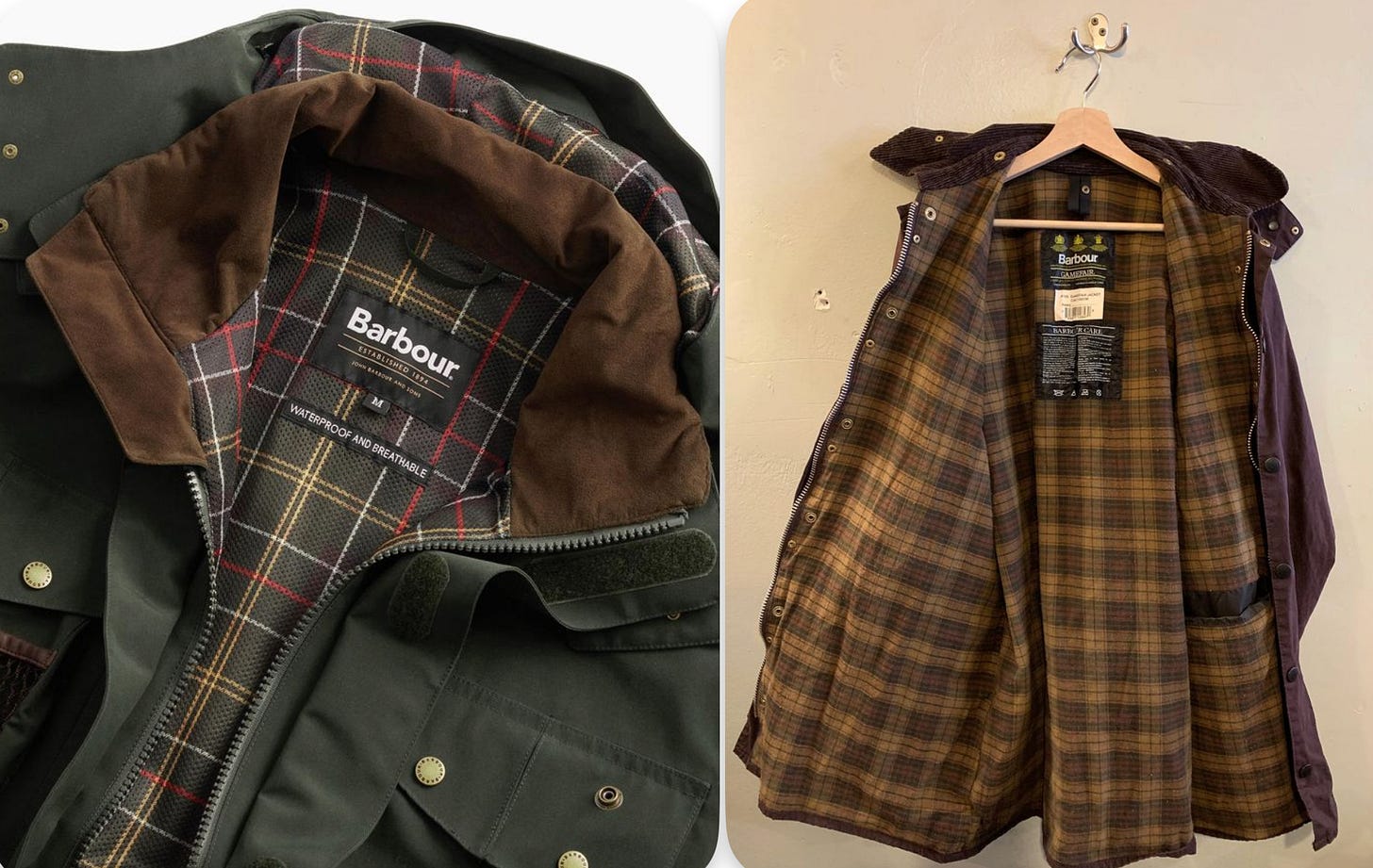
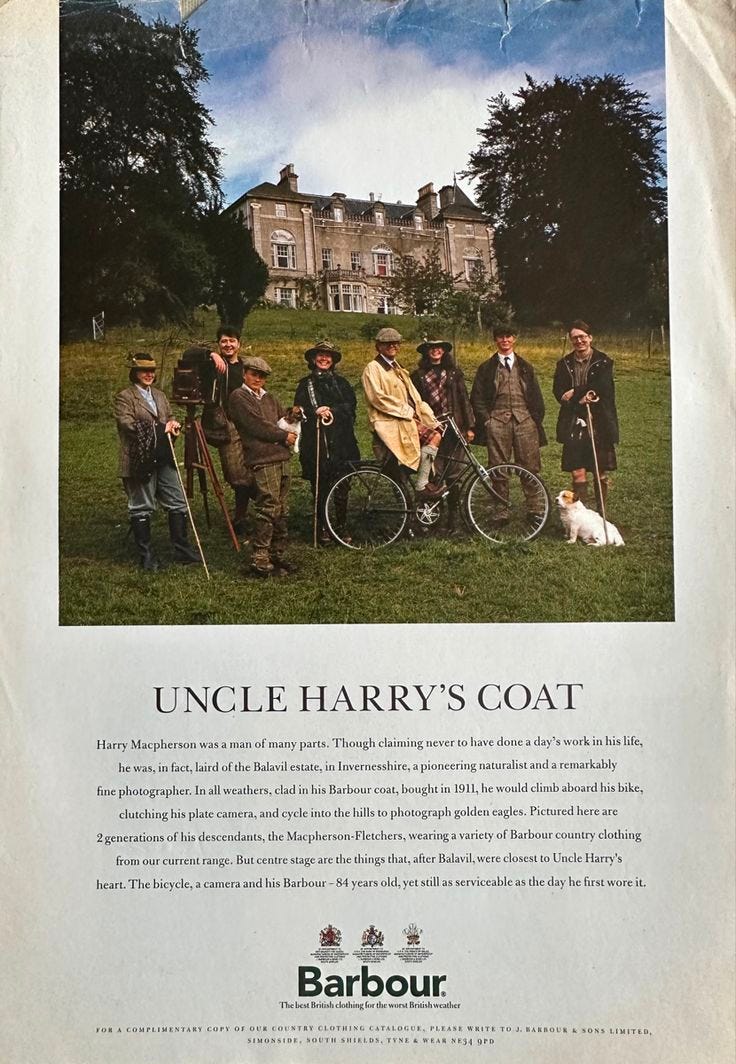
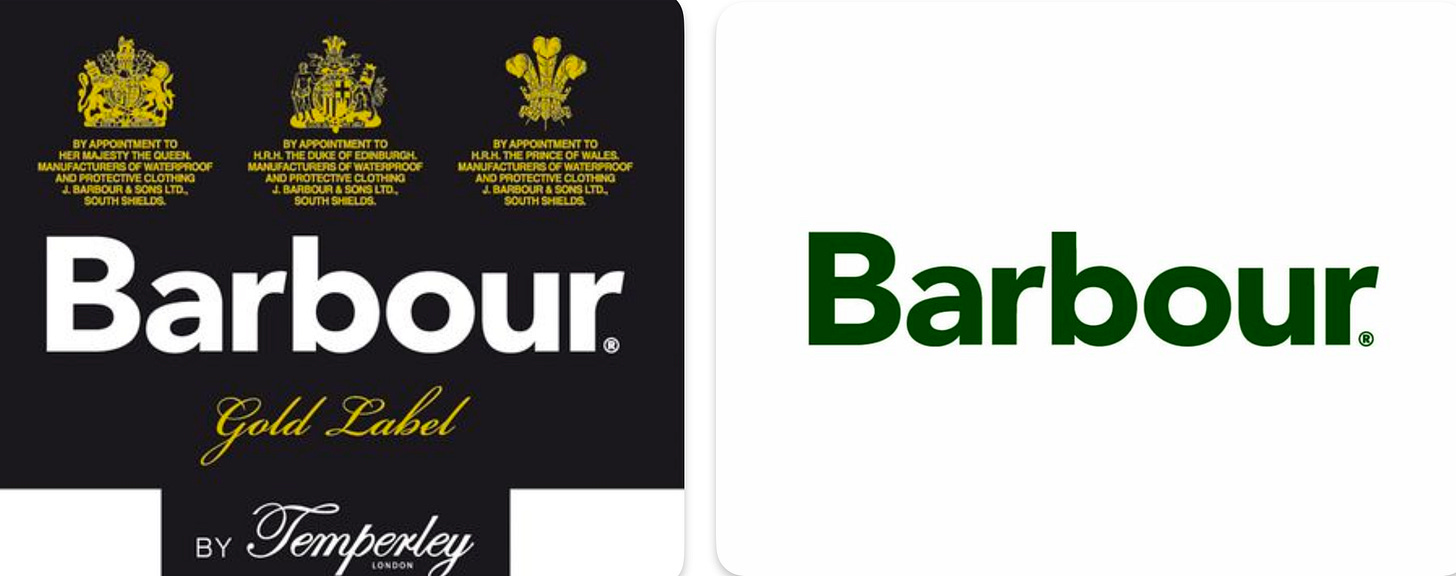
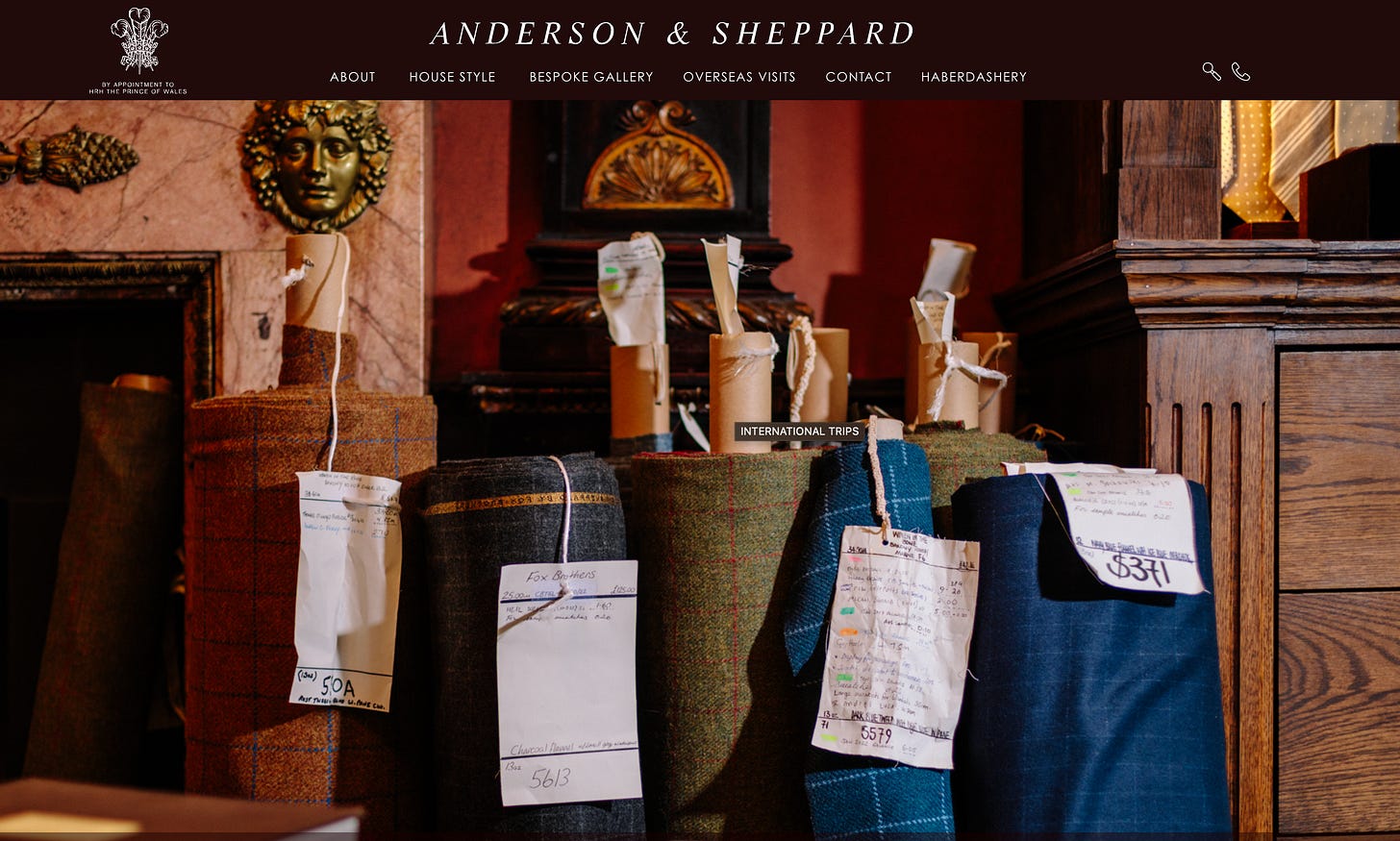
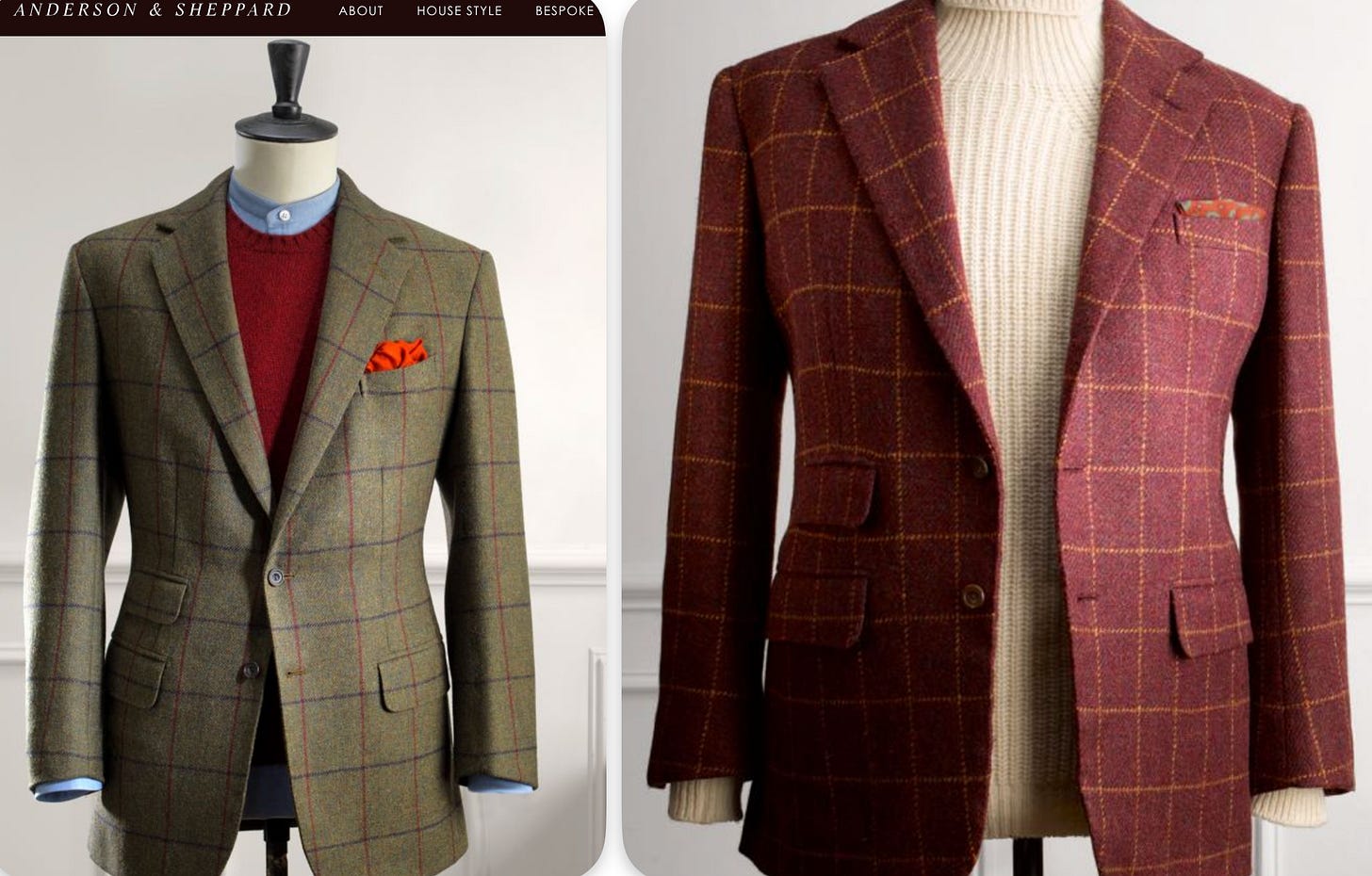
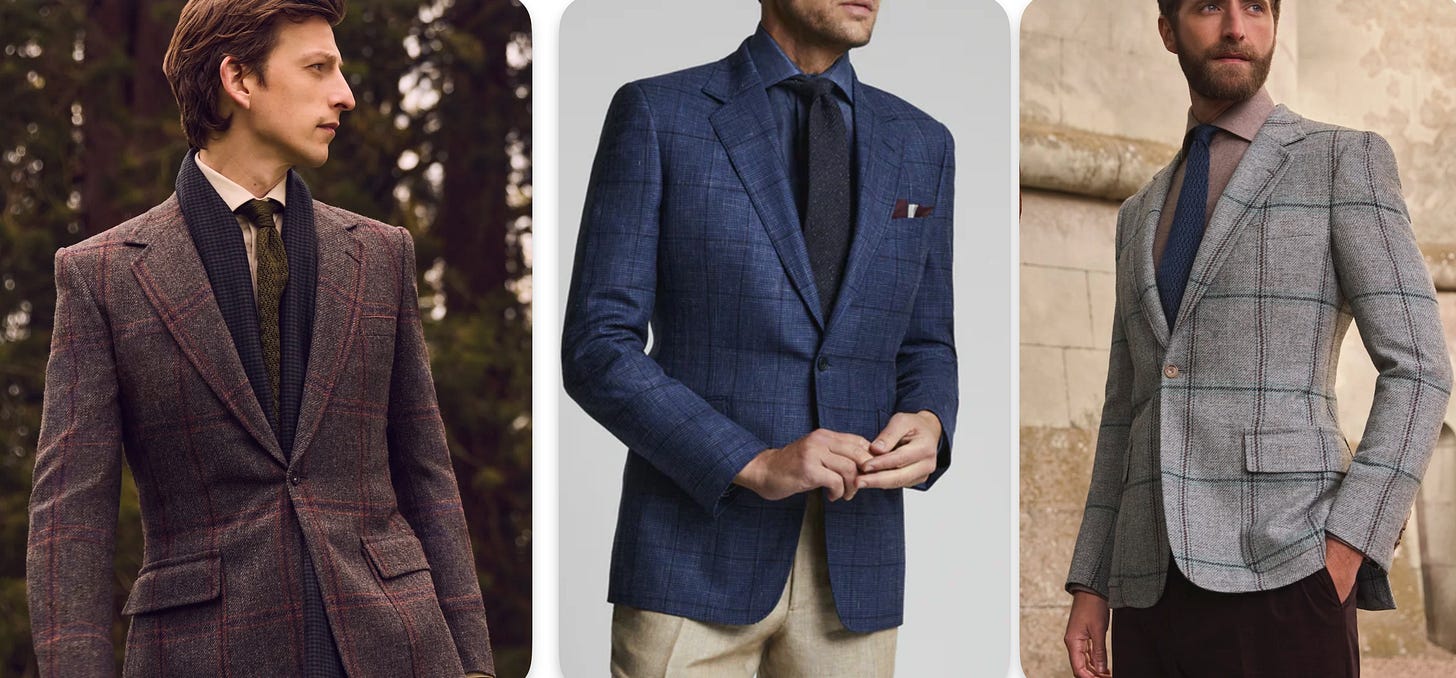
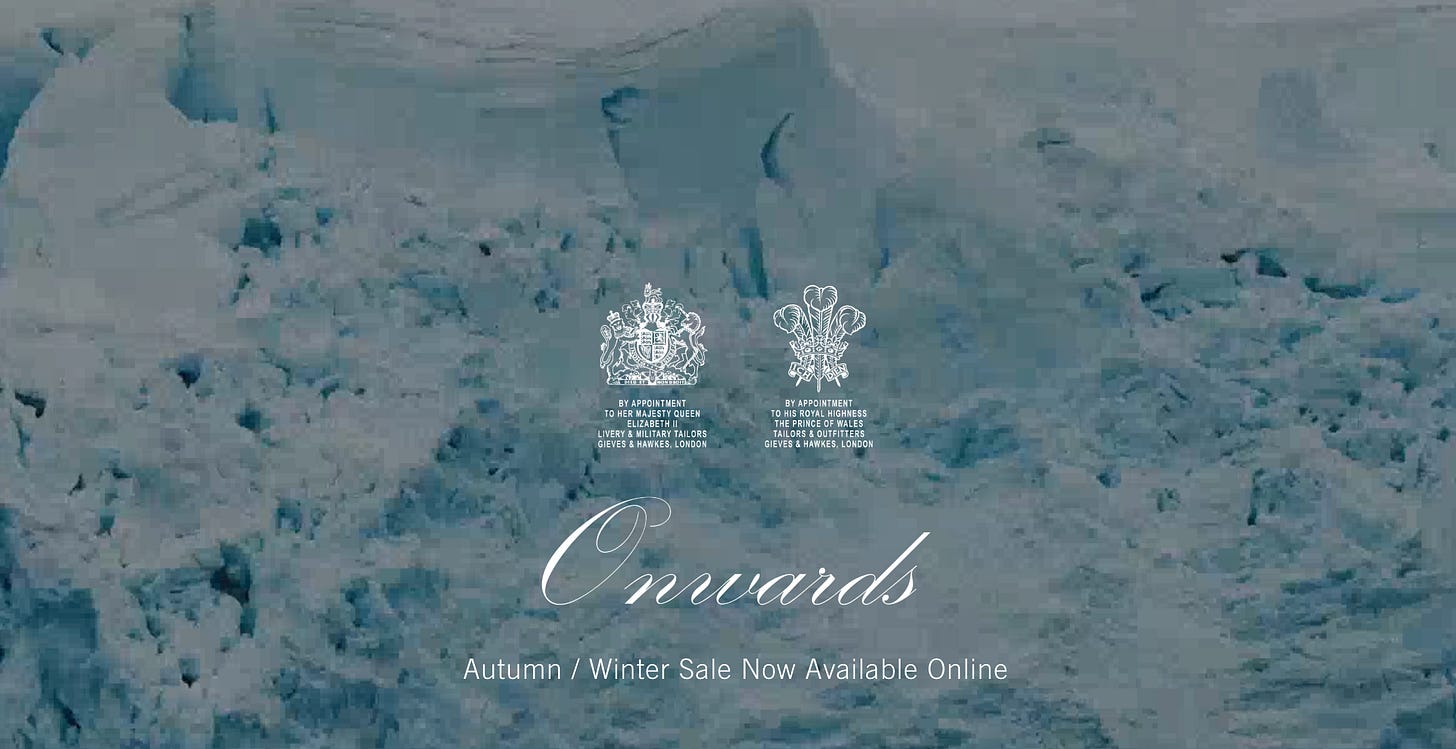
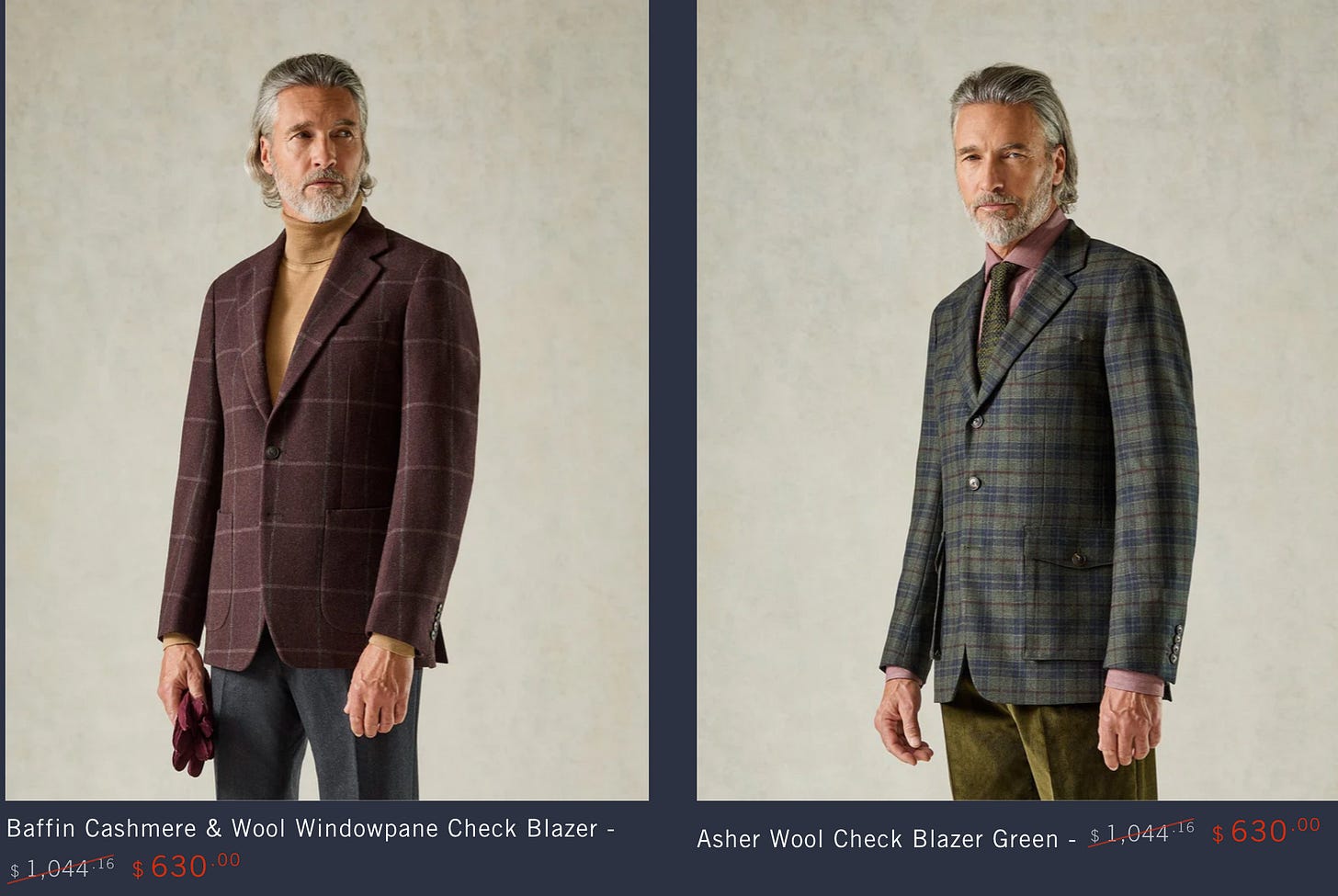
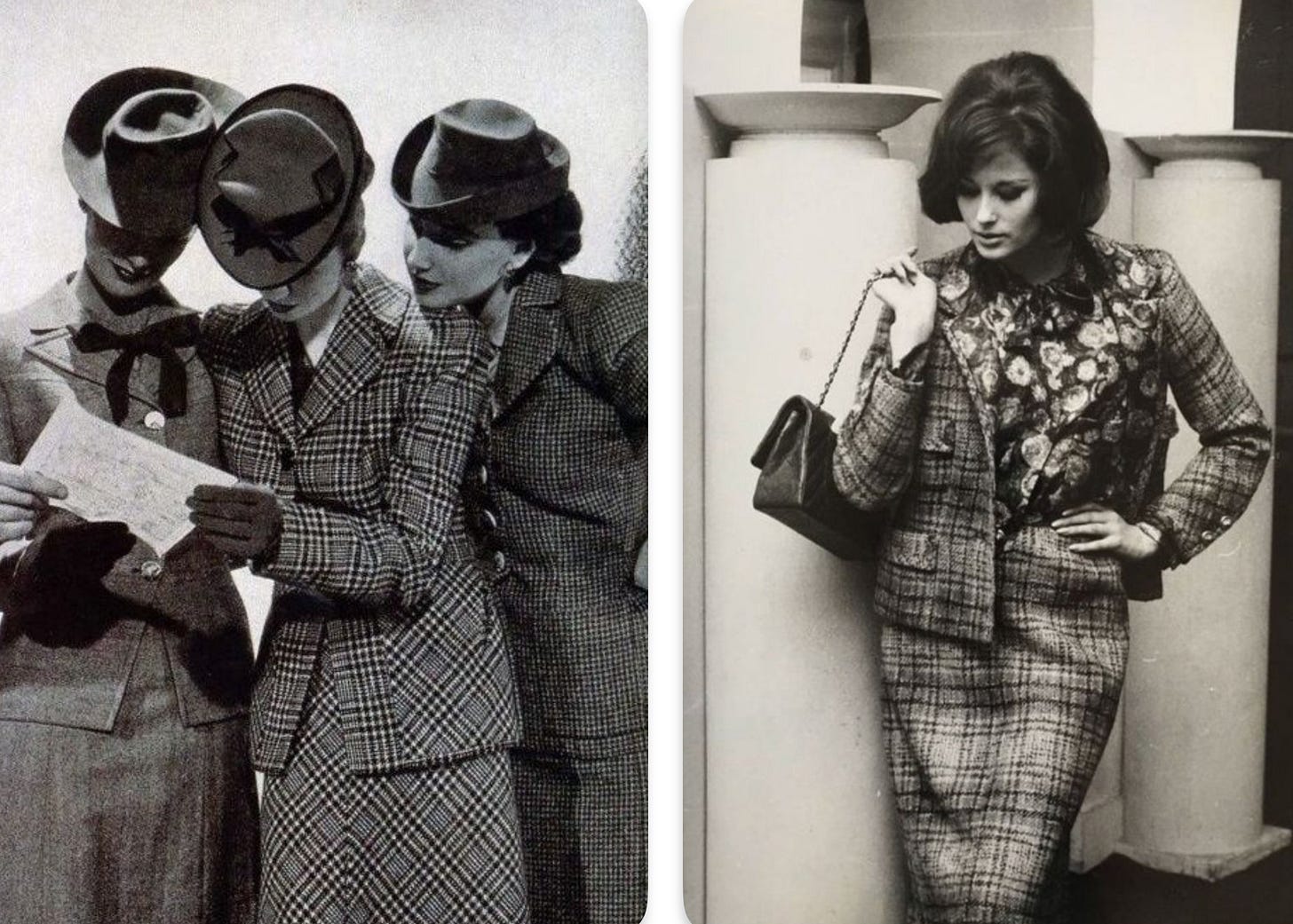
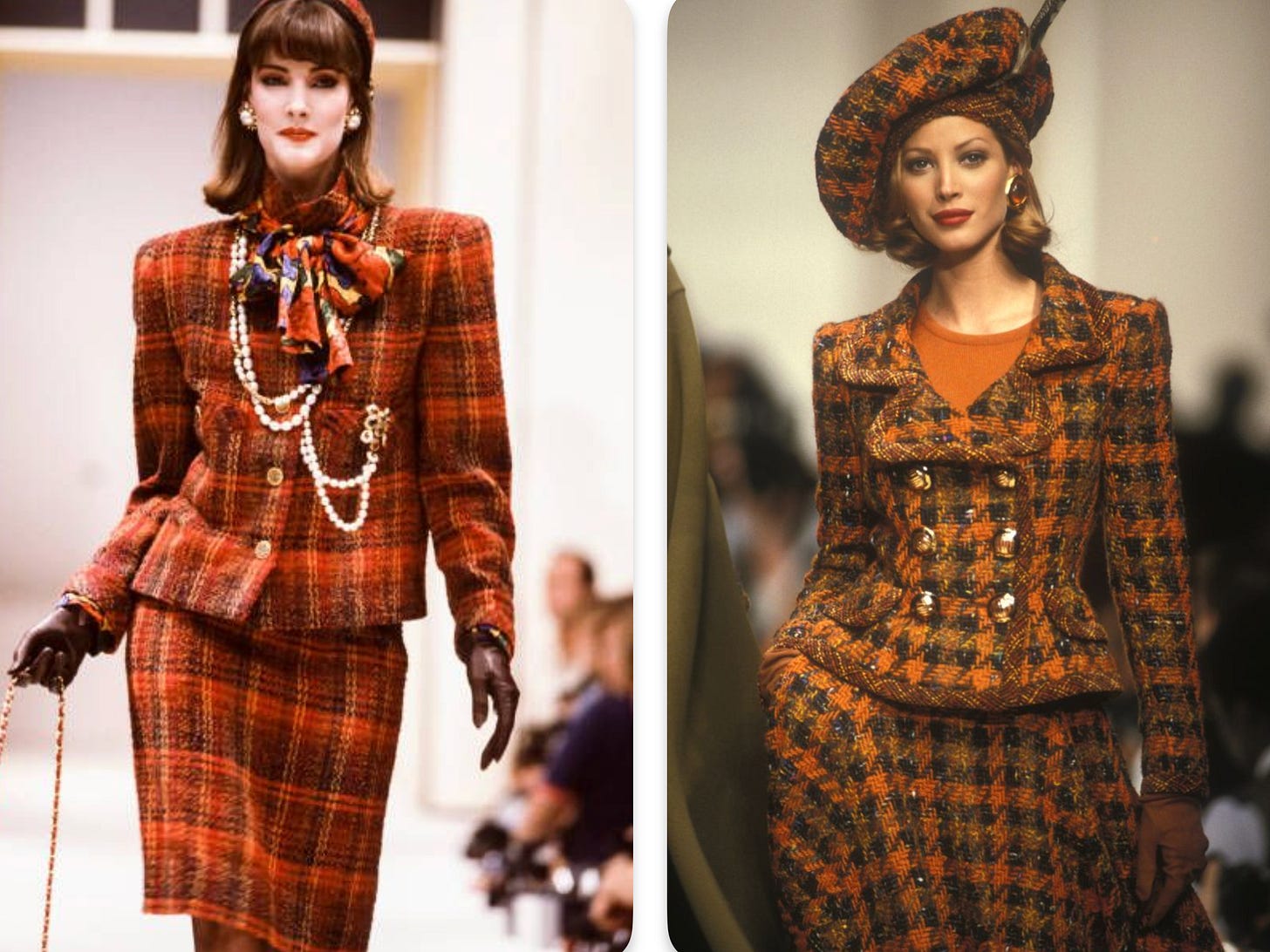
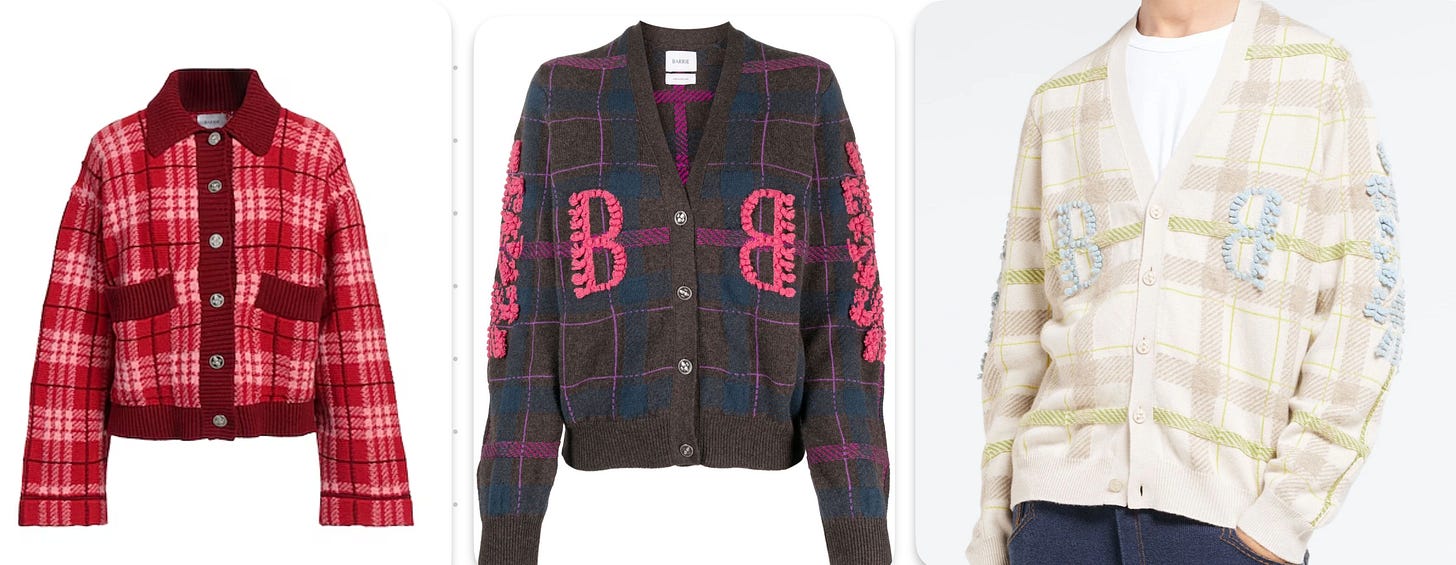

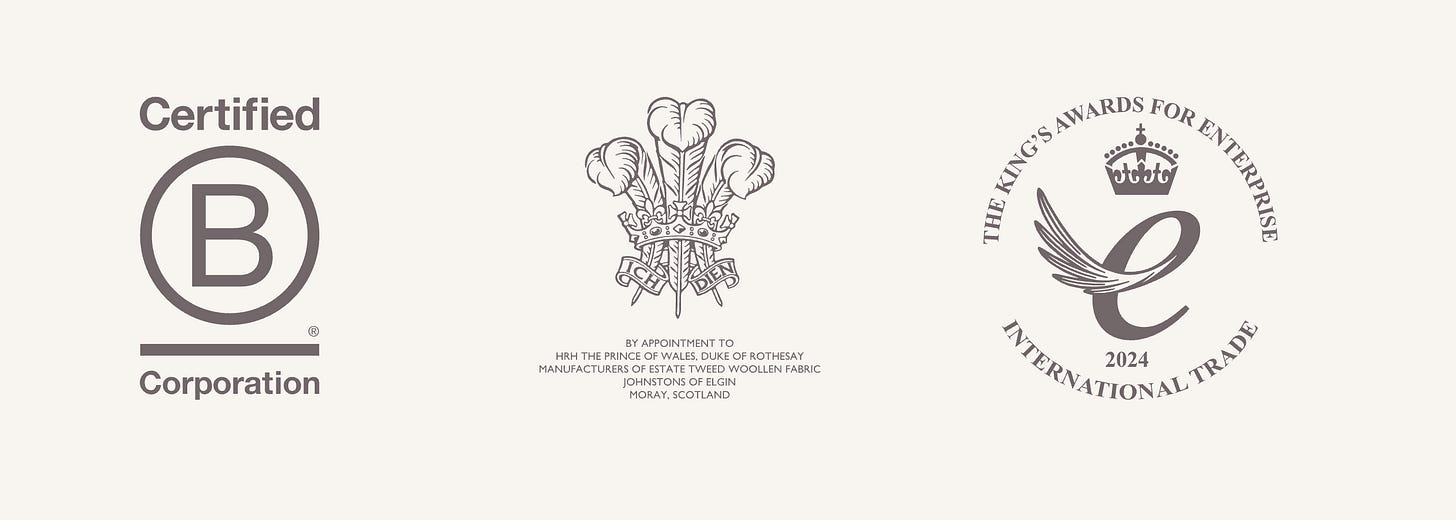
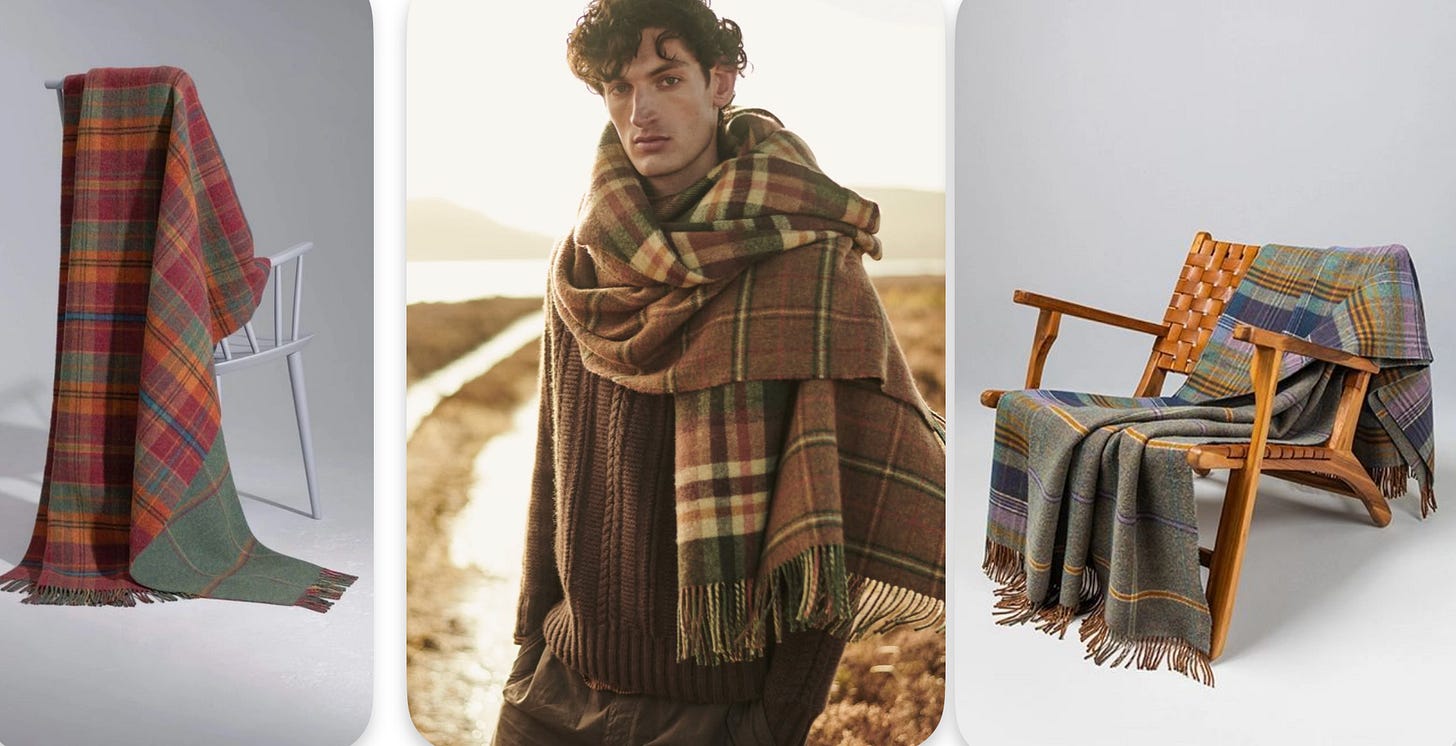
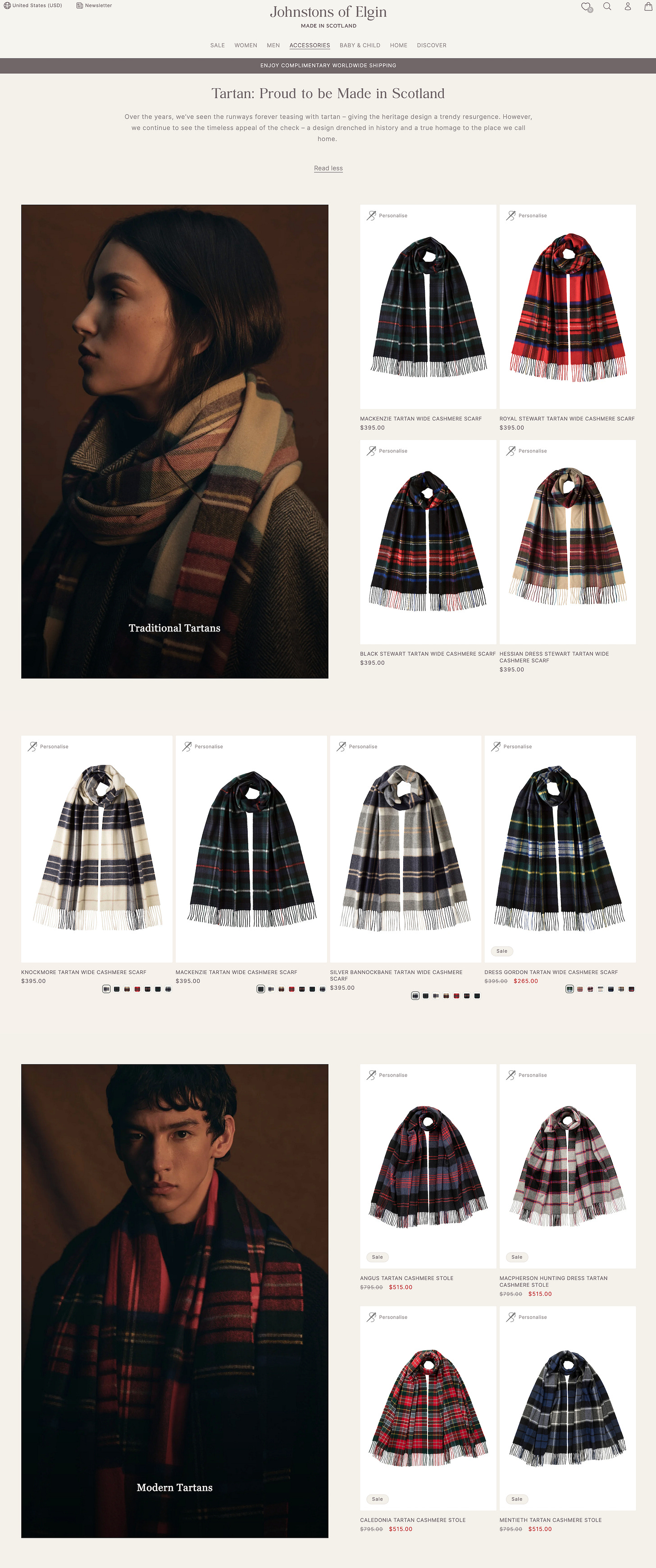
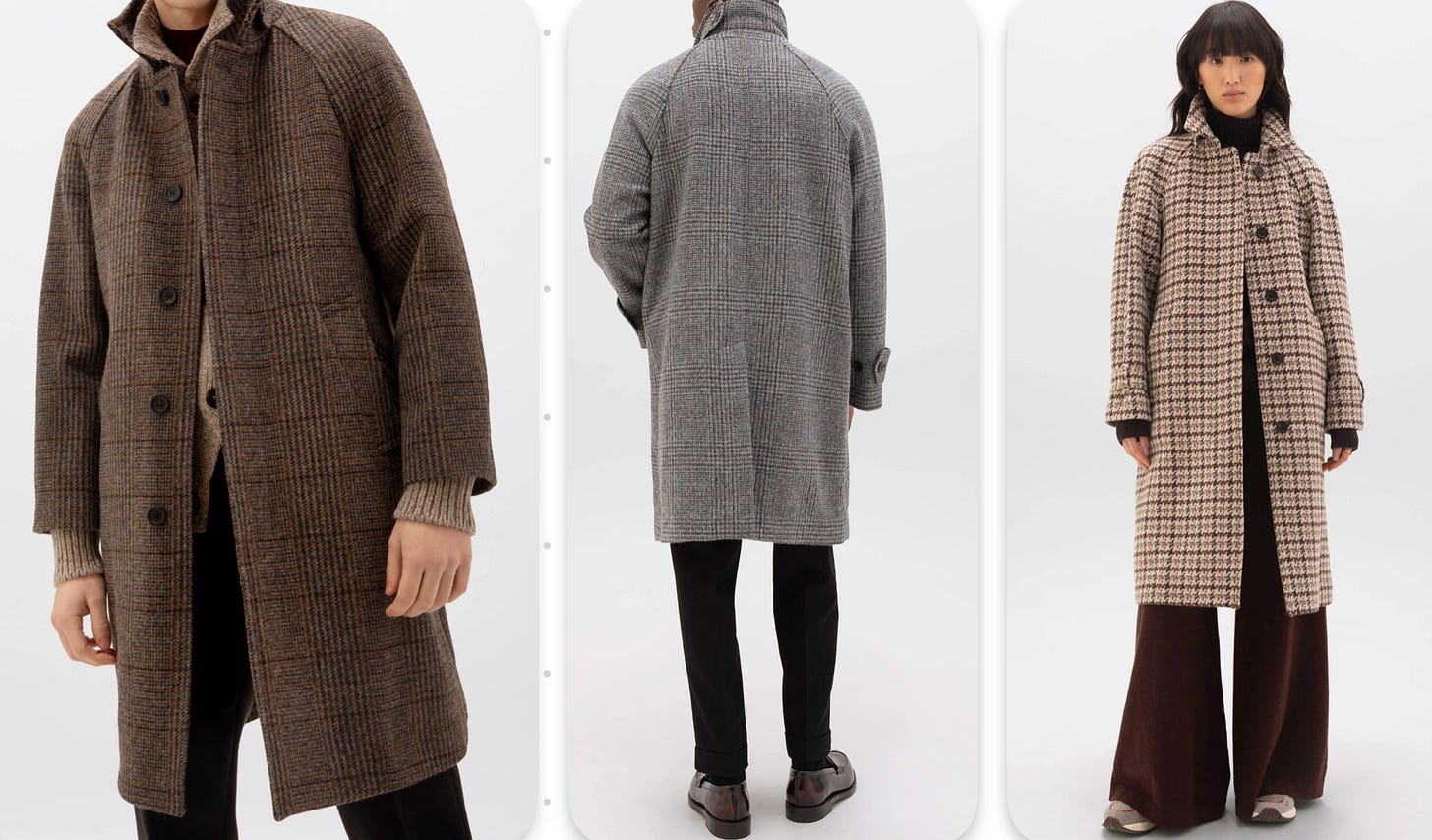
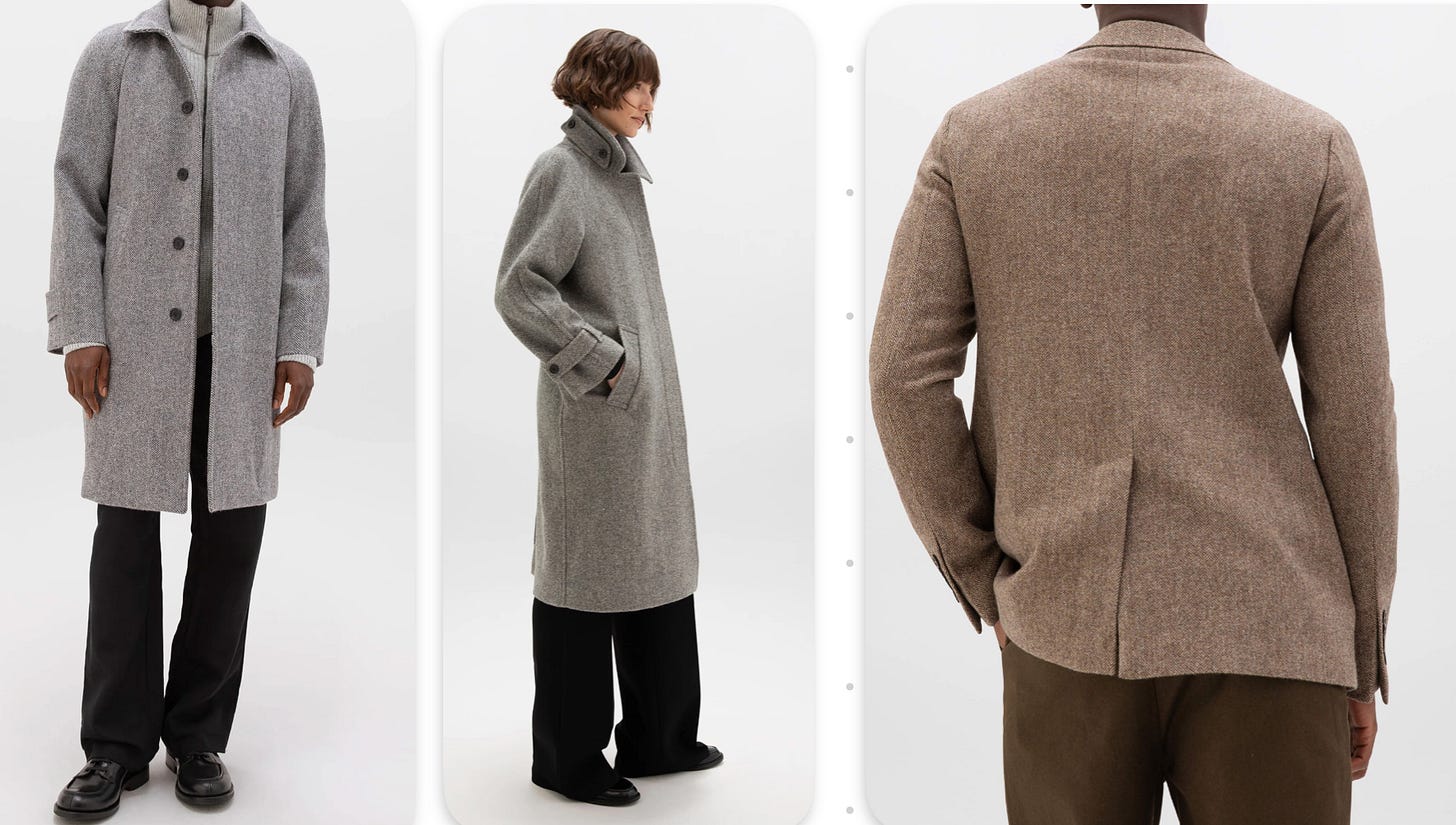
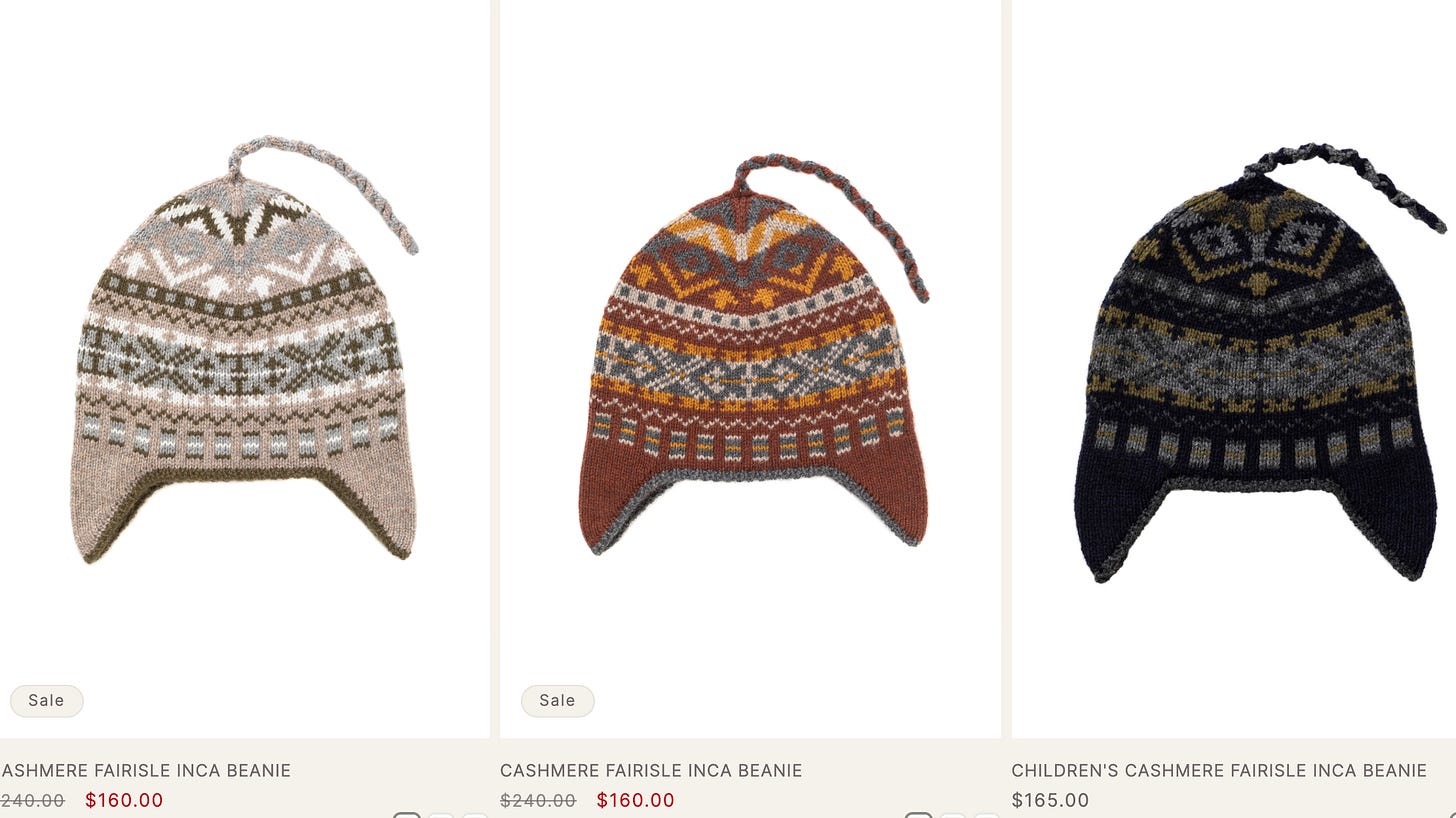
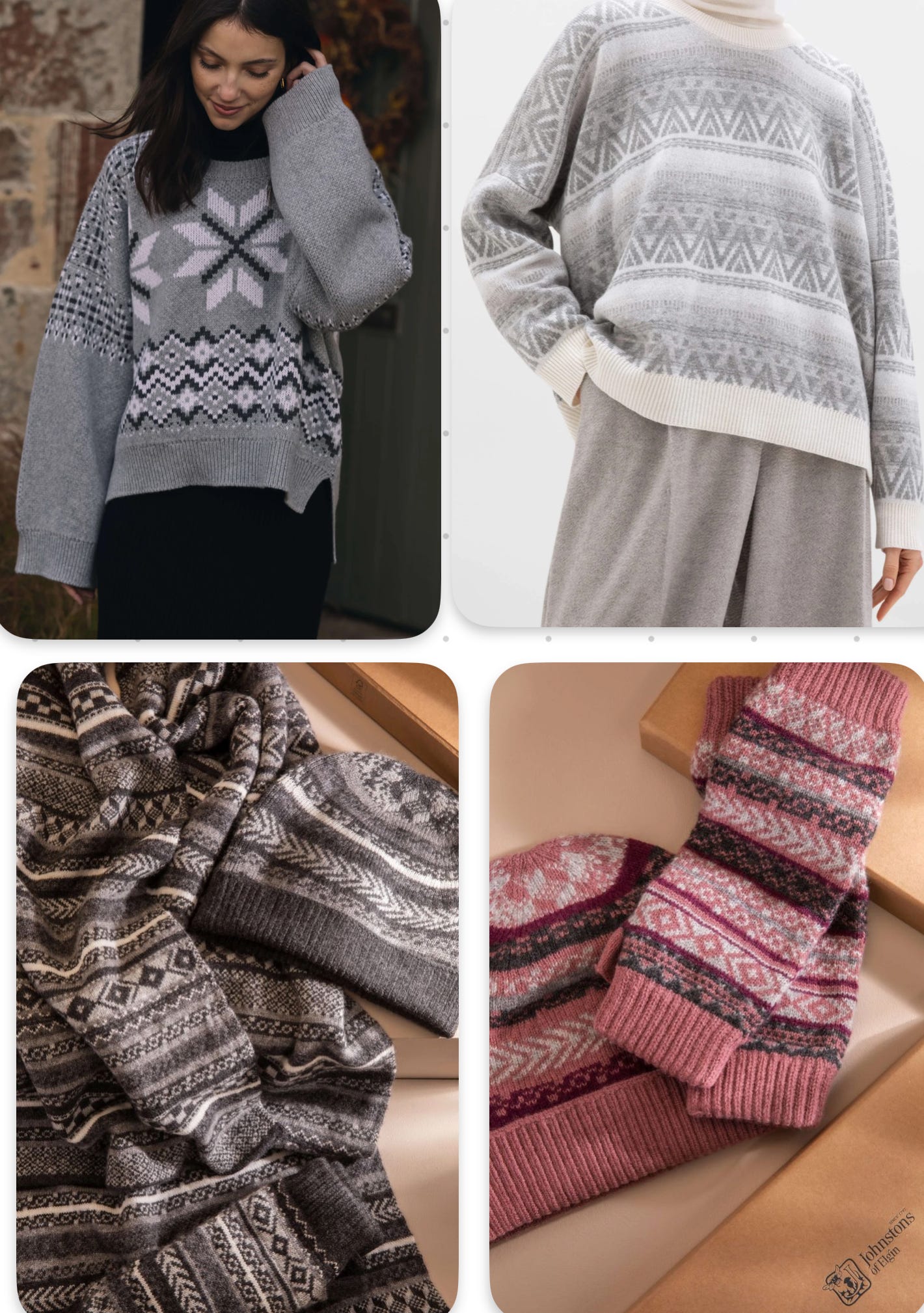
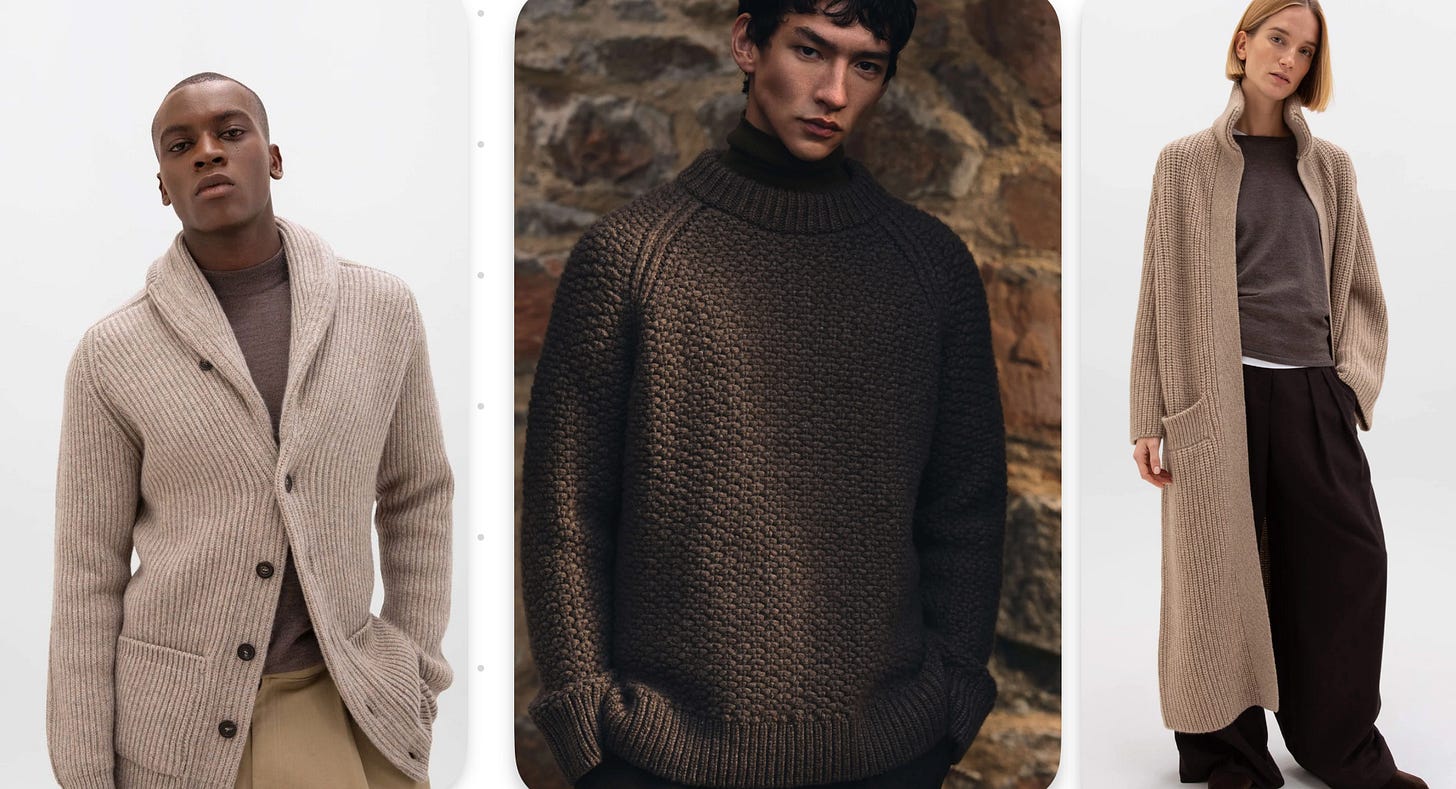
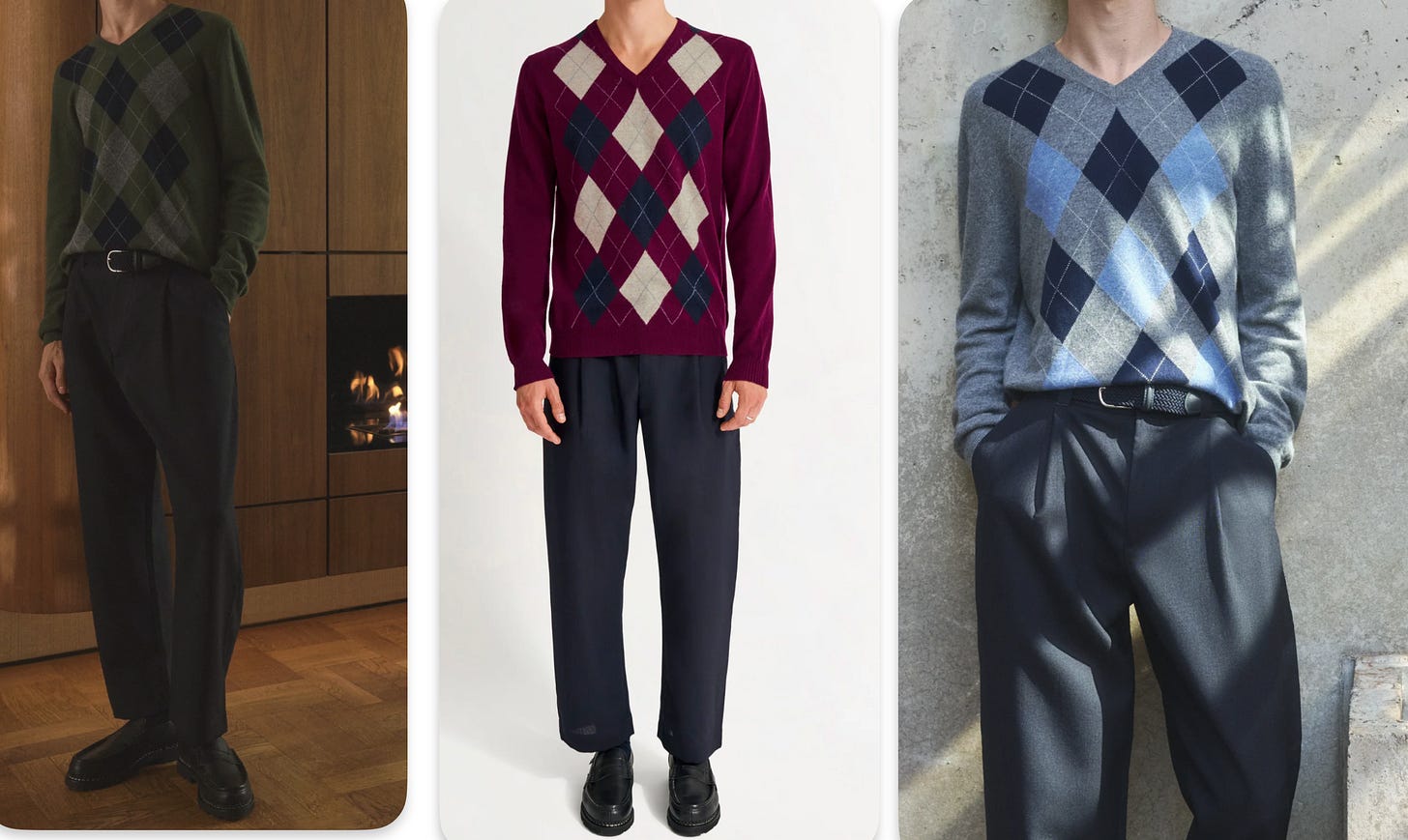
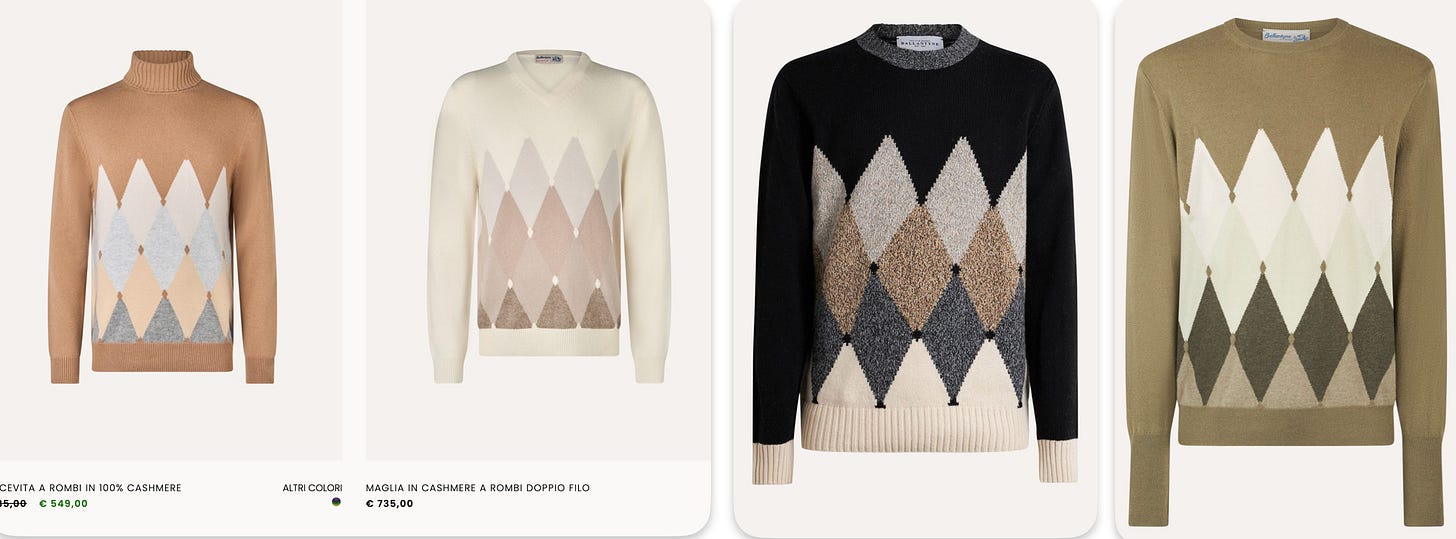
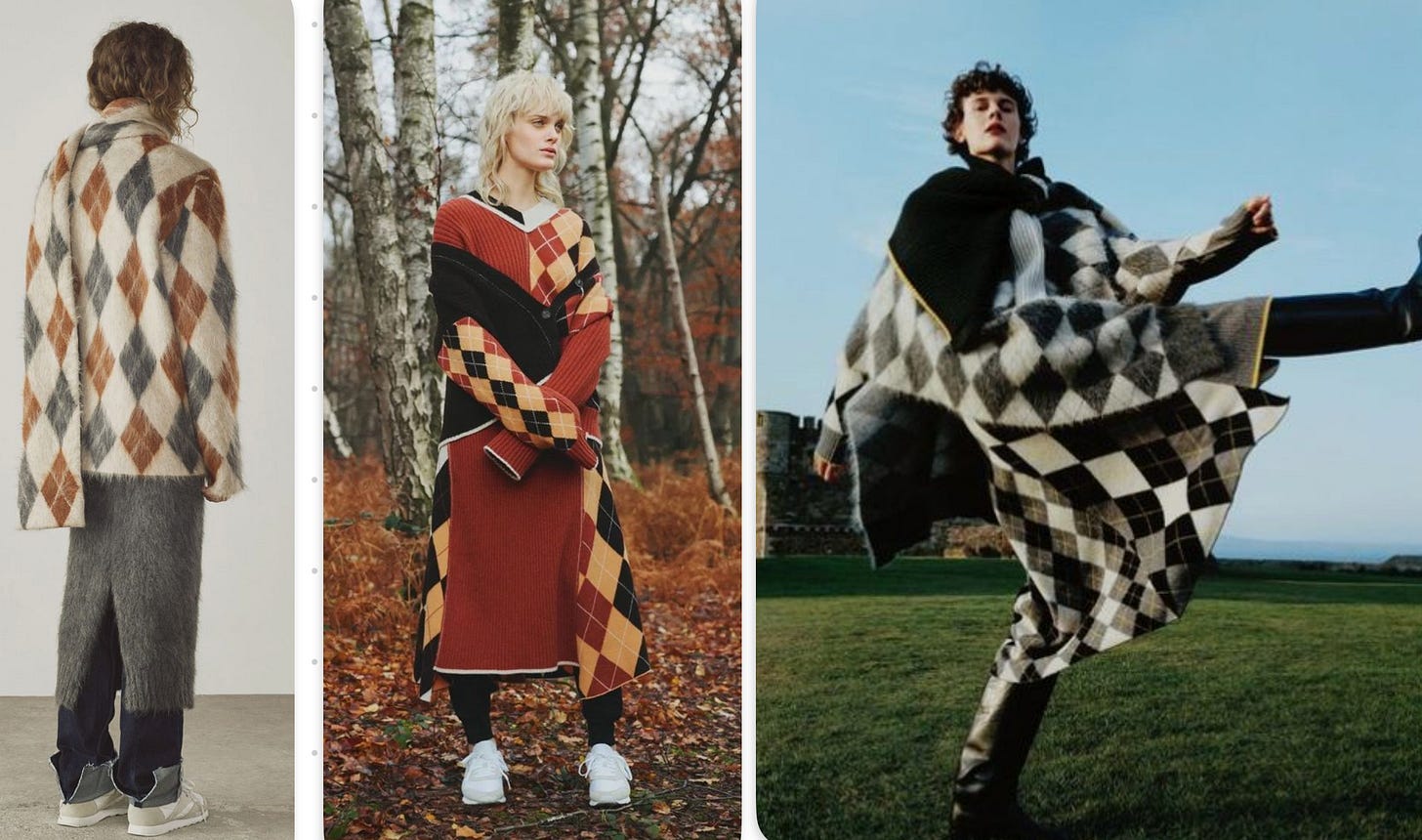
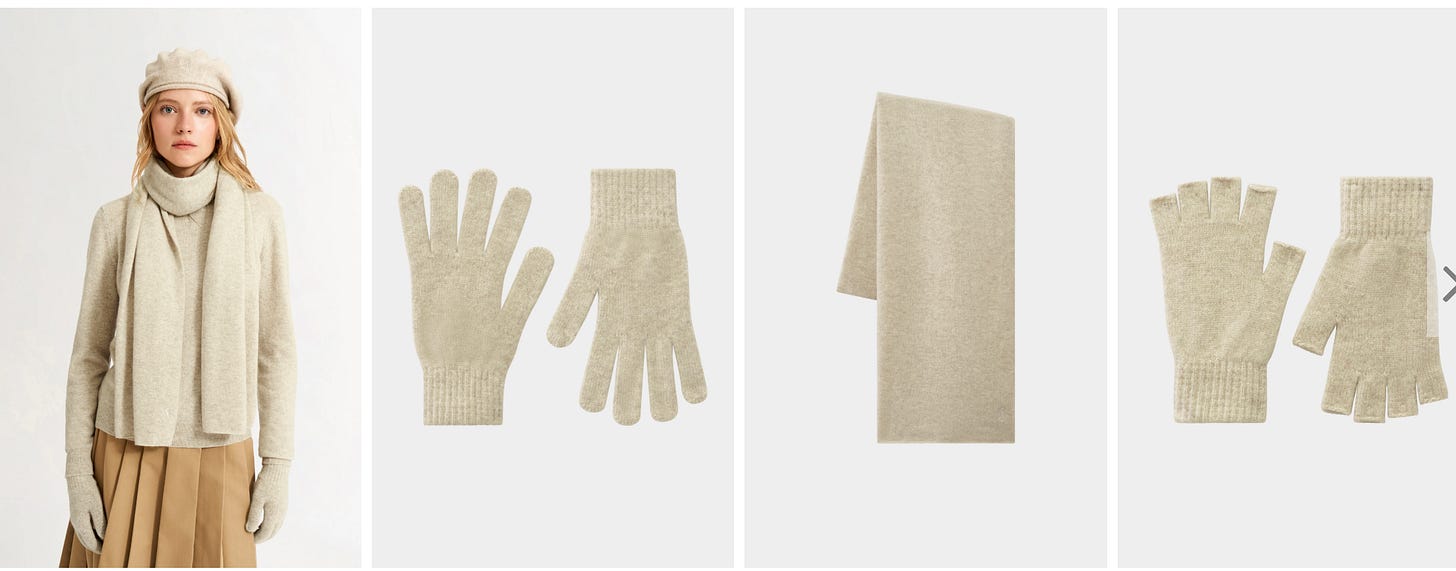
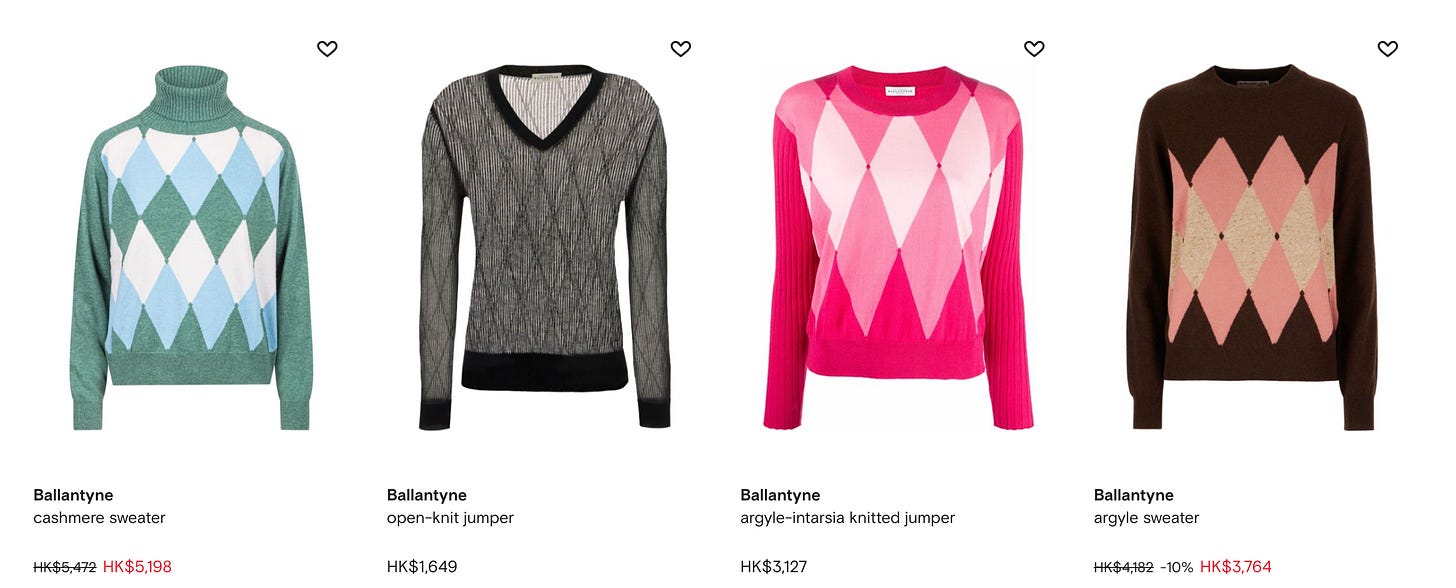
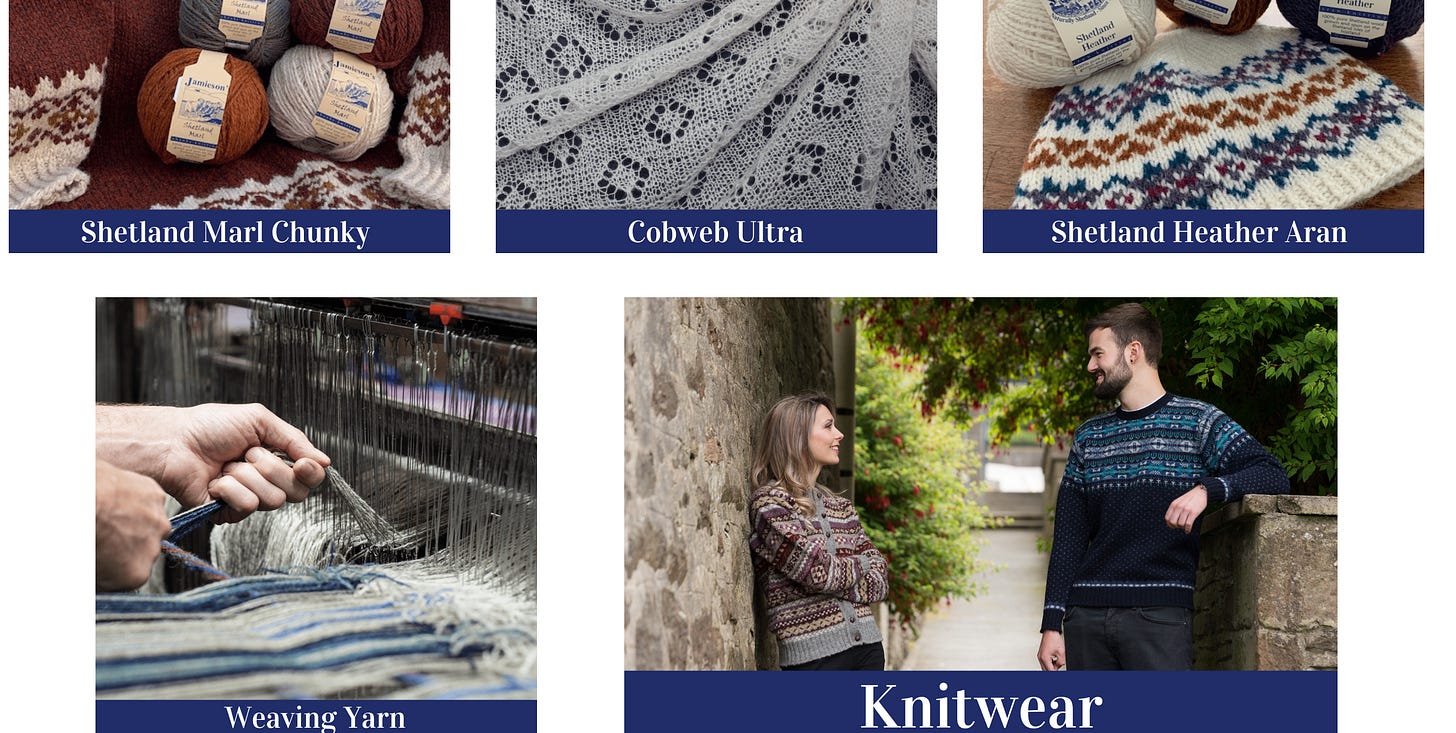
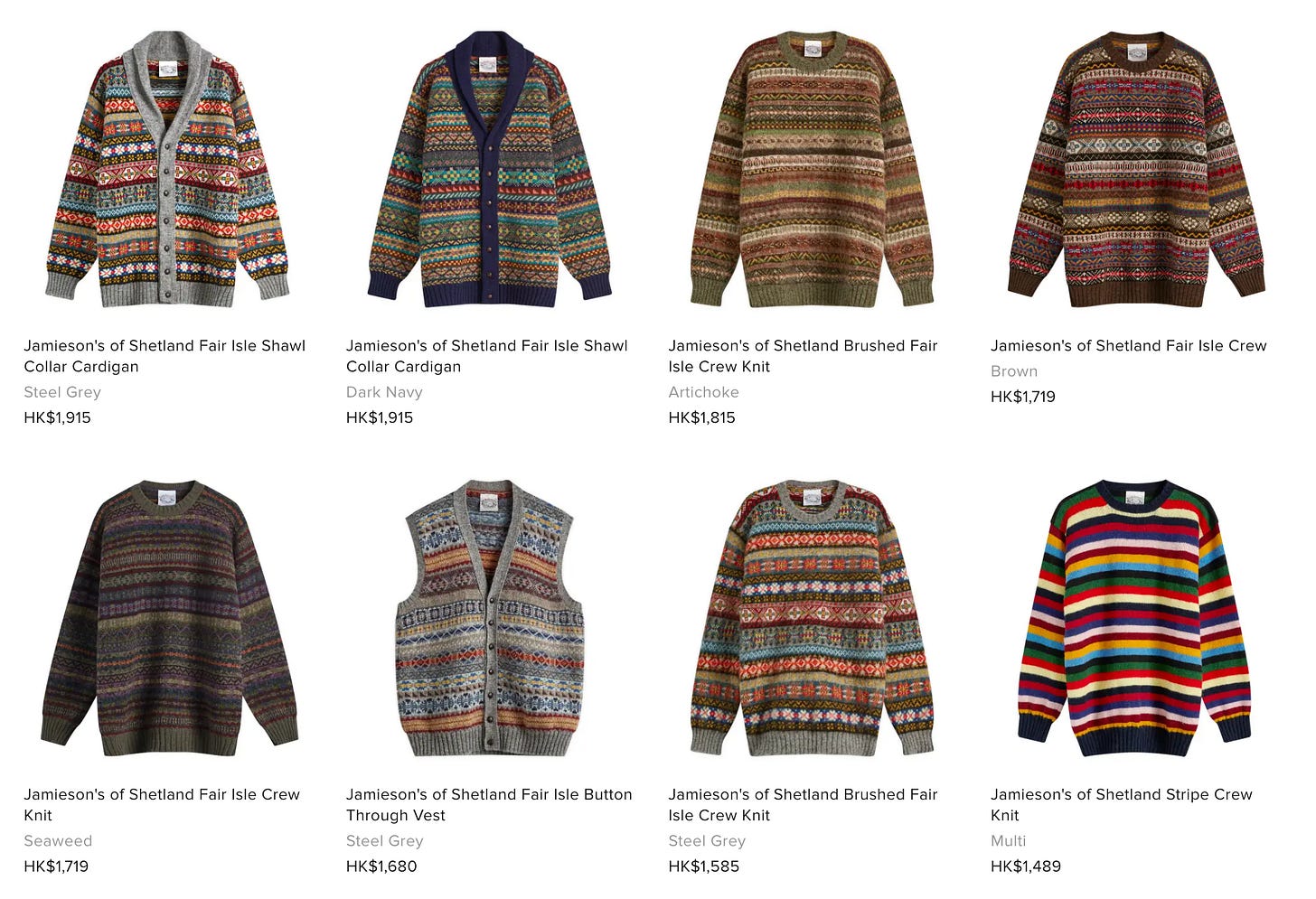
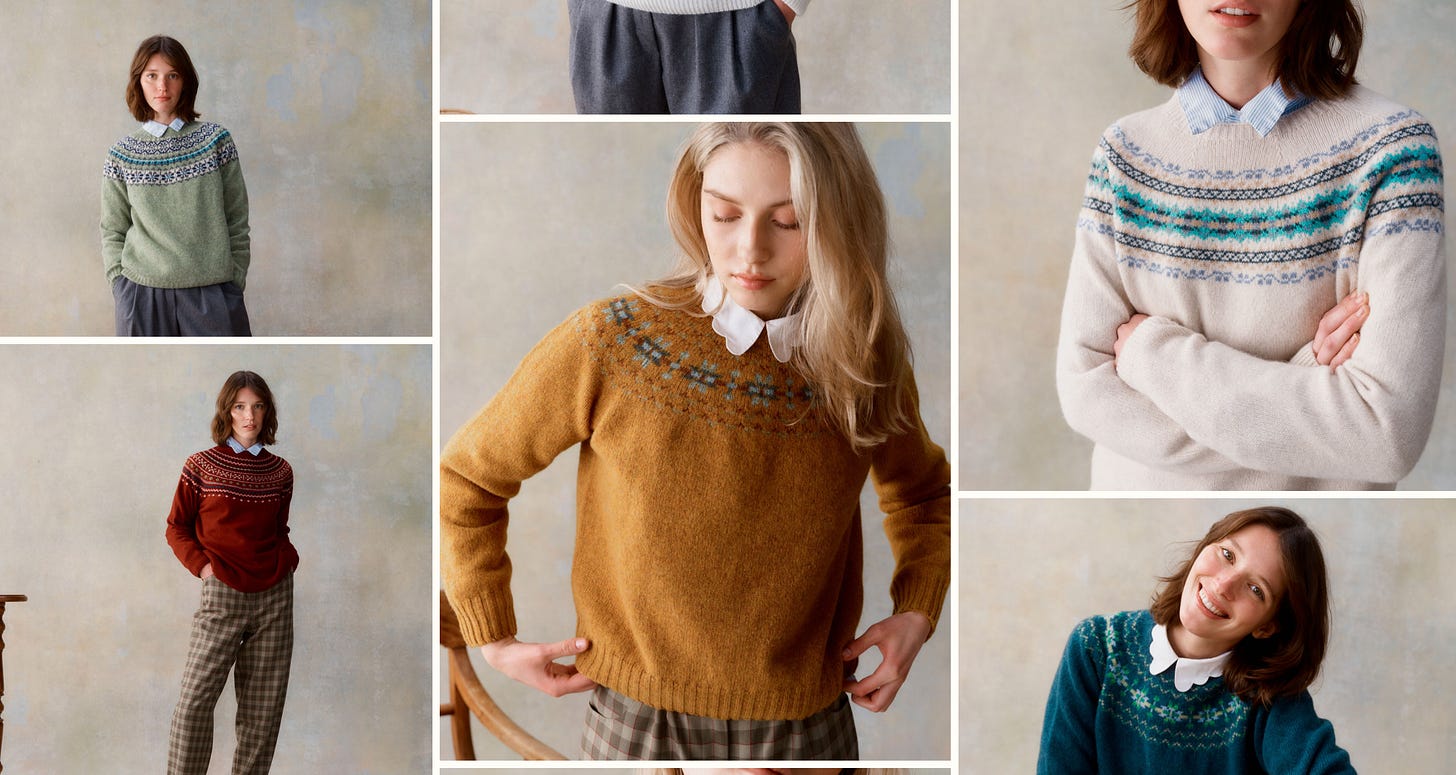
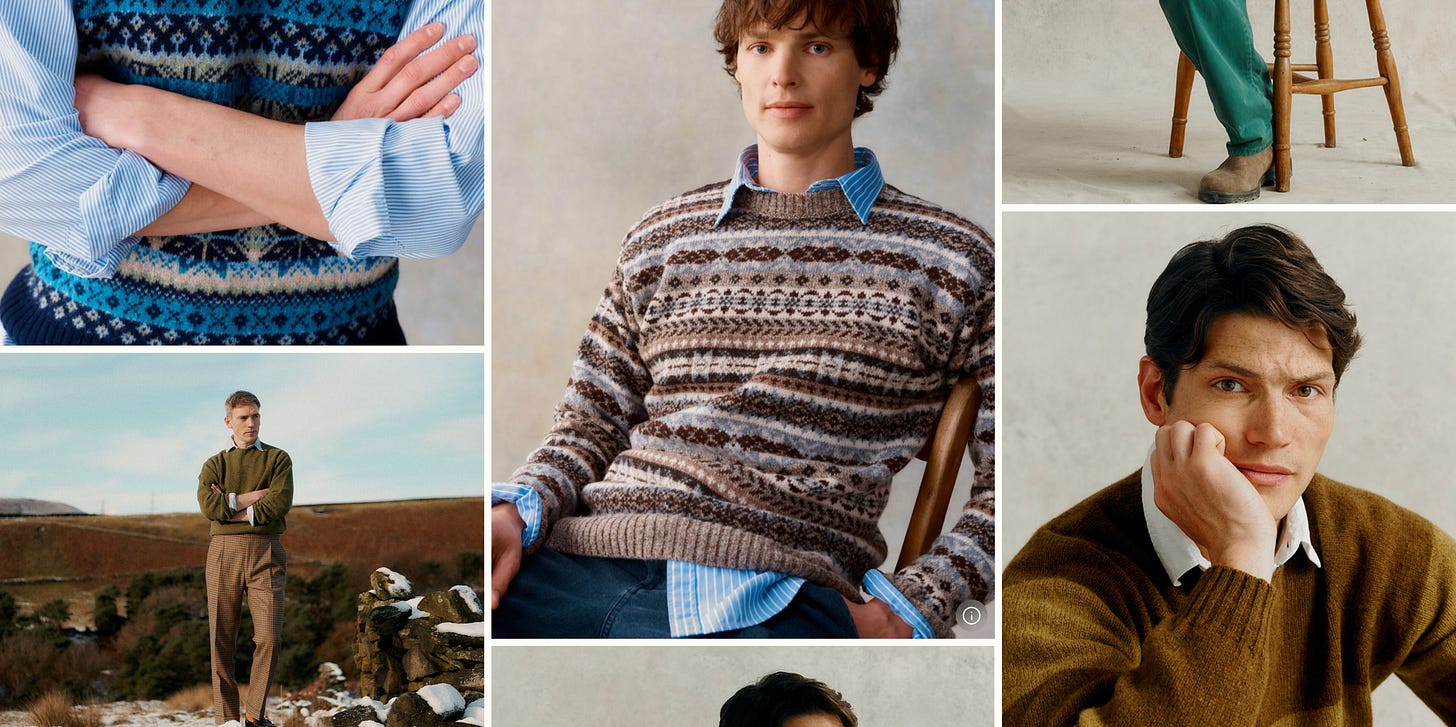
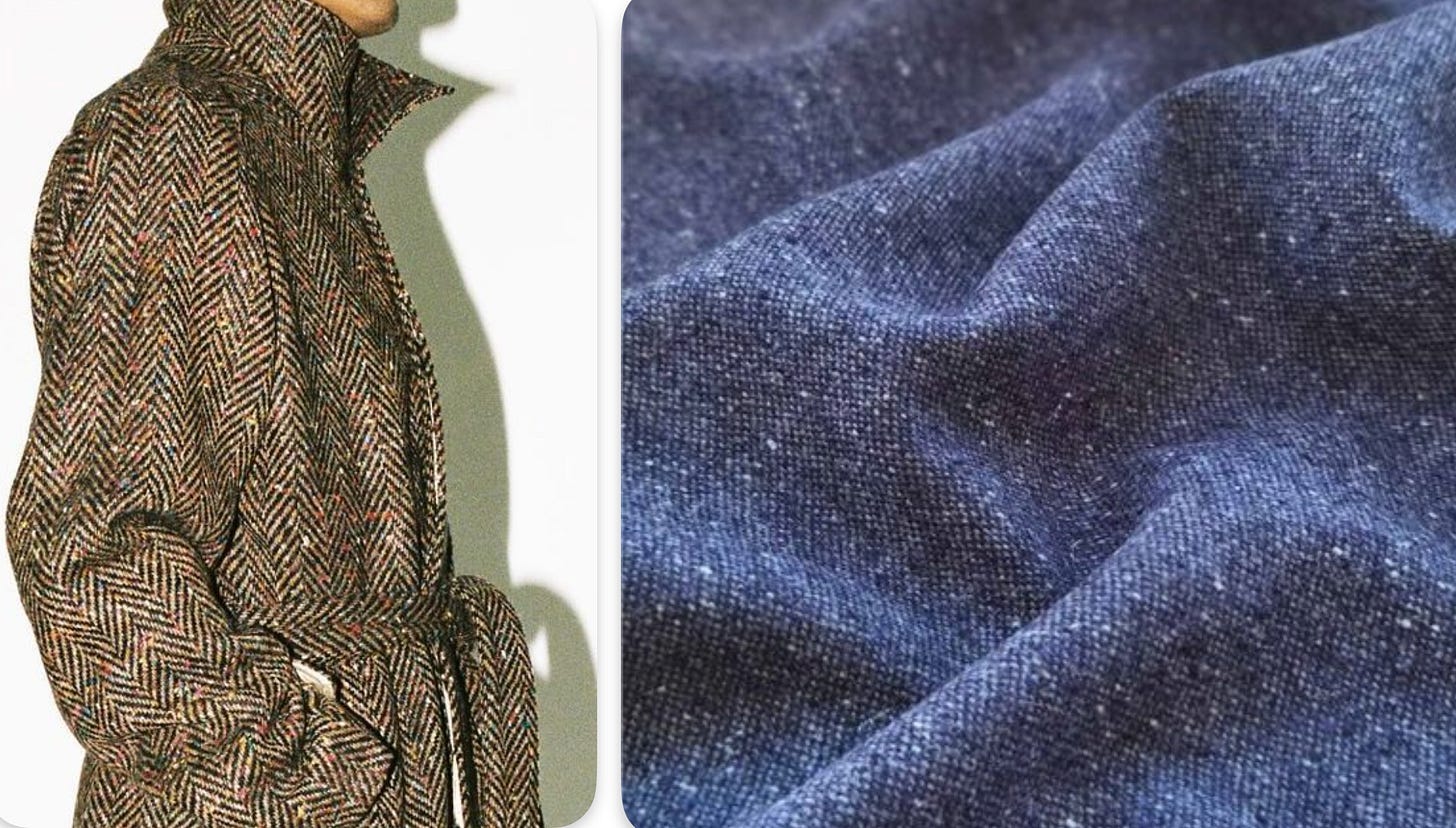
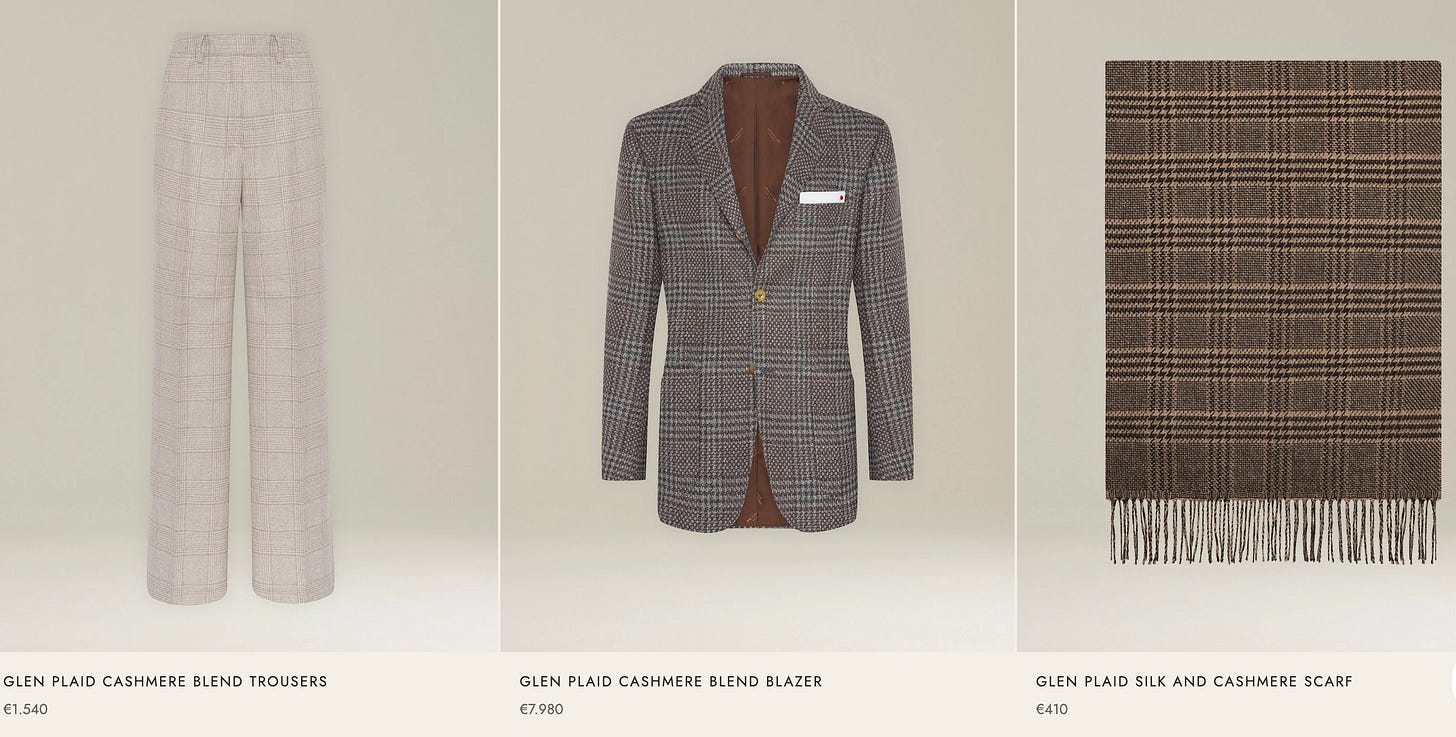
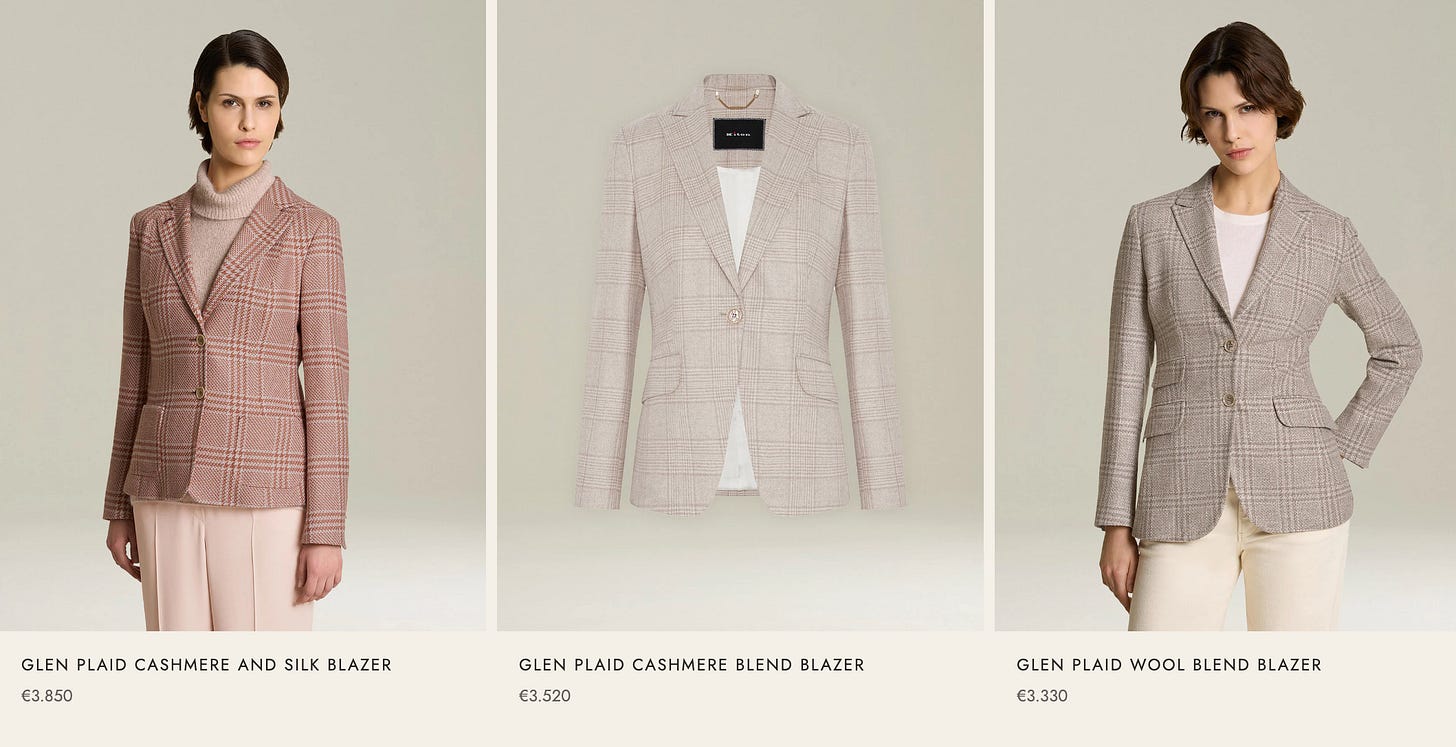
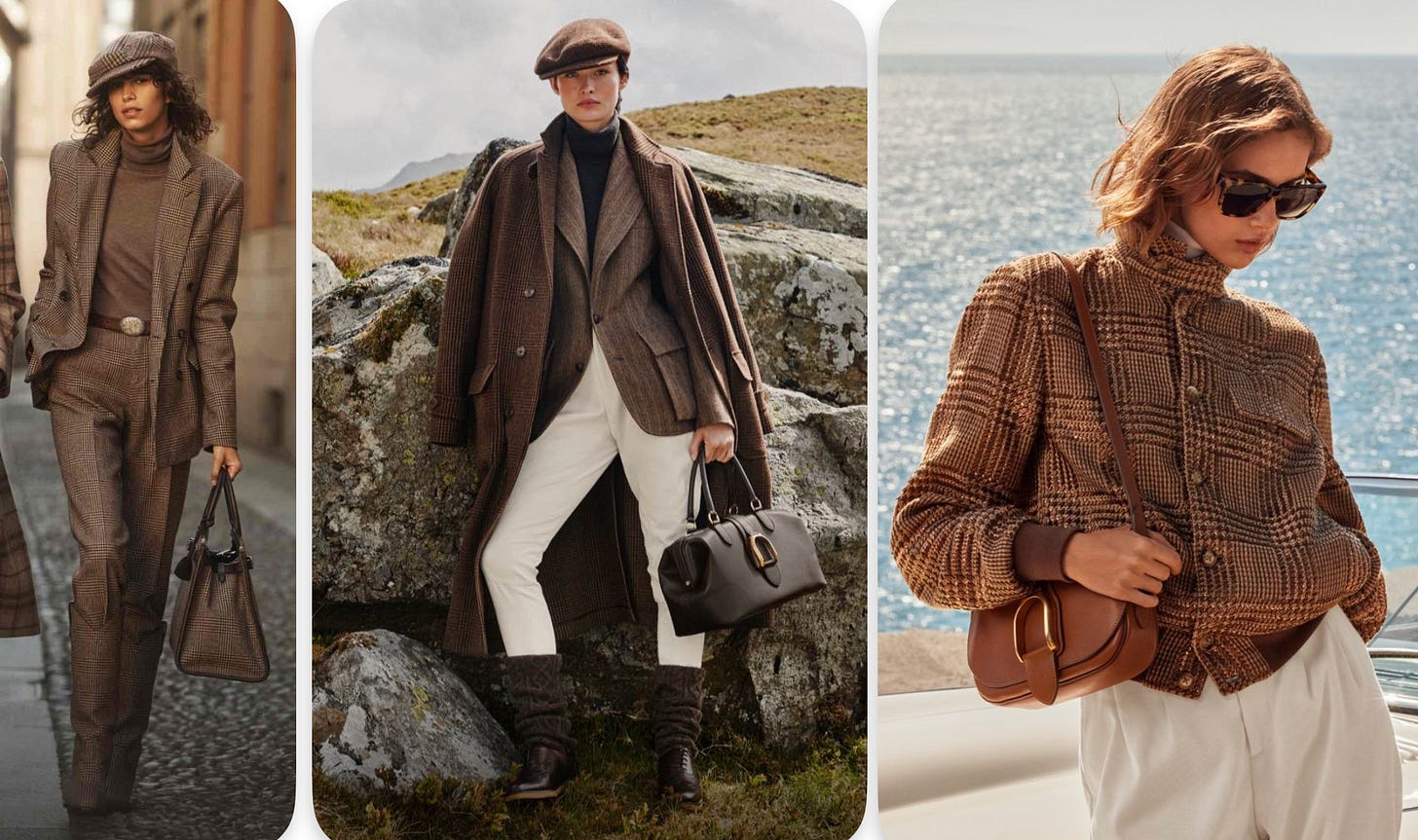
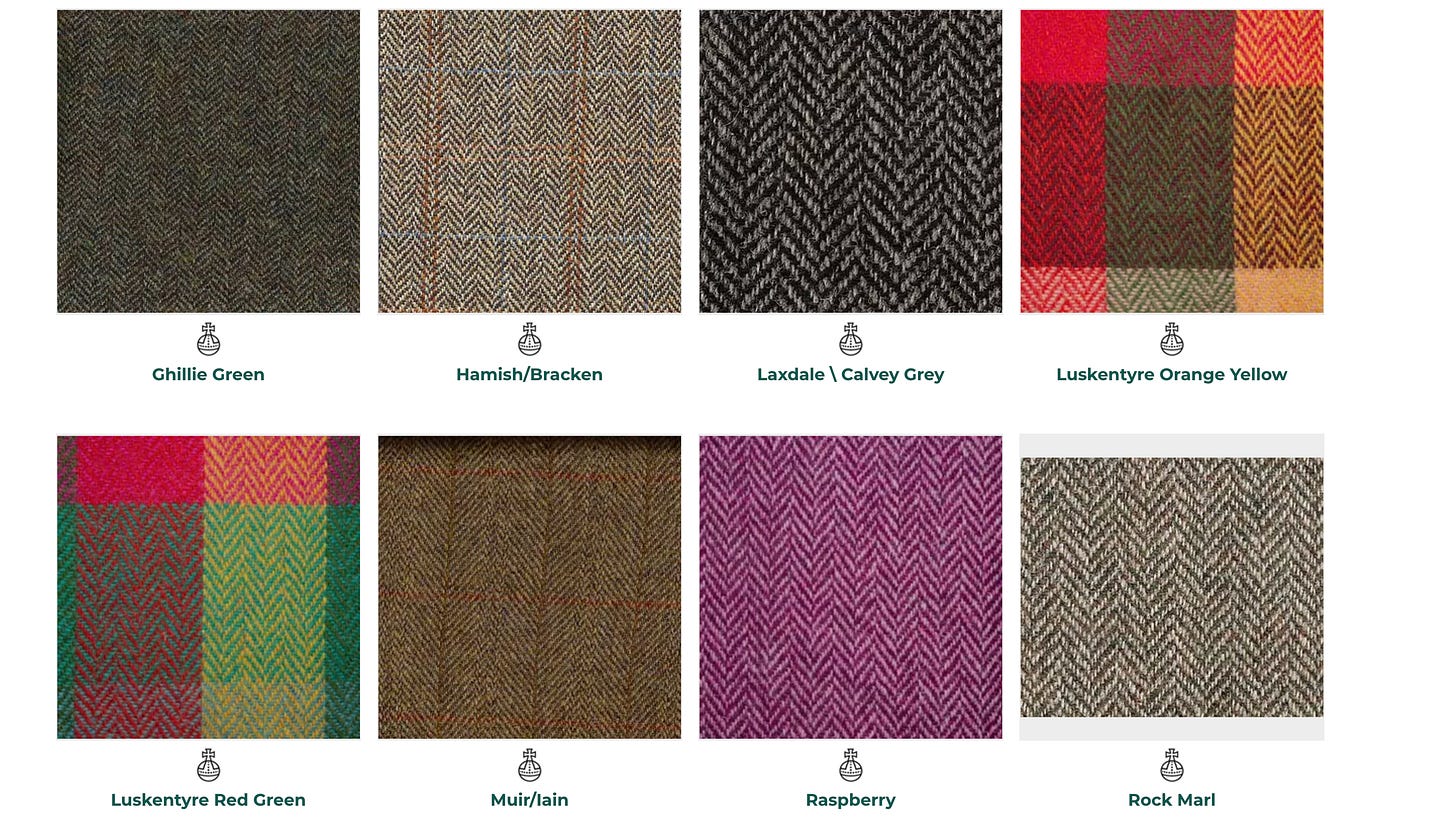
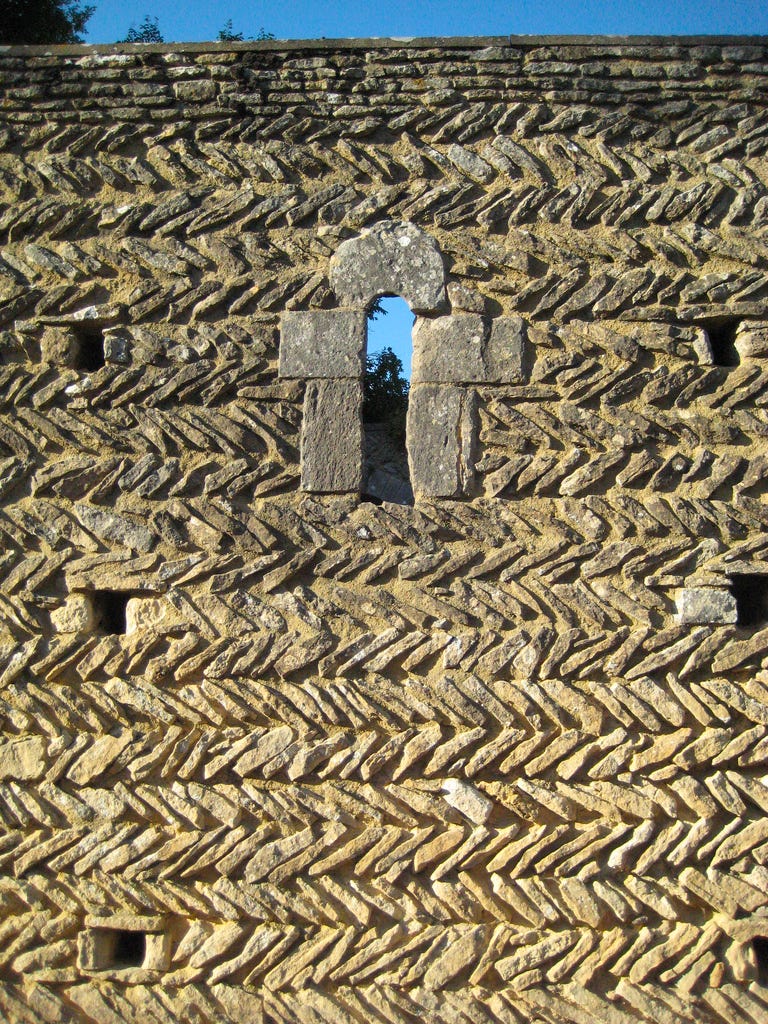

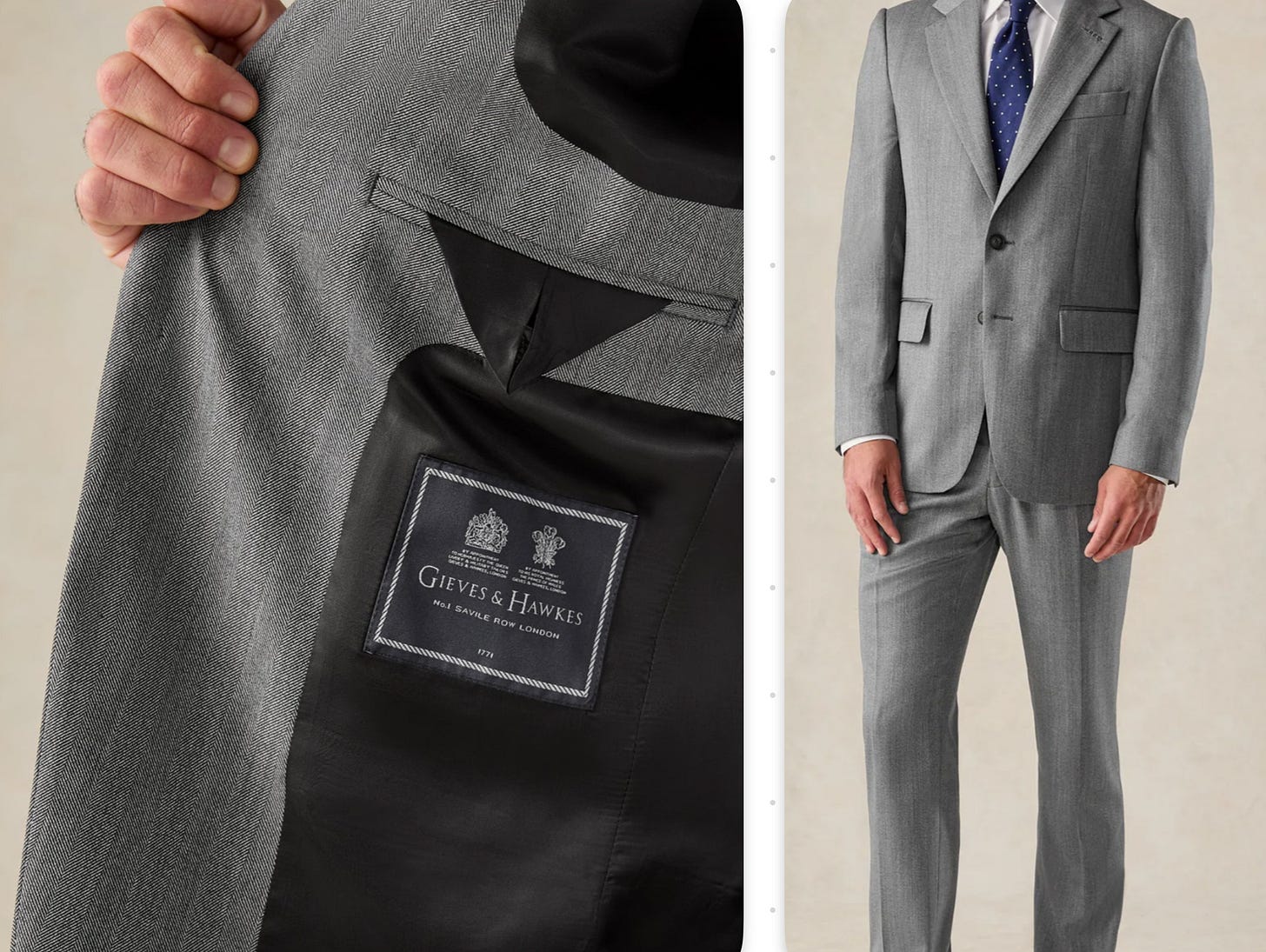
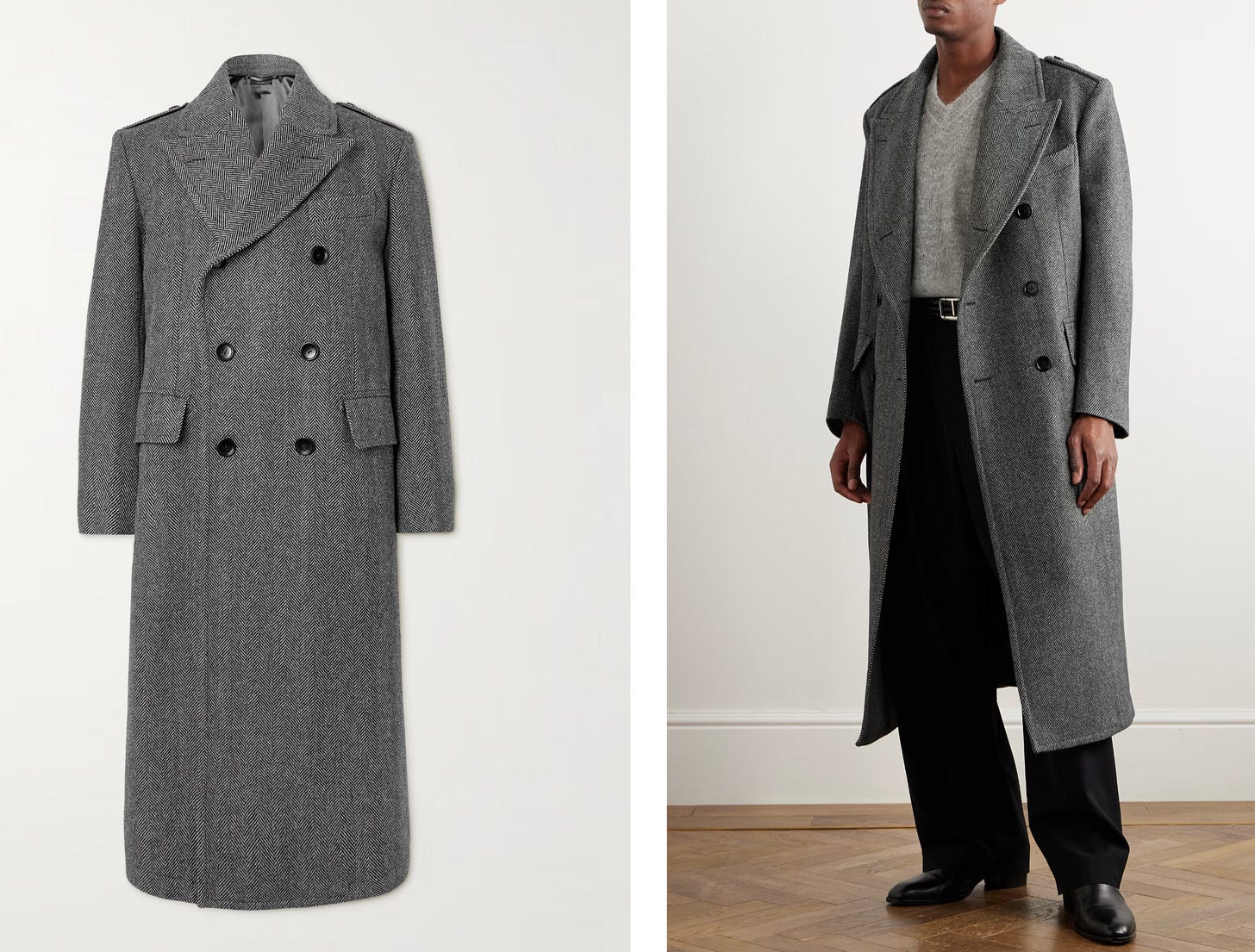
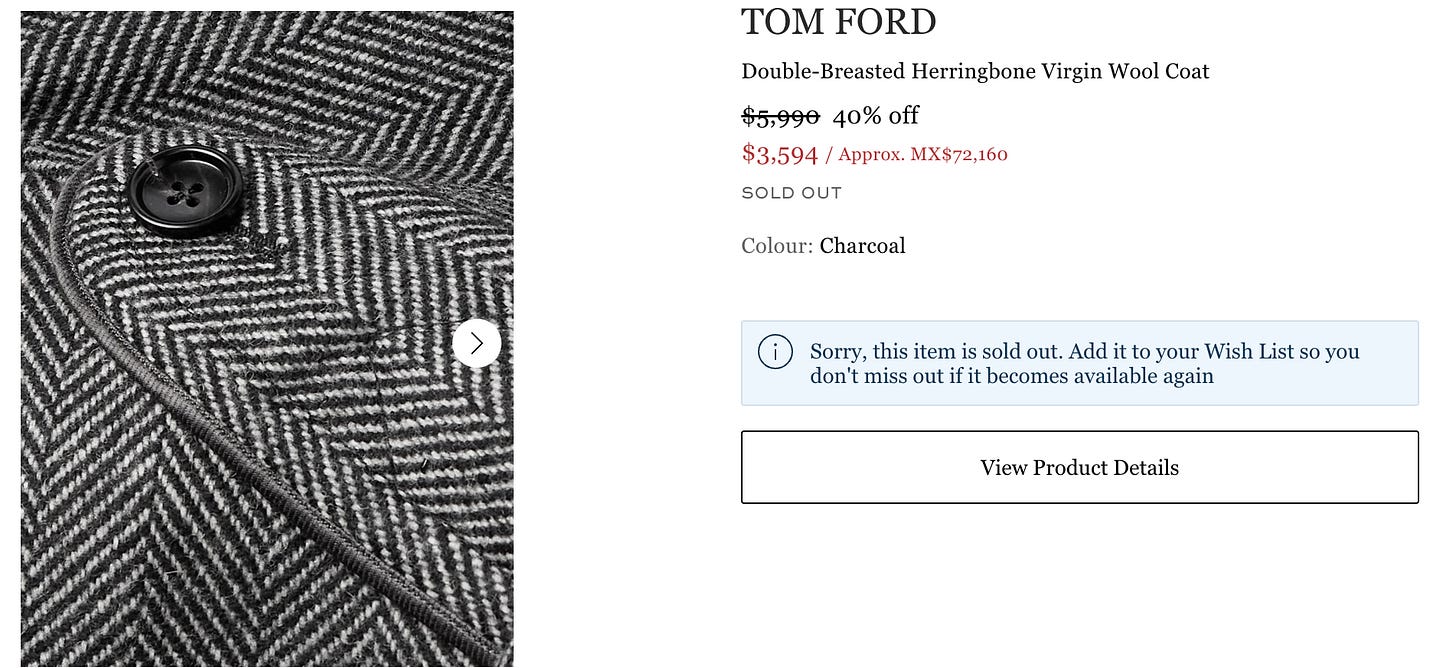
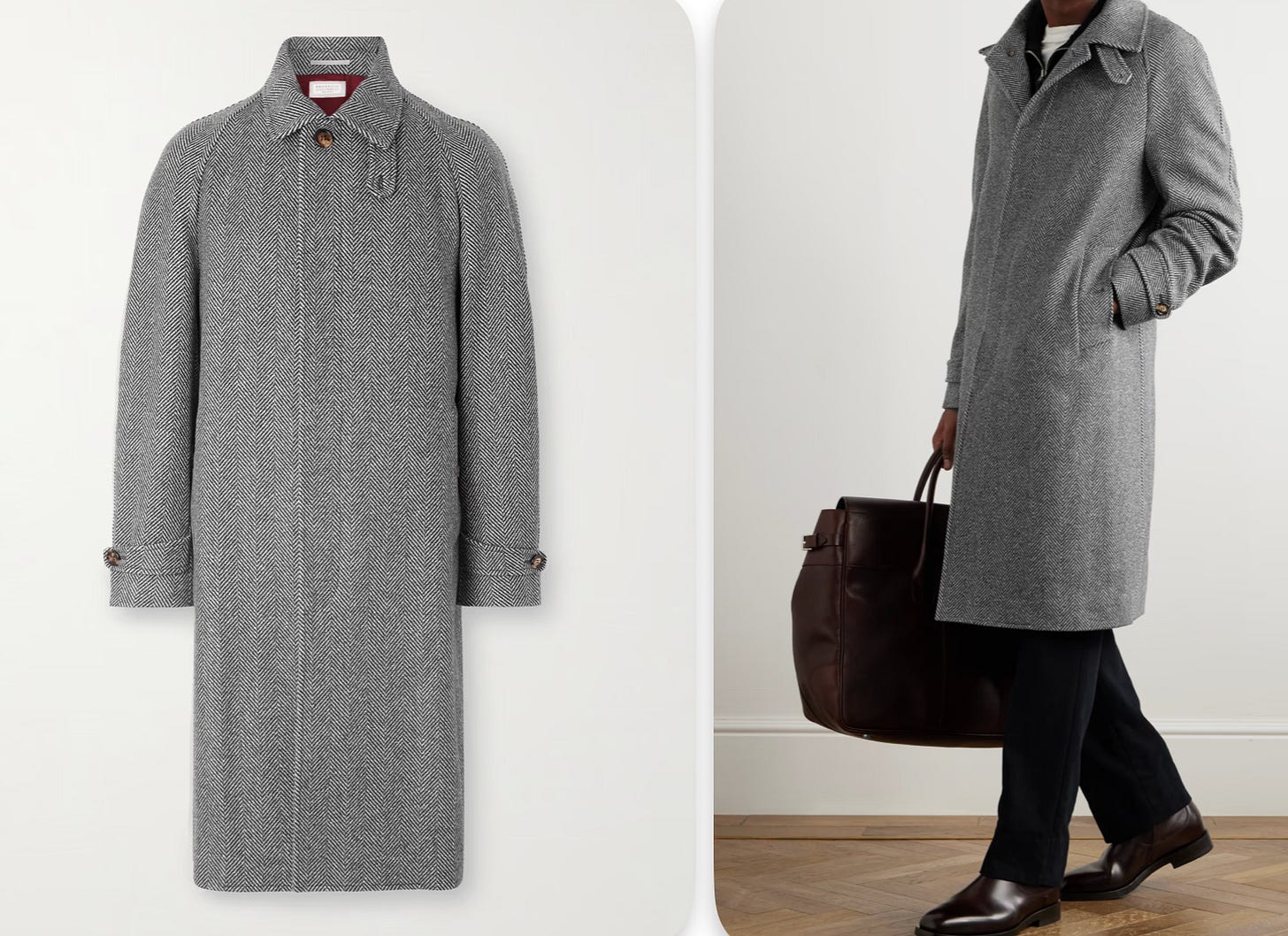
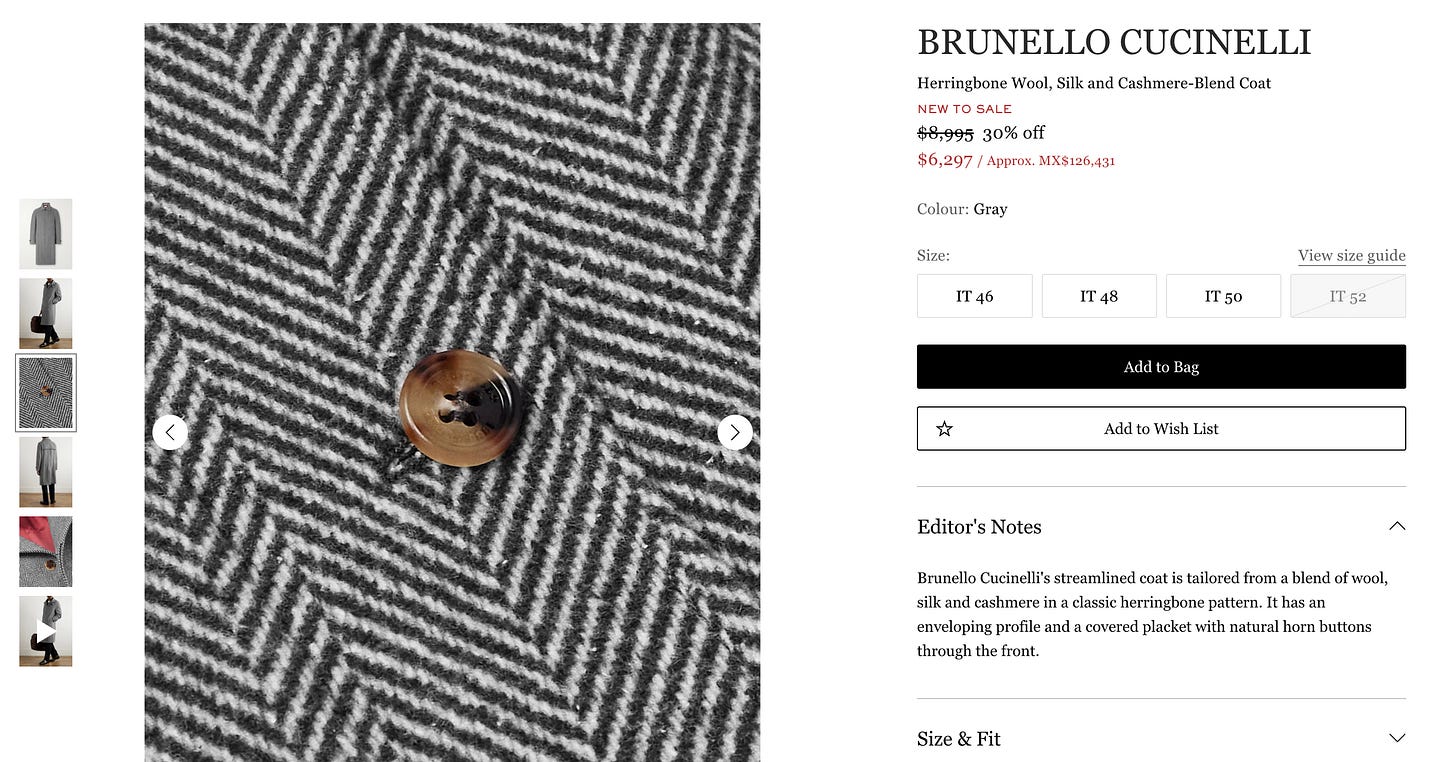
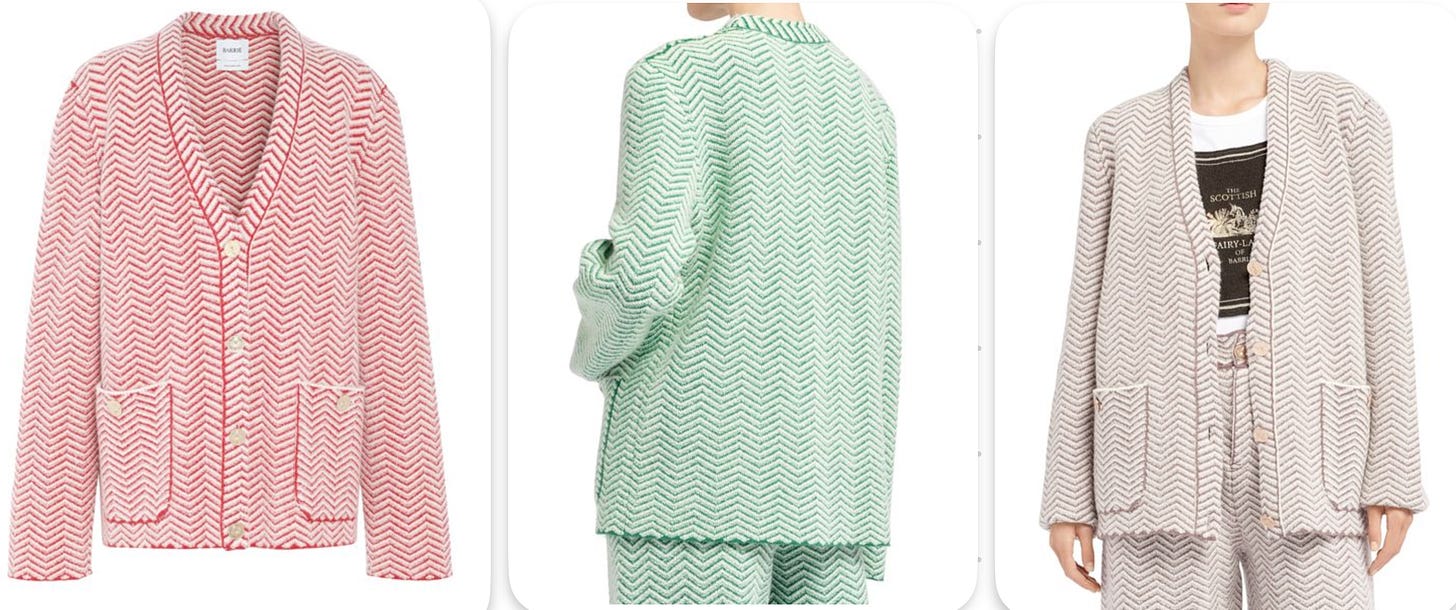
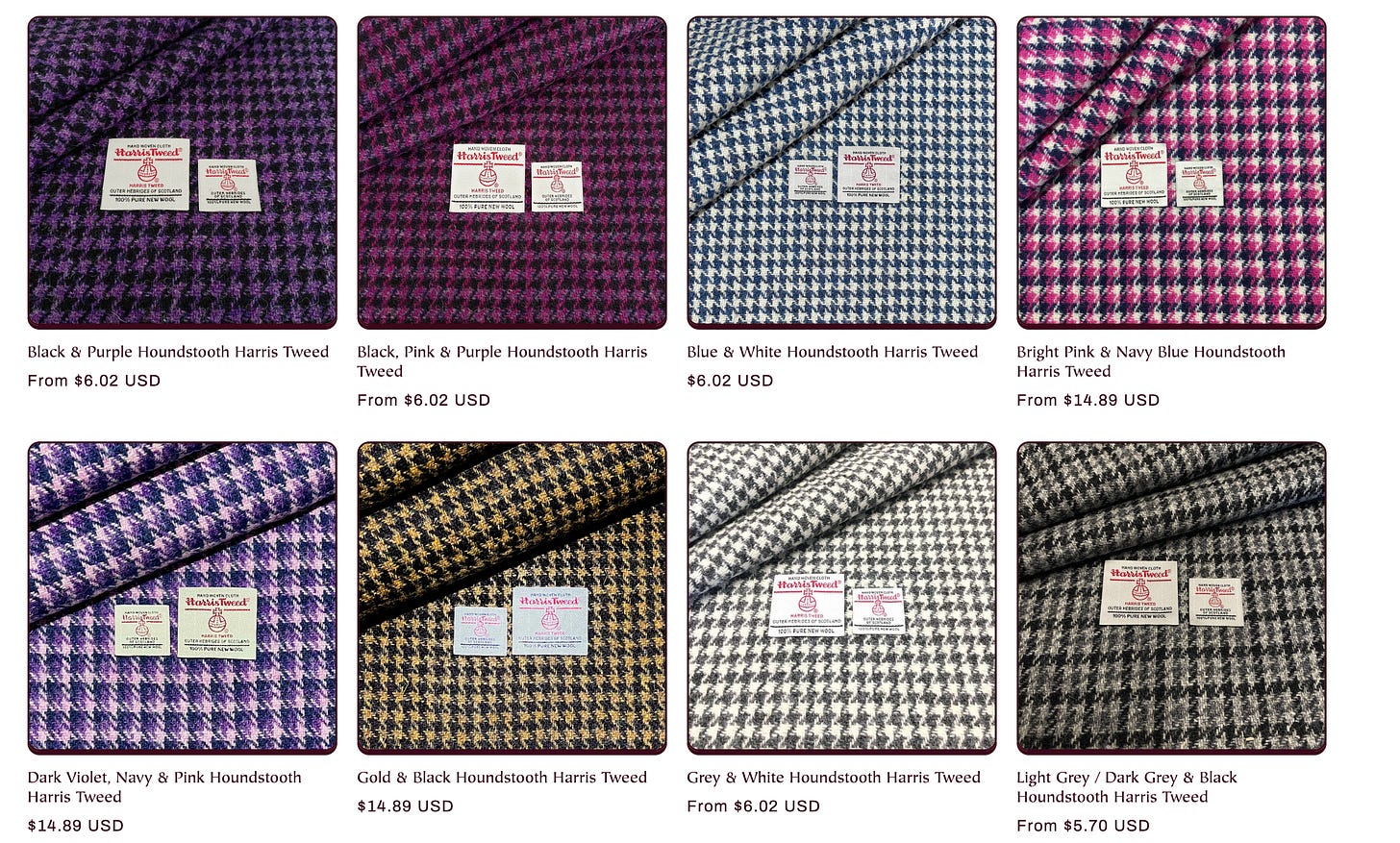
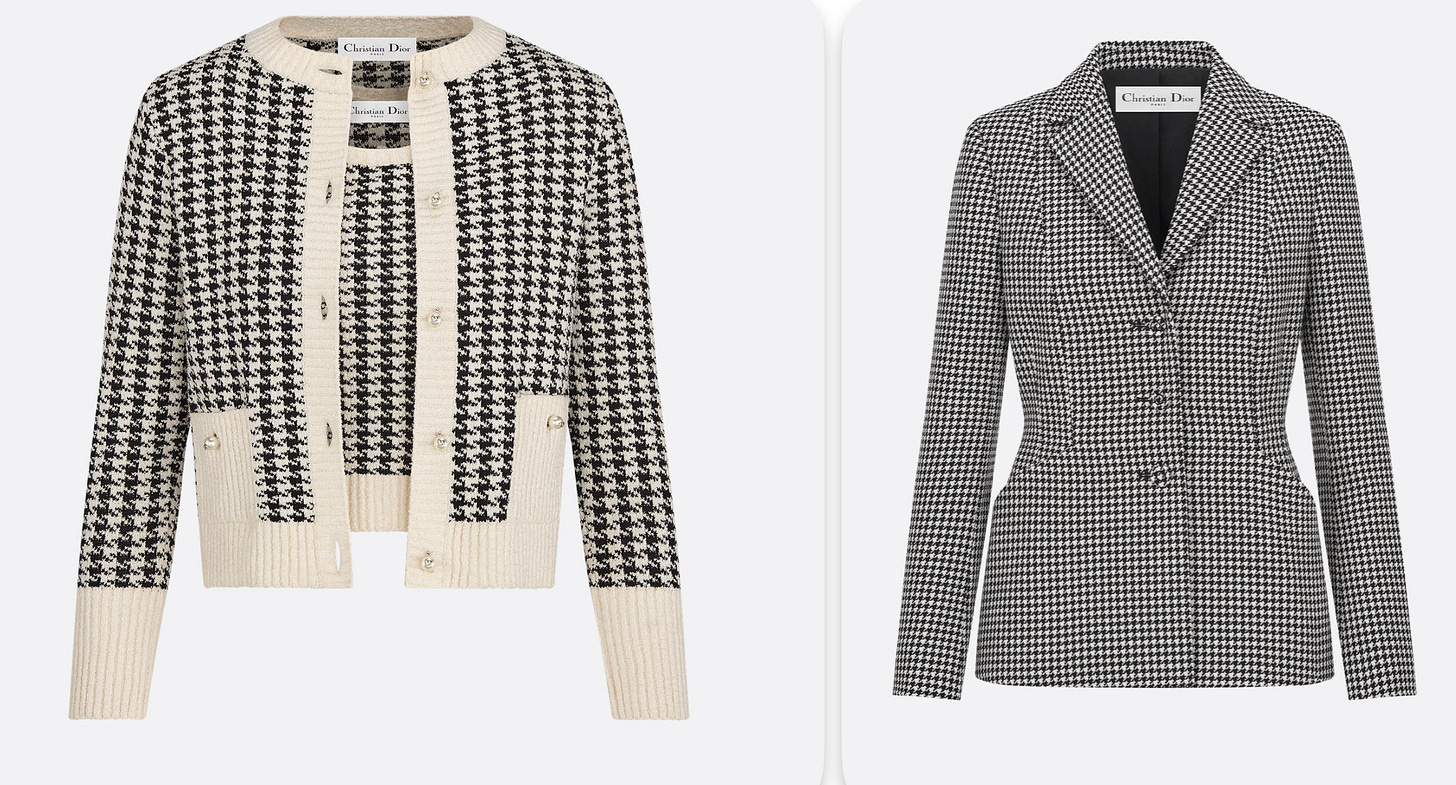
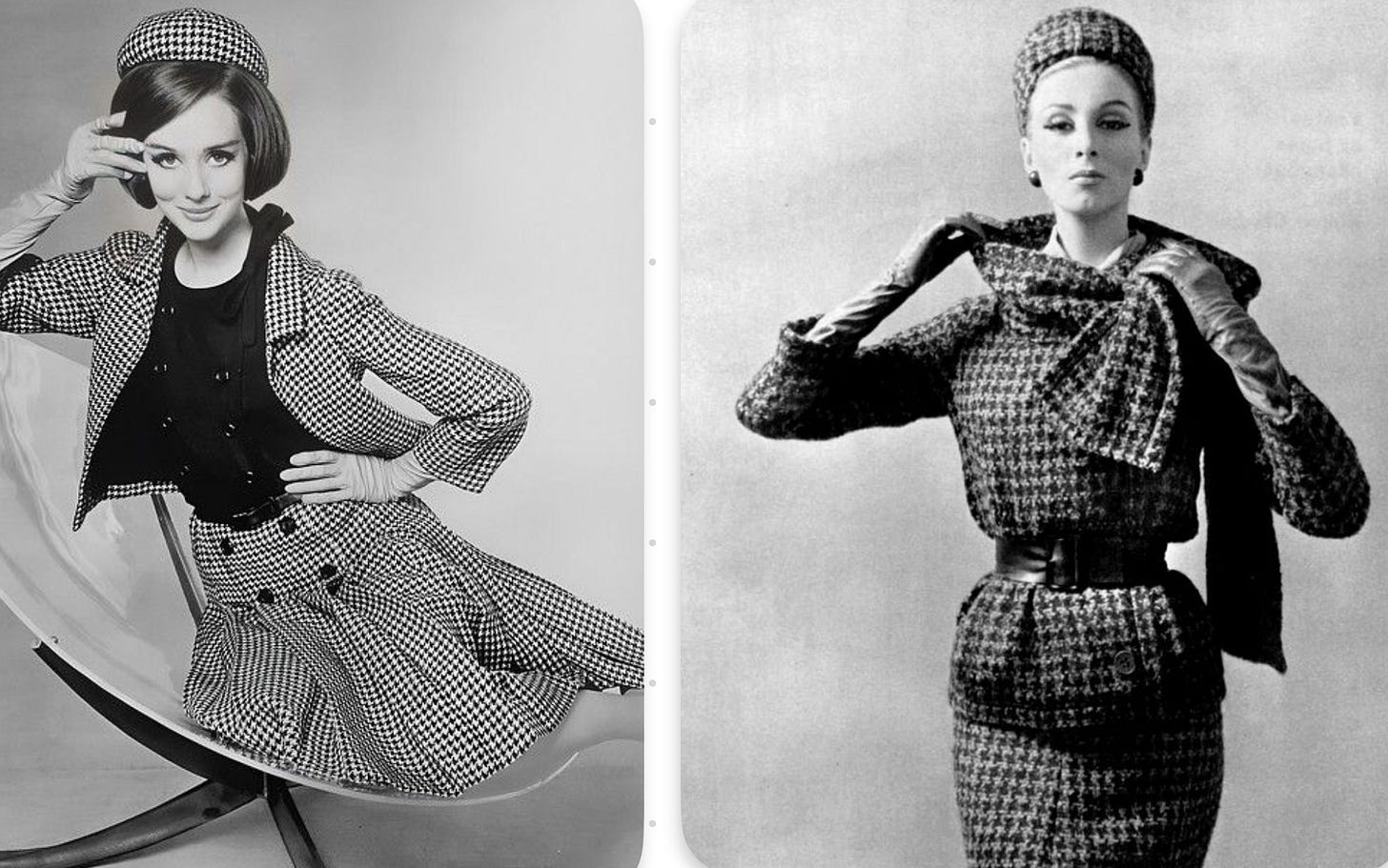
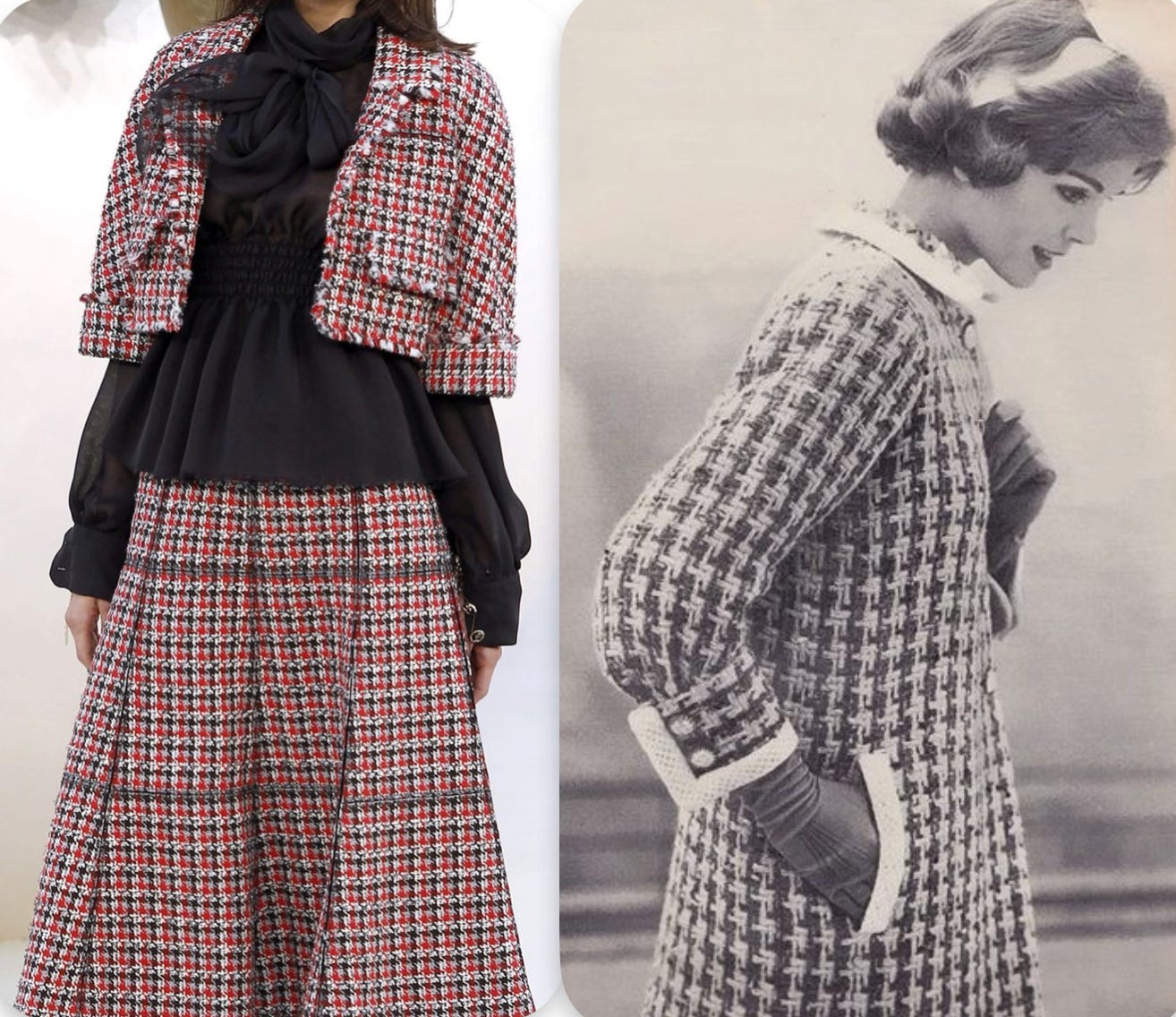

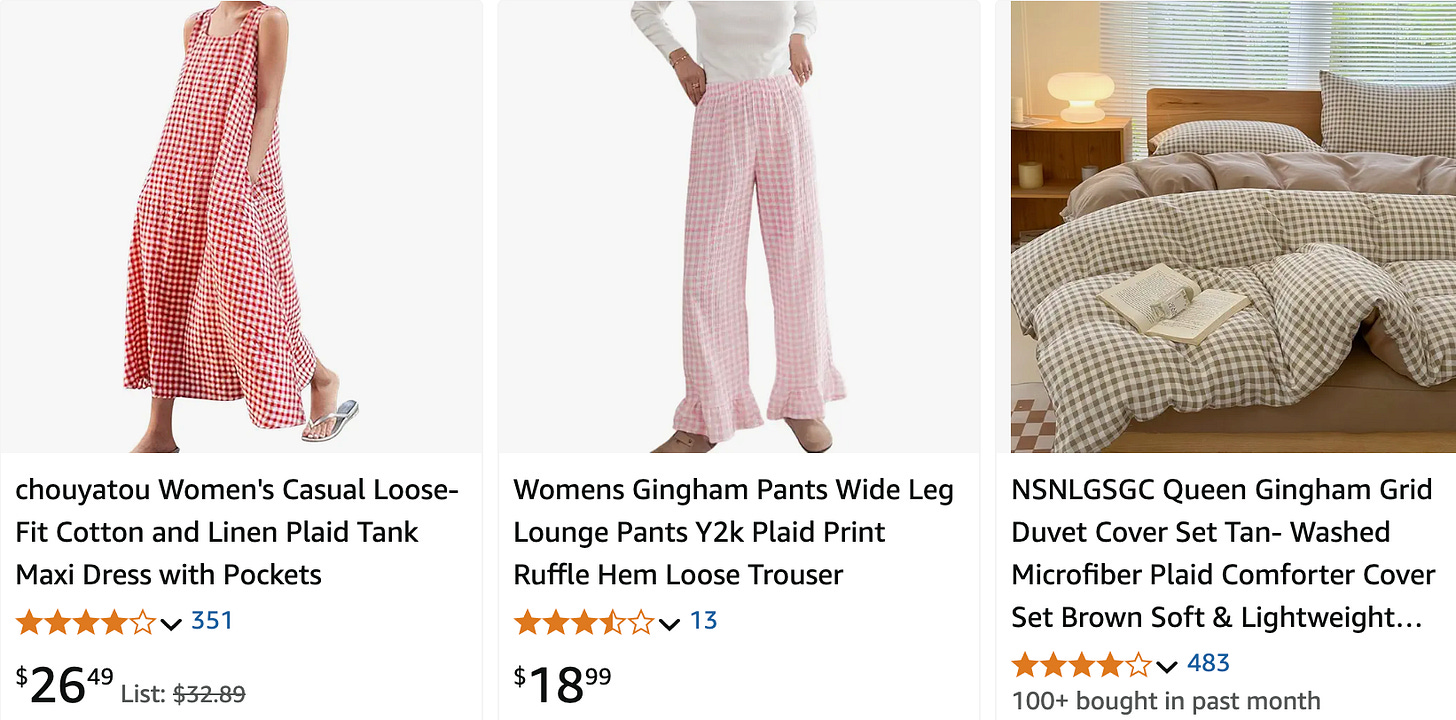
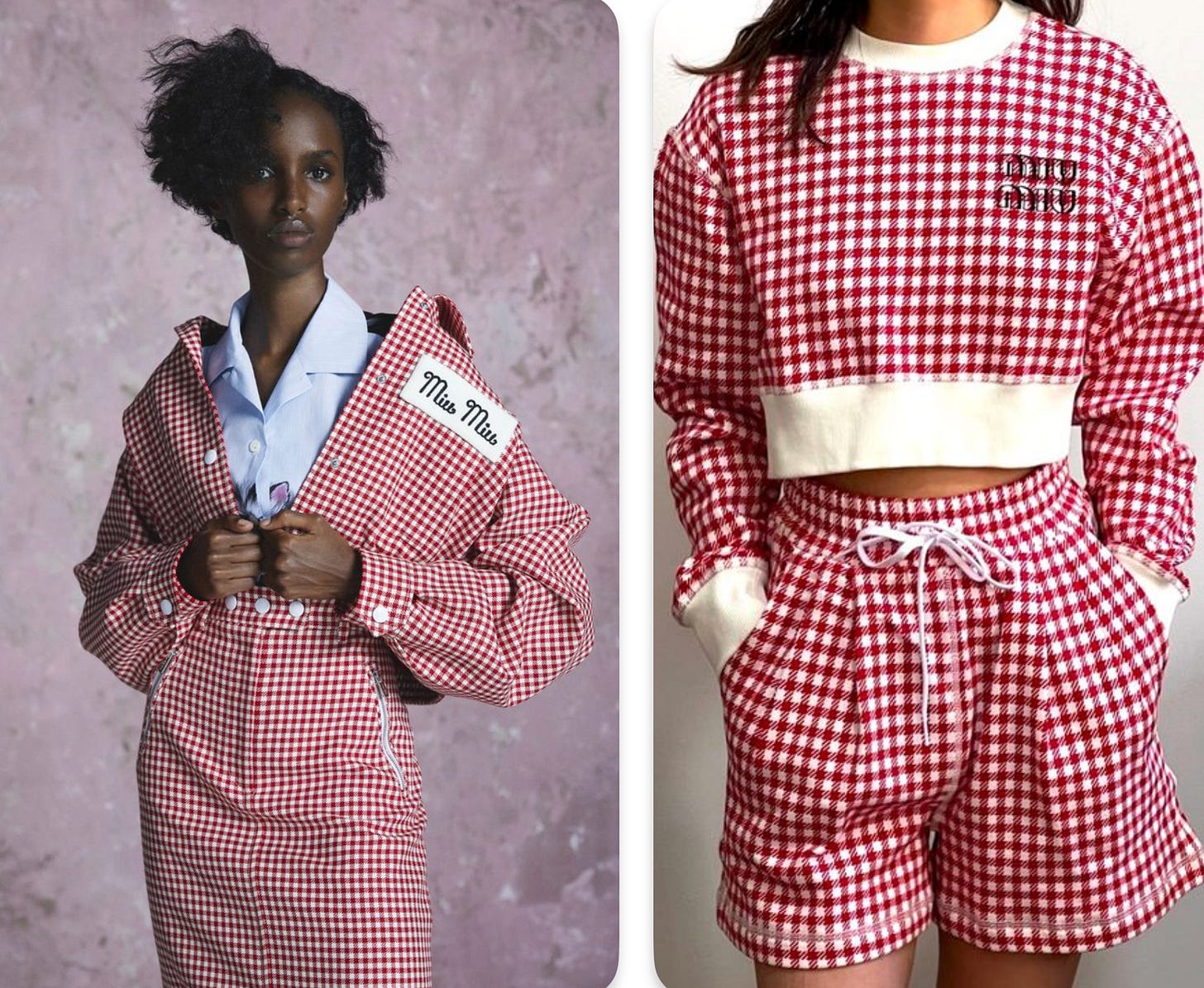
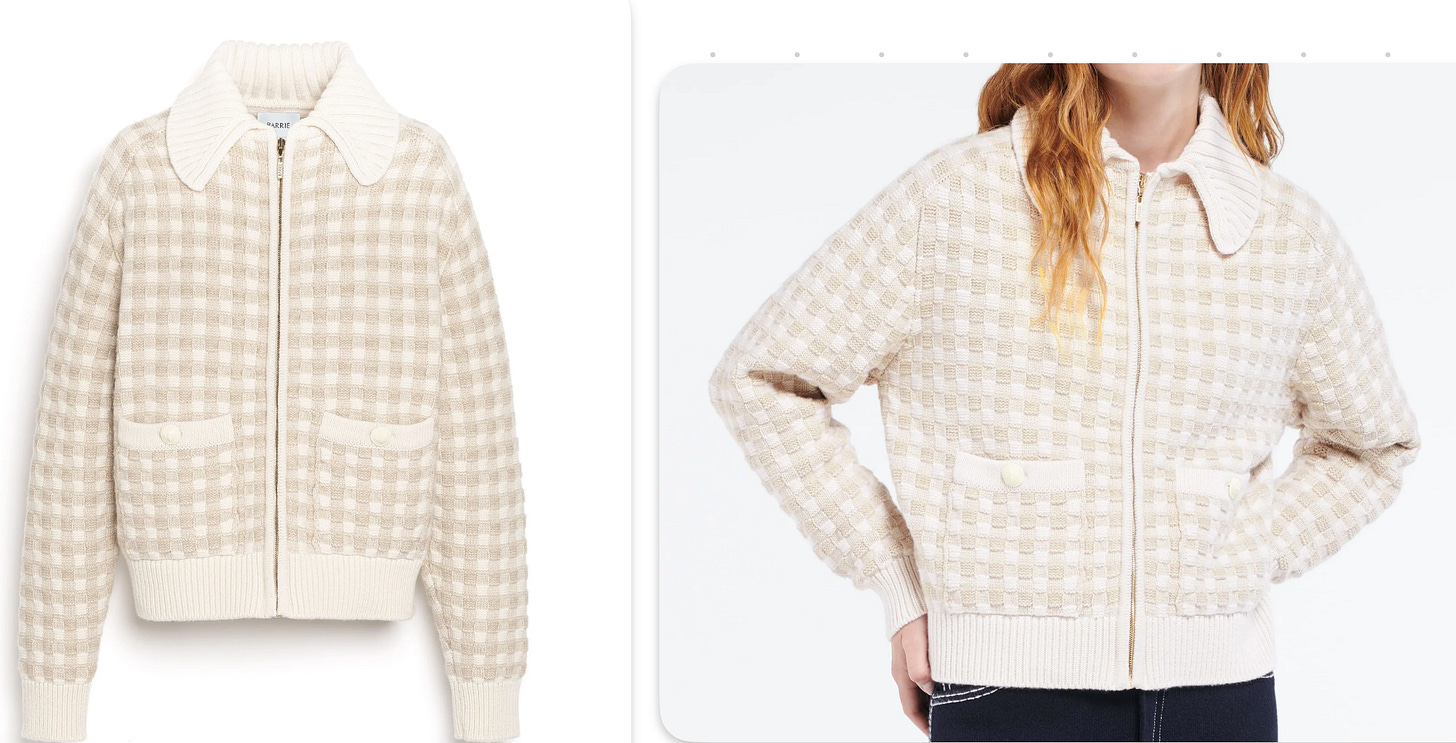



my latest articles abouy Malo, this italian cashmere brand is good at knitting . I've showed some delicate knitting in the new article :
https://pamperherself.substack.com/p/malo-elegant-florence-cashmere-brand